Pauline Rivers
Pauline Rivers
Danseuse, Maitresse de ballet, choreographer and creator of the lasting children’s ballet at the Blackpool Tower Ballroom.
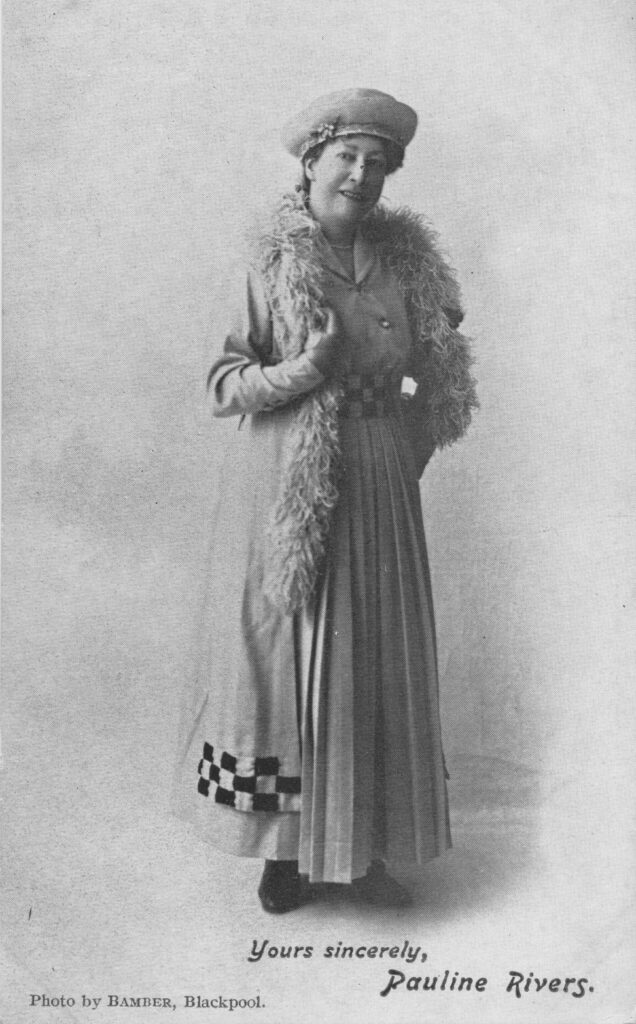
In the theatre industry publication, the Era of 27th October 1926; ‘Madame Pauline Rivers is a wonderful trainer of children. No one without a love of children and infinite capacity for taking pains could rehearse and put on such finished productions, for it is an entirely different matter to stage a production on a ballroom floor than to put the same thing on a well-equipped music hall or theatre stage.’ A quote which perhaps reflects the transitions of the ballet productions put on at the Tower Ballroom, Blackpool to those same providing the interludes of the varying pantomime stages while performing on tour throughout the country, and reveals the high regard in which Madame Pauline Rivers’ name is held.
‘Dancing is really a very healthy exercise if it is not overdone. I do not say this because I am in the business; I merely express what I believe to be a fact.’ This is Pauline Rivers’ straight talking and simple justification of dancing.
Pauline Rivers was born Annie Caroline Adams in Bath in 1868. She had, it seems from an early age, a talent for dancing, a singular direction and, it would also appear, a strong penchant and desire for organising. While her first love and forte was the dancing of ballet, she also appeared in circus, pantomime and occasionally burlesque. Her sister Lottie is touring with her in 1911 and identifies herself as Lottie Rivers who, as Lottie, would be Charlotte, and possibly as an actor or maybe a costumier, it is not certain. She also has a sister Adeline (or Adelaide) on the stage too while the family is resident in London. Stage names are sometimes given, sometimes forced upon a performer and sometimes self-created. It is not known how the sisters came across their stage names though Annie Adams as a serio-comic name was already evident on the stage and there is a Lottie Adams also active by 1870, so a name change to something more individual would have seemed evident to themselves, or to anyone who might be putting them upon the stage and promoting their name. So Annie Adams somehow became Pauline Rivers.
The starting point for the pursuit of the life of Pauline was first of all her gravestone in Layton Cemetery, Blackpool, and from there, the obituary notice in the local newspaper which identified her real name and the fact that she had been born in Bath. Though there was plenty to go on via the newspapers concerning her career, there was little to go on to learn of her earlier life and influences, so it’s thanks to the blogspot of kurtofgerolstein for filling in and giving further clues. So her family had moved to London and this would have been in the early to mid 1870’s and then from there can be identified on the 1881 census return.
An interview for the Sunday Mercury of 17th October 1937 gives detail of her early life. She trained at the age of five years with Lord George Sanger’s Circus at the Westminster Bridge Road in London. Here, perhaps a little bit older, she rode a pony and played the part of Blucher, Wellington’s saviour at Waterloo. She remembered Blondin and that ‘vital spark’ Jenny Hill and she was ‘second girl’ to Vesta Tilley’s principal boy in ‘Randolph the Reckless’ when the father of pantomime, Augustus Harris, was still active. Pauline’s lessons in the more sophisticated expression of ballet it seems began when she joined Paul Valentine’s company and here she had a French teacher where France was the birth place of ballet and where it evolved into its current form. Paul Valentine trained numbers of children to perform so it was a natural progression for Pauline in the development of her career, to introduce them, perhaps on her own request, to the projected ballets in Blackpool.
Paul Valentine, a former director of the Theatre Royal Covent Garden, had left this role it seems, to begin a dancing school at Westminster Bridge by the mid 1870’s. It was while Pauline was still at Paul Valentine’s ballet school, that she was chosen to represent the renowned prima ballerina Carlotta Grisi, a woman of advanced independence it would seem, at the (old) London Alhambra. Like Pauline, Carlotta had remained unmarried but, unlike Pauline, she had had two children. Pauline, it is reported, remained unmarried after a broken affair. She had a strong and singular direction in her life it appears, and this could not be encumbered by the uncertainties of an emotional relationship. Perhaps any natural maternalism was realised in her unofficial adoption of a young Emma Tweedale as a daughter, a young girl who would achieve fame as a dancer in her own right.
Pauline had studied all kinds of dancing, and during of her career she could claim, as the interview for the same Sunday Mercury continues ‘I’ve danced before so many people and with so many, and taught so many great people and so many kinds of dancing in my time that I forget many of them’. She had danced before King George (as Prince of Wales), Queen Victoria (who had complimented her on her graceful dancing) and Edward VII, and had taught the Lord Mayor of London to dance as well teaching dancing as varied as that relevant to the Elizabethan Society, real ballet steps, the cake walk, tap dancing and for the music of the ‘spinet, lute and tabor,’ to Biblical dances. Dancing was a natural expression of life for her and she had a dance, the ‘Pauline Waltz’ named after her. This interview had taken place only a year before Pauline’s death unbeknown to both reporter and interviewee. The interview concludes; ‘But the same dainty grace is still there. The silvery-fair head is tilted with the same gay smile. And the little foot in its black satin slipper can still point. “Ah, I shall have to be a very old lady before I lose my point” said Madame.’
In the newspapers, she is first mentioned by name as she appears in the Christmas pantomime entitled the ‘Yellow Dwarf’ at the Liverpool Shakespeare theatre in 1881, and it was the first ever pantomime to be put on at the theatre. Pauline’s part in the performance was included in the ‘Demon Fire Ballet’ which was ‘quite equal to the performances at the Alhambra or Empire Theatres, London’ so this refers back to earlier performances that she could have expected to have been in and the remarkable fact that she was only thirteen years of age at the time. She was the premiere danseuse in the scene, and her dancing was ‘remarkably graceful’ so she must have reached a high level of competence in dance and presentation by then. The pantomime itself was an elaborate production and must have influenced Pauline’s later desire to create fantasies through dance, background scenery and stage mechanics, which she incorporated into her own productions with the help of enterprising management and skilful, trained operatives.
In 1883 at the Oxford Theatre in London she is among the cast in the production of ‘Dollytoyania’ but with no special mention. The production consisted of a variety of entertainment and included ‘novel, mechanical effects’. These ‘effects’ would in their evolution and development be prominent in the children’s ballet performances of the later years in Blackpool when most of the dancers in the care and instruction of her programmed performances would be in their early or mid teens.
By the age of 16, which would be in 1884, she was already premiere danseuse at the Princess’s Theatre in Glasgow and arranged ballets at the Theatre Royal there too, extending to other parts of the country as her reputation grew. In the same year she is part of a ballet troupe at George Sanger’s New Amphitheatre in Ramsgate. George Sanger, whose wonderful career as a showman ended in a tragic death.

Bill Holland and the first ballet performance in Blackpool.
The first ballet to be produced at Blackpool was that brought to the town by William (Bill) Holland, manager of the Winter Gardens from 1887 to 1895 (he died 29/12/1895). A Londoner and, such was his reputation, he was known as the ‘British Barnum’. His innovation at the Opera House was to introduce ballet for the first time to Blackpool. However the alarming undress and gyration of the ballet performers was considered too vulgar for public consumption and condemned as indecent. It was not a sneaky, lecherous gawp through the viewing of one of the piers’ telescopes aimed towards the bathing huts for the regular visitors to the town, but was offered in full view on the stage. Here, in the stalls or on the balcony, you couldn’t pretend to be looking at the distant hills of Wales or Cumberland or the rare sighting of a glaucus gull on the shore line, and it was perhaps not enough to explain away the bulge in the male dancer’s tights as an extra assistance to help the ballerina gain extra height during a lift, but had to be conceded as an integral part of the male dancer’s physique and as such, rather indecent.
Indeed many of the directors of the Winter Gardens objected and one even tended his resignation. Ballet might have a place in London but not perhaps in the provinces even in a town as brave and adventurous as Blackpool. But Bill Holland was a natural and instinctive showman. He knew what he wanted and got it. The first ballet brought to the Pavilion within the Gardens in 1887 was a resounding success, perhaps to the detriment of the telescope proprietors. The ballet was called ‘Our Empire’ and produced by Paul Valentine within whose company was a certain Pauline Rivers who had been with the company for some time. It was Bill Holland’s dream to create the Empress Ballroom within the building of the Winter Gardens but didn’t live to see it come to fruition.
In 1885 Pauline appears in ‘Britannia’ at the Oxford Theatre where a Joan Rivers takes the lead role as Britannia in an exceptionally patriotic production. Pauline and her dance partner, Kate Floretta, gave impressive ‘pas seuls,’ as individual dances for one, during the performance. Later in the year, and reprised in the following year, she is at the Britannia Theatre in Hoxton, where she plays and dances as Columbine in the long titled ‘Daddy Long Legs: or Harlequin Merrimac and Mother Carey’s Chickens’. It is a classic pantomime containing those amusingly ridiculous character names. The pantomime is a great success and Pauline is recommended for her dancing as well as her character part. In 1886 she is back at the Oxford Theatre in another Paul Valentine production, a ballet entitled, ‘Nationalities’. The ballet is a collage of several national and regional dances, including clog dancing from Lancashire. Pauline is recommended for her lively jockey dance in the performance.
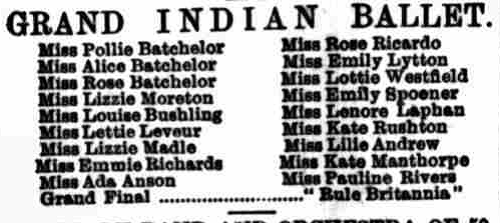
In the September of 1890 she appears at the Canterbury Theatre in London, in the testimonial to ballet director Paul Valentine among a host of well-known names which include Marie Lloyd, Gus Elen, Jenny Hill, and Vesta Tilley. A feature of an evening of variety was the ballet entitled ‘The Carnival of Venice’ in which the principal danseuses are Polly Batchelor, Pauline Rivers, Louie Lapham and Maud Hill as well as 50 accompanying coryphees. It will also include a children’s ballet which perhaps sowed the seeds of Pauline’s future idea of conducting her own children’s ballet at Blackpool.
In the winter pantomime season she is in Glasgow in ‘Goody Two Shoes’. As usual these are lavish productions where Pauline is ‘responsible for the arrangement of the effective ballets, is principal dancer and acquits herself in a highly acceptable fashion’.
In April and May of 1891 she is at the Theatre Royal in Glasgow in which Vesta Tilley was the star performer in the burlesque, of song and dance and political and topical allusions, ‘Randolph the Reckless’. In this Pauline has the role of Margery though there is no description of the role where she may have broken out into song.
She continues to be involved in spectacular variety events where her forte is ballet, and where she is a member of the Ruby troupe headed by Polly Batchelor but could also advertise the significance of her own name.


When this season closes she at the Canterbury in London with the Ruby troupe along with Polly Batchelor and Lottie Dettmar. ‘What more saltatorial art could anyone desire than the Ruby troupe headed by Miss Polly Batchelor? They trip lightly in various divertissements, and whether it be a hornpipe, a Scotch reel, or even an Irish jig they are equally at home. Miss Pauline Rivers is clever in her execution of a jockey hornpipe, which is much the same sort of dance as a sailor’s hornpipe, and she is also seen to great advantage in various pas seuls.’ (The Era 7th November 1891). For the following pantomime season she is at the Royal Princess Theatre in Glasgow in another long winded title, ‘Princess Pansy, or Harlequin the Peerless Peer, the Pretty Peri, and the Seven Fairy Godmothers’. In this fantasy about good and evil she is the principal danseuse, and described as a ‘graceful and agile prima ballerina’ when she features in the Lake of Brilliants, a grand ballet of gems in the eventual triumph of good over evil as evil had held sway for the theme of the production.
In the following year of 1892, the Winter Gardens managed by William Holland who had previously been in London, was a place for the spectacular. In its various rooms the Gardens hosted an arrangement of high quality entertainments consisting of theatre in the Grand Pavilion and the Opera House, a shooting gallery with steam powered mechanics of moving birds, and mystic caves and fairy grottos, high flying gymnasts and acrobats, a grand orchestra and a spectacular, ‘Grand Ballet of Butterflies’ in which the night with its bats and owls and toads and fireflies, night creatures which are chased away by the dawn and the advent of the butterflies and the sun. This is followed by ‘Luna’ or ‘Love in the Moon’ in which Polly Batchelor’s Ruby troupe included Pauline Rivers, Maud Hill and Louie Lapham. Arranged by Paul Valentine the ballet consisted of 50 coryphees. The entrance fee was sixpence (2½p; approx £2.53 in 2022.). The farewell performance was given on 10th September and was followed by the patriotic production, ‘Britannia’ in which the Ruby troupe performed and continued the extravaganza.
The Butterfly Ballet and ‘Luna’ move to the Grand in Liverpool in October in which, ‘Polly Batchelor, Louie Topham, Maud Hill, Pauline Rivers and Daisy Summers were most successful in fascinating the audience with their Terpischorean ability. Polly Batchelor’s troupe dance a pas de quatre in which they all turn a most graceful cartwheel and which caused them to do three encores.’ (The Music Hall Oct 7th 1892.)
In 1893 she is performing ballet at the Paragon in East London. In a variety programme and along with Polly Batchelor, Bertha Linden and Lillie Lennie, she assists in ‘illustrating the graceful gyrations’ of the Kaleidoscope Dance.
Continuing the great variety and spectacle of entertainment on offer at the Winter Gardens Pavilion she is back in this year in Blackpool for the summer in a production brought there by William Holland the manager. This is ‘America’s World’s Fair’ a ‘ballet d’action’ and there is also ‘Jack’ a ‘pantomimical extravaganza’, a classic fantasy with fairies and ogres. Costumes and scenery are as usual lavish and a ‘serpentine dance is introduced by Miss Polly Batchelor while a tarantelle is gracefully performed by Miss Pauline Rivers.’ (The Era 8th July 1893). The World’s Fair, a ballet invented by William Holland and arranged by Paul Valentine and which features in its various scenes, Polly Batchelor’s Ruby Troupe and which, of course, includes Pauline Rivers. 29 different nationalities of the women of the world are represented in this production through various costume dances and Pauline creates a Spanish dance while Polly creates the American serpentine dance. The whole performance includes a dazzling galaxy of coryphees.’ Together, the two of them present their celebrated ‘duet and dance’. In September, since she was held in such high regard in ‘geniality, uprightness and ability’ the staff of the Pavilion presented her with a bouquet and a speech during one of the performances in recognition of her ‘kindly spirit’.
For the pantomime season of 1894 she at the Tyne Theatre in the North East where she is responsible for the ballet, procession and grouping arrangements along with Paul Valentine, in the grand production of ‘Robinson Crusoe’ and in 1895 she is in Cardiff where her production is described as ‘beautiful and incomprehensible’ in the following advert; –
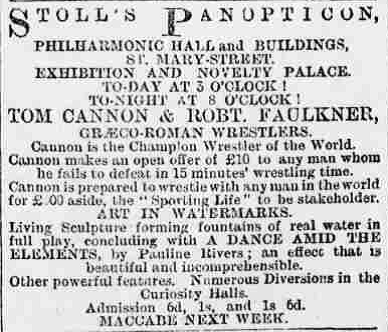
For the pantomime season she is one of the principal actors in ‘Sinbad the Sailor’ (often written as ‘Sindbad’) at the Theatre Royal in Glasgow. Within the principal cast is Glasgow’s own revered Marie Loftus who plays Sindbad and her niece Eva Bell in the role of Captain Lavender. Marie Loftus the mother of the more famous Cissie who sent her daughter for education at Layton Hill Convent in Blackpool. Pauline Rivers plays the flying lady who emerges from the roc’s egg in the ‘Diamond Valley’ in which a ‘marvellous scene of fairy loveliness in the charm and grace of her aerial dance about and above her attendant fays and her floating evolutions against a background of gloom studied with myriad changing electric stars.’ (The Ardrossan and Saltcoats Herald December 13th 1895.) Of course there are the topical songs sung by Marie Loftus and Eva Bell and the cast included many a comedian in a comic act within the story. Pauline Rivers as the ‘ballet mistress’ was ‘responsible for the training of the ballet and has succeeded in arranging several graceful and picturesque dances.’ (The Glasgow Herald December 10th 1895).
In what would be quite an exhausting tour, she was back in Blackpool at the Winter Gardens where Charles Brighten, the ‘father of the Music Halls’ was manager at the time. She was with Polly Batchelor once more before Christmas receiving nightly ovations for her part in the ballet entitled, ‘England and Her Sons’ to be followed in the January of 1896 when she returns to Glasgow where the Glasgow Herald reports, ‘the evolutions of Miss Pauline Rivers as the flying Roc is the chief delight of the children’ and perhaps she is part responsible for the dress as well as the choreography for ‘the eighteen ladies whose names figure in the programme as sea monsters display their shapely limbs and artistic dresses to the best advantage.’ Or as the Era put it, Miss Pauline Rivers ‘tripped the light fantastic in her usual, finished style.’
In Queen Victoria’s jubilee year of 1897, the manager of the Winter Gardens was Charles Brighten, before illness forced him to retire. Originally from London and then retiring to the south coast, he could claim that, ’there has never been, outside London, such a costly and magnificent entertainment. Everything that art and labour could do has been done and no expense spared to make this Jubilee spectacle worthy of the occasion, acceptable to the people of Great Britain, and a lasting credit to the energy and enterprise of the Winter Gardens Company.’ (The Blackpool Herald July 9th 1897).
A feature of the production is the grand Ballet and appropriately called ‘The Victorian Era’ relevant to the 50th year of the Queen’s reign. Arranged by Paul Valentine and Charles Brighten, it consisted of dances from 1819 to the present day. The theme is self-consciously and nationalistically, Victorian. Anti-slavery is depicted and it is emphasised that Britain had paid a considerable amount (£20,000,000; £1,980,141,813.44 in 2022) as an indemnification to the slave owners to set their workers free. Then followed by the ‘stirring patriotic’ song composed by C C Corri, ‘Under This Flag All men Are Free,’ a relevance which doesn’t always apply in practice in either race or economics and when women didn’t even have the vote. But times change slowly and those were the days and which, for some, don’t change at all. The Irish famine of 1845 is told in dance when plenty is reduced to scarcity, and starvation ensues with lives as living skeletons, for those who depend upon the land. Then the Angel of Mercy descends and the Fairies of the Golden Grain revel in a charming aerial ballet led by Miss Polly Batchelor, to lend succour while the real suffering in Ireland might have been ignored in the blissful ignorance of the distance in time from the horrific event. Pauline Rivers enters after the Great Exhibition of 1851 at the Crystal Palace in a Ballet of Nations in which 100 coryphees take part and the last three scenes of the spectacle with principal dancers Pauline Rivers, Bessie May and Polly Batchelor assisted by trained dancers and youngsters and the Rosine and Tonnerre troupes all lit up with spectacular electrical effects. The event ended in a new national anthem written by C C Corri entitled ‘Victoria’. While across the town at the Tower Circus, elephants were trained to get drunk and also to ride bicycles. Such are those things that are admissible to one era but not to a more enlightened future one, it might be considered.
In the January of 1898 Pauline is in Robinson Crusoe at the Royal Opera House in Leicester where dance features in many aspects, and Pauline Rivers as the principal danseuse in her ballet troupe, is enthusiastically applauded.
For the Summer season at the Winter Gardens in Blackpool in 1898 there are two ballets. The first is the patriotic ballet ‘England and Her Sons on Land and Sea’, featuring Pauline Rivers and Polly Batchelor in which they and the other speciality dancers are receiving nightly applauds. Patriotism concerned the supremacy of British imperial forces throughout the world and with the second Boer War not too far away a theme of this ballet is the soldier son of a cotton mill owner going off to war from an industrial Lancashire landscape with redcoats and factory hands. Bessie May leads the redcoats while the Lucette and Tounere (Tonerre as written) troupes represent the clog dancing workers. Scenes of Scotland and Wales and the Commonwealth as it was then, were introduced and even a chorus of ‘Uncle Sam.’ The final tableau is set in Egypt and in which, ‘A charming Egyptian dance, full of sensuous charm, and marked by sinuous grace and lithe posturing, is given by Miss Pauline Rivers, a dancer of more than average ability.’ (The Stage 14th July 1898).The ballet closes in an indulgence of the pride of being British in late Victorian times and displays Britannia surrounded by her sons and defenders, mostly played by women.
The second ballet is the ‘Palace of Pleasure’ a spectacular with electric lighting effects and revolving glass cylinders. Miss Pauline Rivers dances as Folly and, ‘repeats her earlier triumphs in another branch of her art.’ (The Stage as above and which reflects her versatility away from the pure discipline of ballet). At the end of the entire performance there are curtain calls for Charles Brighten and Paul Valentine and the principal dancers, Pauline Rivers and Polly Batchelor, the costume designer Mrs May and the electrician Mr W Smith who had invented and designed the revolving cylinders and those involved in the productions.
There are no reports for Pauline during 1899 yet found but at the turn of the century she is to be found in pantomime in the East End of London at the Pavilion Theatre.
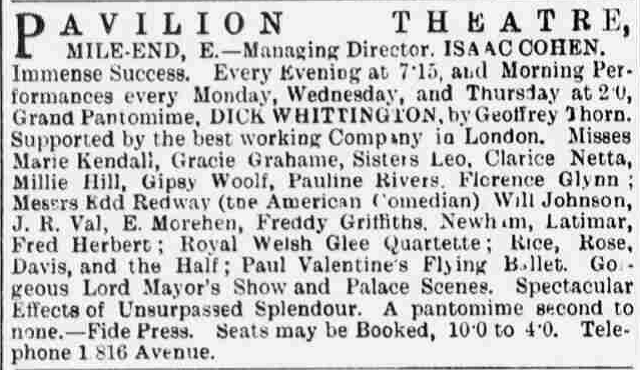
In the following year of 1901 at Blackpool, Pauline Rivers was given sixty local children to train to sing and dance in order to make a diversion to the regular and long series of dancing in the ballroom. These little performances began as brief interludes with dance and music throughout and comprised of multiple scenes and scenae, and from there ‘they blossomed into full scale performances each better than the others.’ (In retrospect; Blackpool Herald 9th July7 1912). By 1919 the Blackpool Herald could report, ‘Mdlle Rivers has quite a genius for training children to dance and sing, and when her accomplished pupils perform amid such a grandeur of surroundings there is little left to be desired.’ The young dancers were paid and there was strong competition for places both in the in the touring pantomimes and the revue season that followed the season’s ballet.
In this year she continues in pantomime in Cinderella at the Grand Theatre in Islington in which a leading part is played by the much liked Harry Randall. Here Pauline leads the ballet entitled a ‘Vocal Gavotte’ in a ‘somewhat startling white and scarlet costume.’ At the same theatre she is in a bit part consisting of dance among a variety of acts and plays for the benefit of Oswald Brand the manager of the Grand Theatre in Islington. The same pantomime moves to Birmingham at the Grand Theatre there where, ‘a noteworthy feature is the graceful dancing of Miss Pauline Rivers, who is also responsible for the ballets.’ (The Stage 20th February 1902).
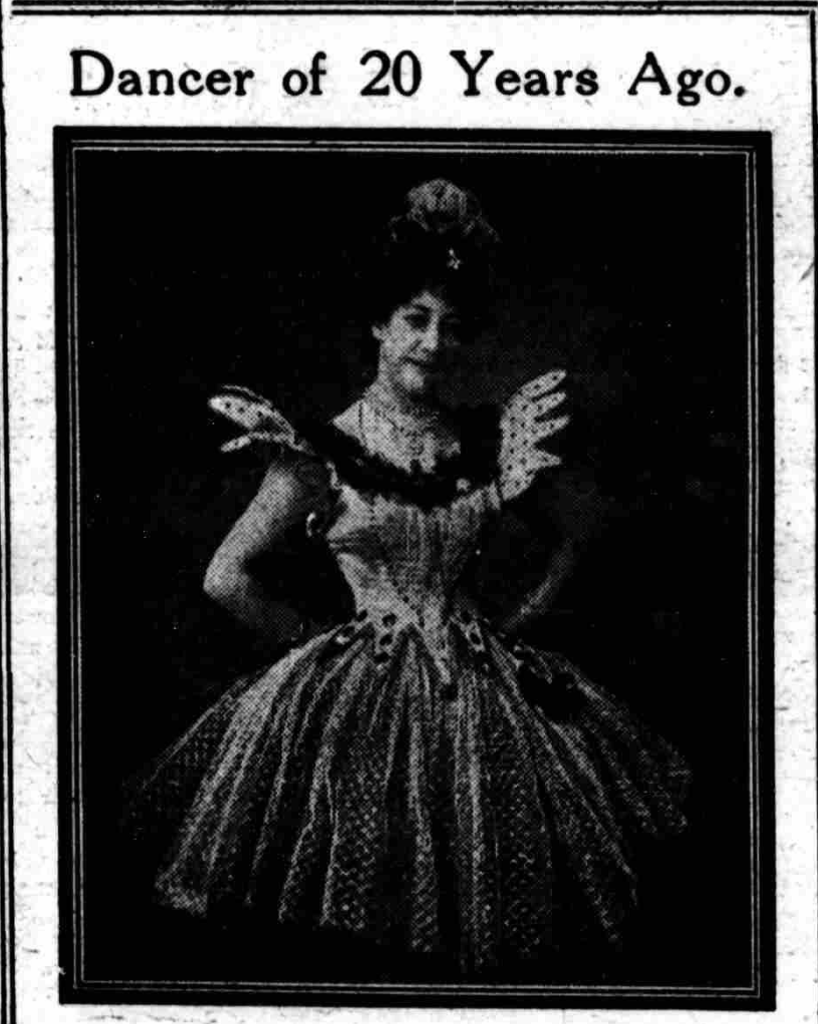
Referring to twenty years ago the above article in The Chronicle goes on to state, ‘Madame Pauline Rivers, the well-known arranger of ballets, as she appeared in the Leicester Opera House pantomime, “Robison Crusoe”, just over 20 years ago. She was then the premiere danseuse. (Photo, Ramsden, Granby St.)
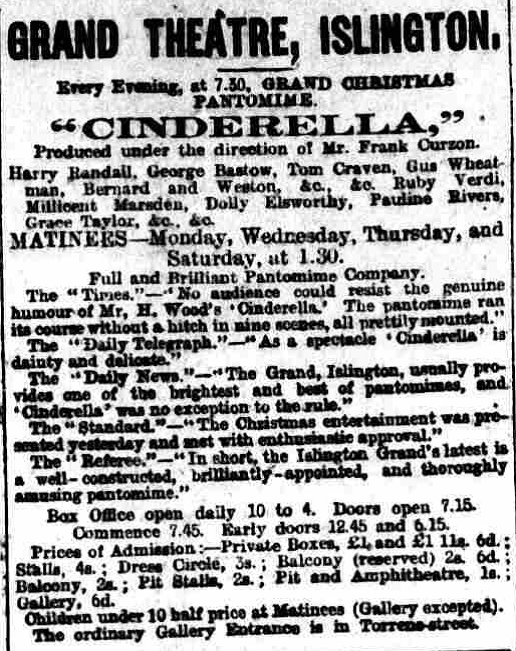
At the beginning of 1903 she is Sinbad the Sailor at Exeter Theatre Royal and a special mention here are two ballets, ‘Nature’s Gifts’ and ‘Diamond’, under the direction of Miss Pauline Rivers, some pretty aerial effects being introduced in the former. At the end of the year of 1903 she is pantomime in ‘Sleeping Beauty’ at the same theatre where, ‘Miss Rivers, who has a wide experience, will be responsible for the arrangement and production of ballets, processions, etc., and will herself give specialities in a pas seul, a butterfly ballet, and a very quaint old English and French style of costume dance known as the “Orchid.”’ (The Western Times December 26th 1903).
She begins the following year in pantomime in a Frederick Mouillet production of Sinbad and the ballets chosen for this production at Hythe are the Diamond, the Harmony and the Flower, each arranged by Pauline.
While Pauline’s first production in Blackpool is later reported as being in 1903 and entitled ‘American Cakewalk and subsequent others entitled, ‘Chrysanthemum’, and ‘Ye Old English Garden’ there are no reported dates located for these latter. In the summer of 1904 however, she is in Blackpool in charge of a troupe of lady dancers, and for the first time mentioned with a troupe of 50 local children, especially trained by her for the Tower Company but in the unfortunately named ‘White Coon Cake Walk’ in which, despite the questionable innocence of ignorance, all men, and certainly not women, are not equal under the same flag. Then for the pantomime season she is at Islington once more in ‘Babes in the Wood’, and the Bristol Magpie can say this about her as well as giving some detail about her off season activities in being involved in the arrangements of the dance performances. ‘Owing to the success of Babes in the Wood, at the Islington Grand, this delightful pantomime will be continued until February 25th, and much of the success of the annual performance is due to the exquisite ballets arranged and presented by that artistic prima danseuse Paulline Rivers, who has for years past been associated with the most important Christmas productions. The pert Pauline, who like Adeline Genee, is a fairy-like genius on her toes, has arranged all the terpischorean effects in the Grand pantomime and she has also successfully carried out the ballet arrangements for four of Frederick Mouillet’s Christmas entertainments. Miss Rivers is a dainty dancer and all her creations are the essence of artistic charm.’
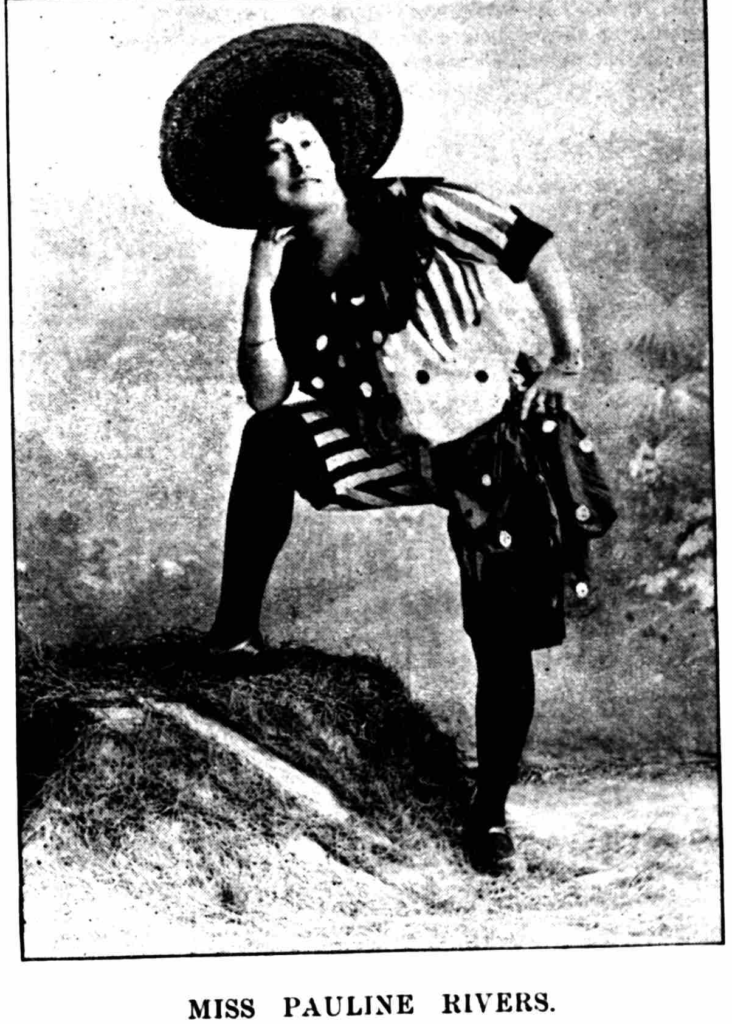
In the summer season of 1905 she is at the Palace Theatre in the Tower at Blackpool where, ‘In the beautiful Elizabethan Hall, ballroom dancing takes place in the afternoon, while as a speciality there is, “Ye Olde English Flower Dance,” gracefully performed by some fifty local maids, and invented and arranged by Miss Pauline Rivers.’ (The Blackpool Herald 21st July 1905). The Stage of July of that year reports that ‘Mdlle Pauline Rivers has especially trained a clever troupe of fifty children, who give some charming dances in the ballroom, and thus she has fully maintained her reputation as maitresse de ballet.’
In the Summer season of 1906, while Pauline was quite used to receiving bouquets of flowers and fruit, an unknown admirer presented her with an inscribed gold and jewelled pencil case. In wanting to remain anonymous and presumably a male ‘he’ also presented the two leading dancers, Bessie Howarth and Edie Howarth with gold and jewelled brooches. It was an example of the high regard in which the children’s ballet was held. This ‘Pauline’ sextette would perform in ‘My Pansy Blue’, ‘We Love Zee Blackpool’ and the dance ‘Lurline’ no doubt an opportunity to express the eternal allure of the female shape and form and the sad destiny it can naturally and very often innocently create for itself in real terms as part and parcel of the performance in its theme of broken promises. These special items on the stage in the ballroom, ‘does the children and their teacher great credit.’ (Fleetwood Chronicle 24/8/1906.
In 1907 a continuing feature of the season, when Vesta Tilley was not knocking out the audiences at the Palace in Blackpool was the ballet, ‘From Indiana to Beauty’s Bower,’ a ‘pretty’ ballet performed by 150 local children and entirely arranged by Mdlle Pauline Rivers, ballet directrice to the principal London and Continental theatres’ and who has had much success in Blackpool with the same and where, ‘captivating artistes render charming songs and dance pretty dances, whilst beautiful spectacular effects make the ballet extremely attractive.’ (The Blackpool Herald 23 July 1907). I haven’t found evidence of her being directly a directrice of a theatre and certainly not of a Continental theatre so if this is not assumption from an enthusiastic journalist writing at a later date, her role may have been as a consultant to any of these. In all, a spectacular extravaganza, described elsewhere in the Blackpool newspaper as, ‘A clever company of local children, trained for their parts by Mlle Pauline Rivers, perform the piece and delight large audiences with their captivating songs and dancing. The singing is bright and taking, whilst the beautiful spectacular effects do much to ensure the success of the performance.’
For two years at least as recorded, Mr William Forbes, friend and benefactor and ‘chorus girls Missioner’ and referred to as their ‘Bishop’ for nearly three decades, now an aged gentleman, paid his usual visit to Blackpool in the summer season. While it was not for a certain type of politics to alleviate poverty and difficult social conditions, it was left for the poor and out of work to suffer their fate within those conditions. In particular it was for those who felt socially responsible for those caught in the trap of poverty and lack of opportunity, like those reverends connected to the churches to alleviate hardship. Actresses in particular found regular unemployment in their profession and many a girl on the stage knew that she had the support of William Forbes and his wife if they found themselves in desperate circumstances. He was a London man and claimed he would see more healthy and good looking people in a day in the capital than he would in a week in Blackpool. On the two recorded occasions observed, he visited the Tower and Winter Gardens. As well as presenting each of the young girls with fancy fans and brooches, they were entertained to tea along with ballet maitresse Pauline and George Harrop, Tower manager, in the Oriental village on the premises. In the following year of 1908, all the children were entertained at his expense once more at the Tower Roof Gardens as they were now performing in ‘Children’s Dream of Toyland.’
The finale of the ballet for the season took place on Saturday 12th of October in front of a packed and highly appreciative house. At the end, each child was given a box of chocolates and Pauline received more than the usual bouquets of flowers amid continuing applause and congratulation. ‘It was a scene to be remembered, and must have been very gratifying to Miss Rivers as a tribute to her successful engineering of the Tower Company’s most brilliant ballet.’ (Blackpool Herald 15th October 1907).
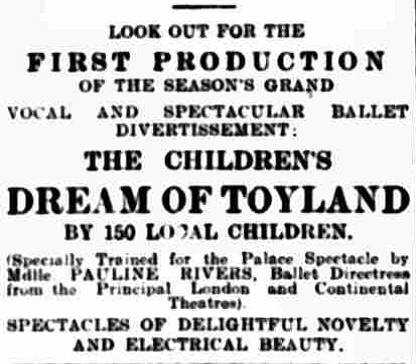
‘The Children’s Dream of Toyland’ is performed in the Tower Ballroom as it extended into the autumn season. It is a spectacular, half hour show beginning at 9pm. The ballet, the creation of Pauline Rivers, consists of the 150 children awoken from slumber by fairies who are then presented with a fantasy Pandora’s box with ‘up to date, toys and dolls’, and a feature of singing and dancing with the more specialist ‘Pauline’ and ‘Dainty Dandies’ groups of dancers who perform intermittently in a popular and well patronised show noted for its spectacular electrical lighting of thousands of lights. Mdlle Pauline Rivers appears at the final scene of the show when she receives her usual generous ovations. The production moves to the grand Opera House, Oldham in January of the following year of 1909 and continues its popularity after which it moves to the Alexandra Theatre in Hull.
But back in Blackpool in July in 1909 her next children’s ballet, ‘In Merry Winter Time’, had its first night on the 12th July. The 150 local children, most of whom had not had any previous experience, had been trained by her to perfection, and they went through the first performance with a blithesomeness and merry spirit which spoke volumes for Miss River’s patient coaching.’ (The Blackpool Herald 13th July 1909.) There is skating and snowballing singing and dancing and characters jumping out of giant logs, all under three thousand electric lights and the premier singers and dancers, the Pauline Sextette, render their own songs. There is John Bull and Jonathan as representatives of the entente cordiale between Britain and Americ, and a finale in which they are whisked away in an airship.
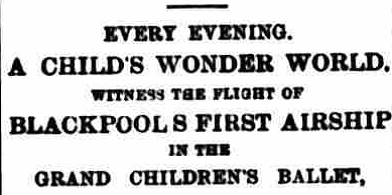
One of the features of the entertainment on offer at The Tower and Palace Blackpool Promenade.. The claim of ‘Blackpool’s First Airship’ is probably a tribute to the backstage production team of the Tower rather than the claim of a first flight as this was by Stanley Spencer form the gasworks on Rigby Road in 1902 in his own airship constructed in his workshop in London and brought by train to the town.
The ballet moves on to the potteries for the Christmas season and is included in the pantomime Robinson Crusoe, concluding the first half of the pantomime. ‘Mdlle Pauline Rivers who has had a long experience as maitresse de ballet in ‘London and Continental theatres’ and who has for some months past been running a children’s ballet at Blackpool, where it was quite one of the attractions of the season. (The Staffordshire Sentinel 28th December 1909). Here there are now only 50 children in the production the majority of who are brought from the Blackpool show. There is an unnamed young girl in this performance who has evident emerging talent beyond the other, older ones and it is tempting to think that this might be Emma Tweedale, later known as Little Emmie, an exquisite toe dancer who would eventually be the leading dancer in Pauline’s shows and a close associate of hers as her ‘adopted daughter’. It was a show which prompted the correspondent of the paper to comment upon the fact that the innocent show of children with its lack of vulgarity was so well received by the audiences that it prompted them to reflect on their own lack of innocence in a non-ideal world.
In the January of 1910 she is at the Palace Theatre in Oldham in Dick Whittington, and in which ‘Mlle Pauline Rivers’ Mill Girls and Dancers introduce some smart dance and also sing well.’ (The Era 8th January 1910). By the end of January the same pantomime is at the Borough Theatre Wallsend where there is ‘a full chorus and specialities are introduced by Mdlle Pauline Rivers’ Troupe of Merry Mill Girls and troupe of dancers. Altogether the pantomime is a pronounced success.’ (The Jarrow Guardian 28th January 1910.). Then in February the troupe is back at the Alexandra Theatre in Hull in ‘Robinson Crusoe’. Here in the Beverley Independent, ‘The dance is charming, and the receptions accorded to Mdlle Pauline Rivers, the ballet mistress, when after one of the exquisite dances she appeared on the stage must be most gratifying.’
This is the year when an appeal, patronised by Vesta Tilly, for the Era Music Hall Home Shilling Fund, a charity to support those in the Music Hall profession by the professionals within the Halls, reached out to the more fortunate performers. A shilling as 5p would be worth in 2023 approx £4.49 and the amount collected amounted to 2063 shillings (£9,241.69; 2022). Pauline contributed her shilling to the collecting box of pantomime performers Elton and Elma. A gold medal would be presented by the Era to the collector of the highest amount.
In the summer season she is at Blackpool once more presenting the spectacular ballet, ‘Our Children’s Farmyard’ or appropriately ‘Chanticleer in Fairyland’, always the innocence of children to question the adult world. and performed every afternoon for the extent of the production.
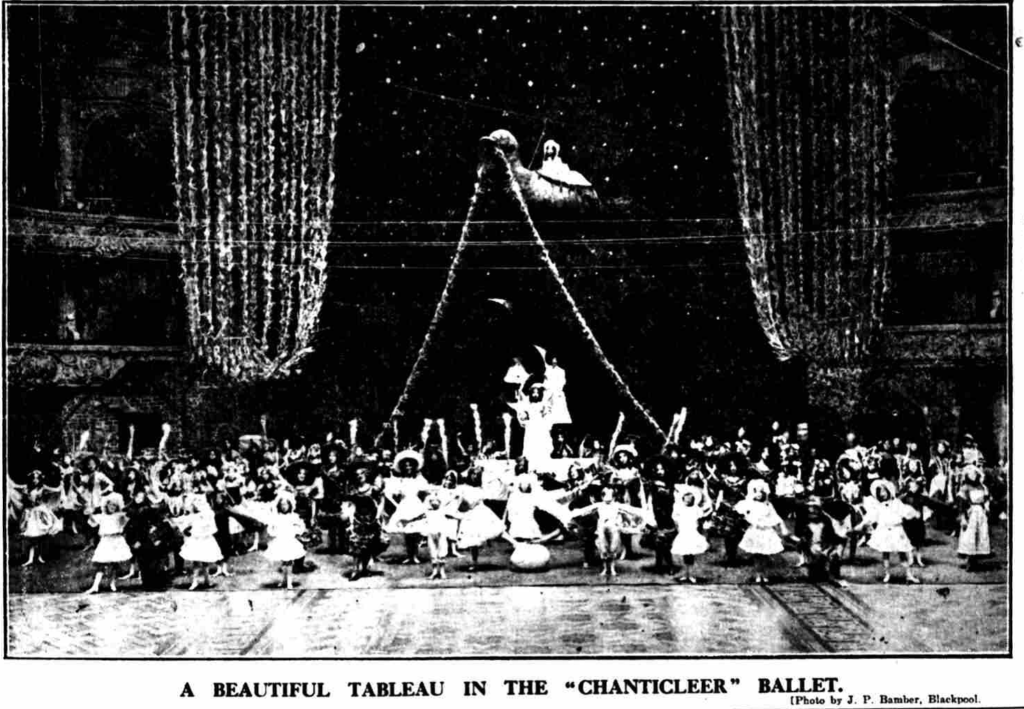
The ballroom is transformed into a classic farmscape of hens and chicks and dogs and cats and haymakers and of course the chanticleer, the jealous cock which fancies the hen, and mother goose and her brood of goslings make an entrance. The dog, a representative of the masculine world, is offset by the cat, a representative of the female world and a little bit of topical sexual equality introduced without controversy it would seem. The picture appears to represent the finale when a golden pheasant descends as the night draws in and darkness envelops for a moment only and, as the clever electrical effects light up the night, the pheasant flies off with the Fairy Star upon its back. It is a ballet which Pauline Rivers had invented, arranged and produced and trained the children, and due credit is also emphatically given for the success to the engineers, musicians, songwriters, dressers and dressmakers employed by the Tower Company.
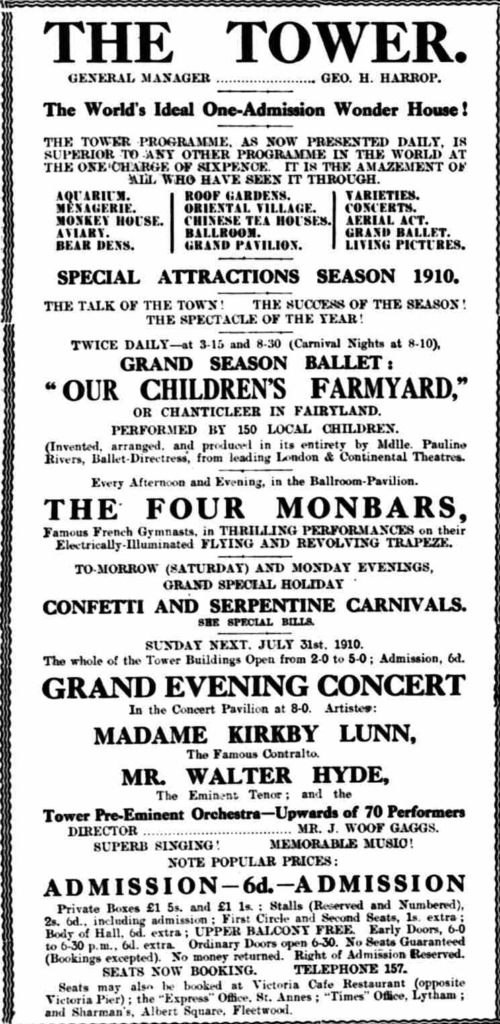
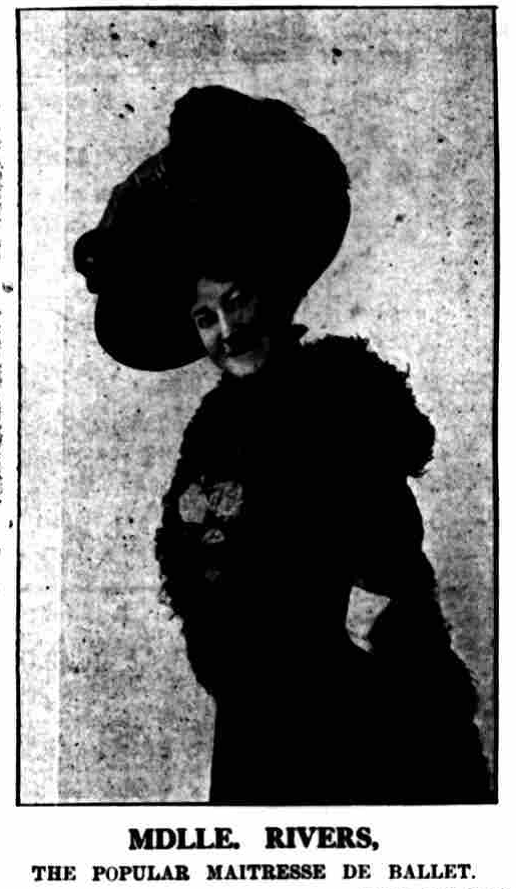
The finale took place on 15th October 1910 and the success of the production was a fitting tribute to the nine seasons that Pauline Rivers had been at the Tower. At the conclusion of the performance on the final day she was showered with congratulations and, as well as an also showered with flowers and gifts. As the Blackpool Herald reports, these consisted of a beautiful basket of pink chrysanthemums and arum lilies, a silver topped biscuit jar and a marmalade jar, silver photo frame, silver egg stand (from the principal dancers) and a silver butter dish, fish carvers in a case and lace handkerchiefs and crochet work.
It was hoped by all that she would be back next season, but she judiciously wasn’t able to commit herself and for now anyway it was the pantomime season and she had to train the youngsters for the next two pantomimes they would be involved in. For this she had advertised for children in the Stage publication of September giving her address as the Tower in Blackpool. The advert is repeated as she has reached London in mid November. And her next pantomime is Dick Whittington at the Prince of Wales theatre in Mexboro.

In October of this year she is included as a singer in Feldman’s catalogue of songs, many of which are new for the coming pantomime season. In the list directly after George Formby (snr) who will sing, ‘In Taking My Father’s Tea’ is Pauline Rivers with, ‘Cock-a-Doodle–Do In the Morning.’ Perhaps she is on record somewhere if this refers to her singing and not the the song in her production. In November she is conducting her own little Sextette of singing and dancing at the Palace in Grimsby and in December at Mexborough with her troupe the ‘Twelve Little Sunshines’. The write up in the same Express paper of December 31st gives a somewhat confusing array of parts. Here Pauline (‘of the Tower, Blackpool’) is only attributed to the ‘Sunshine’ troupe of dancers while the ballets and the training of the local children are attributed to Walter Griffin, the producer. Regular members of Pauline’s troupe are credited with singing their own parts, as Nellie Langley, one of two sisters singing ‘Mr Sunshine’ while Gertie Langley sings, ‘Ta Ta, Little Girlie’. What is more significant is that for the first time, Little Emmie is there singing, ‘Underneath the Bright Blue Moon’ and can be assumed as now being part of the troupe. However the paper can credit Pauline for the ‘high artistic effects obtained in the dances reflect great credit on that lady.’ Little Emmie, is praised in the article for her artistic toe dancing along with Miss Florrie Mason.
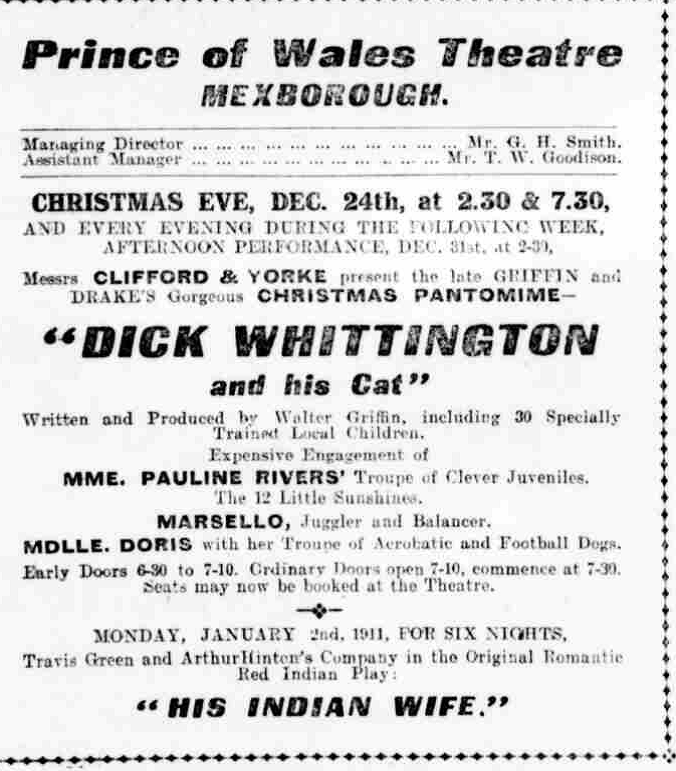
In the following year of 1911, she is at the Hippodrome, Leeds. The pantomime is Cinderella and where her troupe of dancers make a ‘decided hit.’ (Leeds Mercury January 17th 1911), and then her ‘artistic and clever’ dancers are a speciality in Dick Whittington at Accrington’s Hippodrome in February. On the census return taken before the summer season in Blackpool she is in Salford with the troupe. Little Emmie as Emma Tweedale is there at 14 years old as is Lottie Rivers described as Pauline’s sister and according to the census form is four years older than Pauline. The group of young girl dancers are described en bloc in probably Pauline’s own handwriting with authority, as theatricals, with no further details available apart from their towns of origin. In the group of girls at the lodging house are five from Blackpool one of which was tragic 16 year old Viva White Lynn, who was unaware that she had only a very few months to live. Consulting Google earth the property on West High Street off Cross lane appears to have been demolished and more recent housing erected in its place.
In this year in April, one of Pauline’s former principal dancers, now performing one of the three Eldorados’, Nellie Morrby, whose relatives lived in Blackpool, married in America, William Weekesser, one of the ‘La Rose Brothers’.
Before the summer season began, Pauline was busy at the Tower during the coronation celebrations for Edward V11. Little Emmie had been singled out for her exceptional performance in Pauline’s, ‘Ye Olde Englyshe Dance.’
For the Summer season Pauline’s contribution to the Tower entertainments is her production, ‘Little Girlie’s Toybook’ an innocent title of the times before the evolution of language would modify it, but also titled, ‘A Trip Into Dreamland’ which began its season in the second week of July in the ballroom pavilion, ‘a romantic and gorgeous pageant, full of delightful songs, melodious music and fascinating dances.’ (Blackpool Herald July 28th 1911), and which achieved a fresh triumph every day. The ballet is performed as three tableaux, ‘The Dawn of History’, ‘The Merry Mediaeval’ and the, ‘Picturesque Present.’ The performances lasted until the 14th of October.
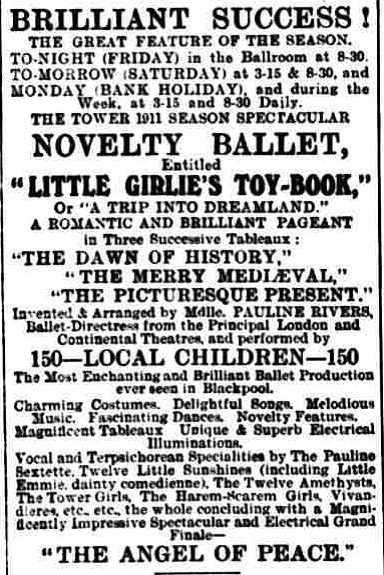
Among the 150 mostly local children in the performance trained by Pauline there are specialist groups with their names as the programme shows, The Pauline Sextet, the Twelve Little Sunshines, the Twelve Amethysts, The Tower Girls, The Harem-Scarem Girls, Vivandieres and others. Little Emmie’s name is becoming featured as evidently the most talented of the dancers. The finale, ‘The Angel of Peace’ is perhaps a presage of the violence that was to come in a few years’ time as it represented a dreadnought battleship in a blaze of light. In the escapism of the innocence of children in Dreamland the new style battleships perhaps were seen as their role of an angel in representing the protectors of peace but a peace which would only be protected through destructive violence and then in the end it would only be a temporary peace. But that, though it might have been suspected at the time, was not allowed through the escapism of the theatre, to be considered a reality.
The finale was on the Saturday, 14th of October and the performers were given a rowdy ovation to the tune and lyrics of Auld Lang Syne, and Pauline vowed to be back with something even more spectacular, though it was doubted that she could go one better than the present ballet. Her dressing room was full of fragrant flowers and gifts and at the curtain call she and the performers accepted a long applause and were showered with gifts. Little Emmie had a special gift from the management for her rendition of the Clarice Mayne song, ‘I’m Longing for Someone to Love Me’. The children would now go on tour to Bradford, Workington, Ashton-under-Lyne and eventually to pantomime in Nottingham and then the Sextette is at Her Majesty’s theatre in Aberdeen in November and over the Christmas period into 1912 with a military song and dance routine within Dick Whittington.
In September however the sad event of the one of the young dancers, 16 year old Viva White Lynn, a popular Blackpool girl, of 28 Keswick Road in the town, occurred. She had been with the troupe for three seasons and had been performing with the troupe at the Tower until only very recently and had to miss a performance because of rheumatism. Though she recovered slightly, her eventual death was sudden. Her funeral was September 2nd and as the cortege passed the Tower in Bank Hey Street the children of the ballet stood outside wearing their white dresses with black sashes and during the performance they all wore black bows. They sent floral tributes, a harp with a broken string form the children and Lottie Rivers, Pauline’s sister, and one from now numbering, the ‘Eleven’ Little Sunshines rather than the Twelve. Pauline sent a large floral heart surmounted with a big cluster of flowers and containing the inscription, ‘A little ray of sunshine gone to God.’
The somewhat gruelling 1912 tour begins with the Sextette remaining in Aberdeen in Dick Whittington and by April were as far away as the Picture Palace at Cheltenham for a week, followed by the Kings Hall in Stourbridge in May for the Twelve Little Sunshines, now with the eleven augmented once more, who surprised the audience and the critics by their confidence on stage both as a group and in their individual performances. Here, after an enthusiastic reception, with Little Emmie featuring, and an enthralling display with the limelight upon them, the audience was reluctant to let them go at the curtain and before the same audience was asked to contribute to the Titanic fund which was a topical feature of the theatres after an American film of the incident was shown.
For the traditional summer season they were once more at the Tower in Blackpool in Pauline’s new production, ‘Sons of the Mighty Empire’ a ‘grand military and naval spectacle’. While the destruction of WW1 was a few years away yet, the self-consciousness of Empire and the need to assert and defend national pride against the rise and armament of other nations was ever in the mindset. The ballroom of the Tower was packed as usual for the opening night of July 5th in a town that is described as not being the same town year after year such is the variety of its entertainments on offer. The ballet is a spectacle rather than a story. There is a man o’ war in the background as the navy brigade pull their cannons into view and singing, ‘Life on the Ocean Wave’, ‘Hello, Here Comes a Jolly sailor’, and ‘Three Cheers for the Red White and Blue.’ The ballroom floor is filled by the 150 children, both girls and boys, representing the military regiments of the homeland and the Commonwealth in a brilliance of lighting, colour, song and dance, conducted in perfect regimented timing. And the Twelve Little Sunshines, led by Little Emmie, and dressed in purple and gold, give a demonstration of ballet in the celebrated Russian style earning Little Emmie the moniker of the, ‘Little Pavlova’ or ‘La Petite Pavlova’ and for which too, Bessie (whose surname is not given but which might have been May or Howarth) who dances as the premier boy, is given credit alongside her. Anna Pavlova, where a centre of ballet had migrated to Russia from France, herself would be performing at the Opera House in Blackpool in September. This ballet scene is immediately followed by a storm scene. The coastline of Blackpool is as treacherous as any coast and its lifeboat, the ‘Samuel Fletcher of Manchester’ is featured in the next stormy scene along with the children singing ‘God Speed the Lifeboat’, its heroic crews having saved many a life in the past, rowing with tiring limbs against the storms without the assistance of a motor or too stormy for the assistance of a sail. The finale contains the dreadnought battleship in a blaze of light and an assembly of all the soldiers and sailors, and across the room the four flags of England, Scotland, Wales and the pre-secession Ireland were displayed. In hindsight it is the kind of patriotism that sent millions of men to their deaths in the years to come but the future was lost in the innocence of the present. The plaudits at the end were long and loud and those behinds the scenes, the music publishers and song writers, the musical director of the Tower, Mr J Woof Gaggs and the electrical team for the ‘blaze of gorgeous electrical effects’ led by Mr J Walmsley who was to die a tragic and unique death at the Tower, were all applauded by the critics. The season was extended up to October due to the great and lasting popularity of the production. In October, Charles Grundy, who had been with the electrical department of the tower under Mr Walmsley left for health reasons and emigrated to Australia. On his parting he was given a silver cigar case by Pauline who would have been indeed grateful for the lighting effects that had electrified her ballet and revue productions.
In August of this year Pauline Rivers is credited with providing the popularity of the song ‘Purple Band’ and is thanked for doing so. ‘Huge success; song doubly encored’. As the year turns into 1913, the troupe of the Twelve Sunshines is at the Theatre Royal, Stockport in January in Aladdin and then move on to the Grand theatre in Mansfield and then to the Grand Theatre and Derby at the end of the month. Notable within the troupe are the regular Little Emmie as the premiere danseuse who does the whole dance upon her toes and earns herself the credit of being an exquisite ‘toe dancer’, and also the less promotable in name, Bertha Smellie, more creditably referred to as the ‘Ashton Nightingale’ the ‘Lancashire Lass with the Melba voice’ and who, as a mill girl ‘had come ‘straight from the factory to the footlights’ and was making her debut in pantomime.
For the summer season in Blackpool, Pauline produces, ‘The Four Seasons’ a dream fantasy which opened on June 29th and continues up to October.
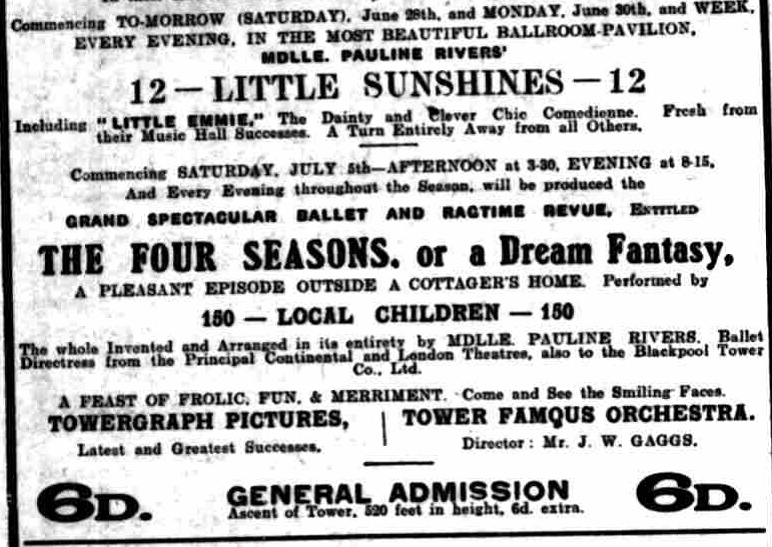
The Twelve Little Sunshines have come fresh from a run in the halls and are booked up until at least next March and include Little Emmie who is commended not only for her singing and dancing but also described as a clever comedienne. This production, as all the productions in the Tower, contains the 150 local children as well as the twelve specialist dancers. The theme begins with a cottager’s garden with the children representing bright flowers and butterflies in an idyllic summer setting. Autumn is represented by fruit and winter by holly, followed by a carnival of flowers enhanced by electrical light effects. Little Emmie dances in a costume which represents the American flag, a friend from across the water that the nation would need to look to in a few years’ time. The accompanying music is described as Ragtime, the modern music which in different hands might have demeaned the artistic nature of the show.
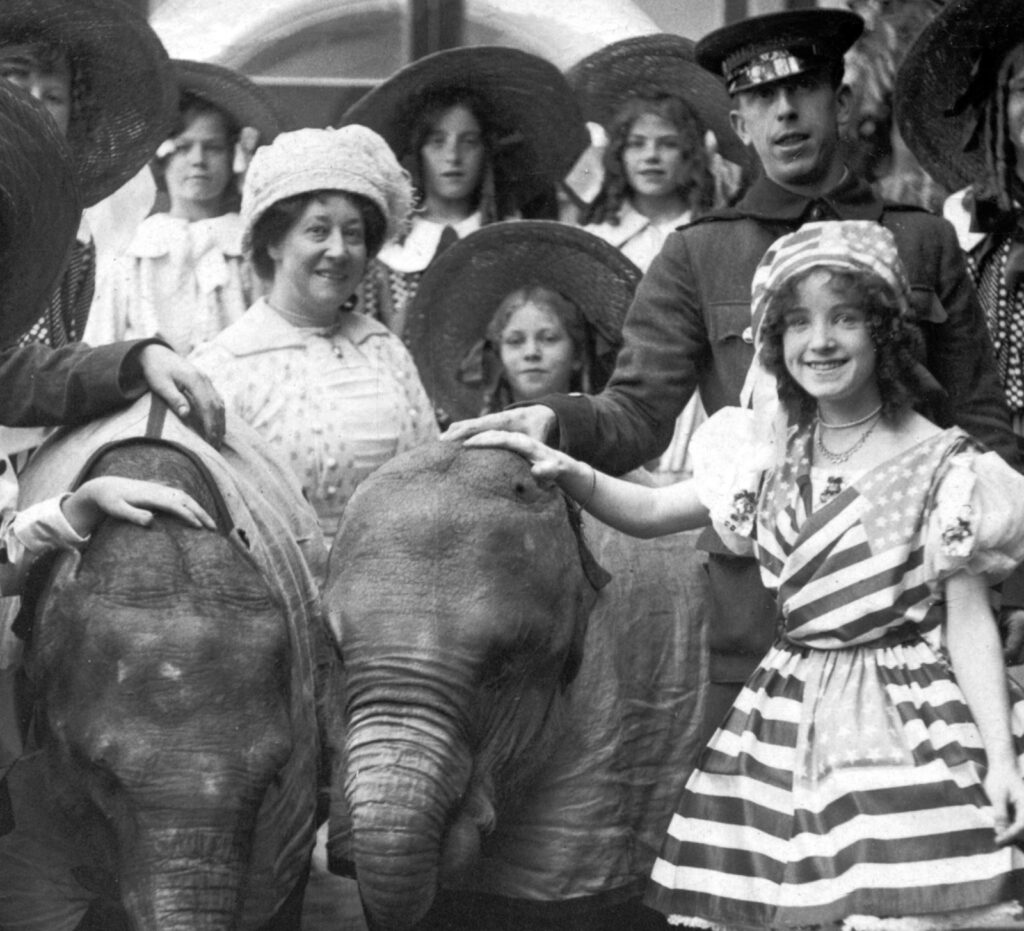
For the pantomime season the Twelve Sunshines move to Derby, once more in Aladdin at the Palace. The tour itself which includes a trip to Scotland at Falkirk, ends in Wakefield at the end of February before commencing another tour which includes venues in Manchester, Preston, Mansfield, Kettering, Kidderminster and South Wales before returning to Blackpool in June for summer season rehearsals of the ominous year of 1914.
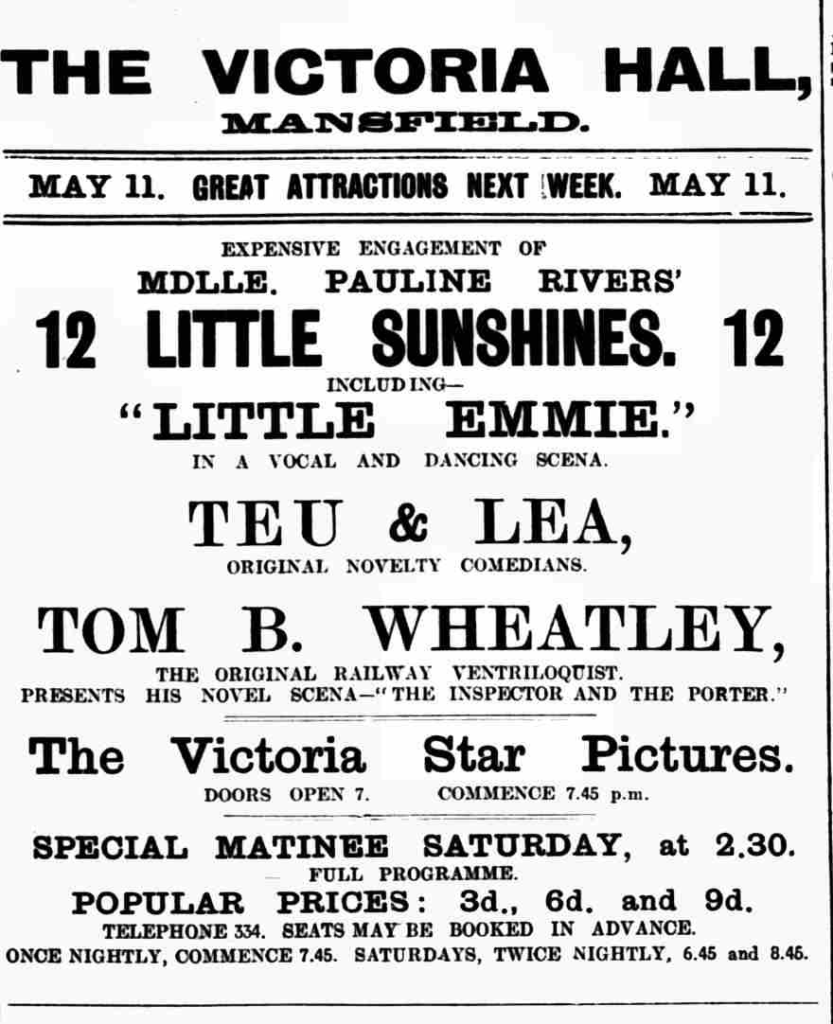
The summer season in Blackpool opened on July 4th in a production entitled ‘Things That Make Life Worth Living’, and receives round after round of applause and a regular curtain call for Pauline Rivers. Ironically, in hindsight only, those ‘things’ would include the deaths of millions that would make that life worth living for most of those left behind in the aftermath of the approaching war. The production would consist of the 150 local children among who would be the Tiny Tots, Twelve Little Sunshines, Tower Girls and featuring Little Emmie, the ‘clever child comedienne and toe dancer’. Little Emmie would be 18 years old by now. The ballet performance contains ‘everything that can delight the juvenile mind’ and includes a dancing donkey, a stage coach containing a miniature fairy with ‘cats as attendants, cabbages that contain new babies, with a cat’s circus and performing animals, the whole concluding with a tableaux that surpasses anything of the kind yet seen at the Tower for dazzling brilliancy and artistry of design.’ It opens with a rustic scene of woodland and flower bedecked fields. A donkey enters pulling a cart on which Little Emmie is seated, surrounded by vegetables which would ‘delight any vegetarian’ and then the scene turns into a kitchen garden wherein the vegetables engage in the dance joined by the donkey who has been two-stepping his way onto the dance floor while pulling the cart with a singing Little Emmie upon it. Then a variety of fruits enter and also, with irony in the innocence of ignorance, cigars and matchboxes packets of tobacco and a variety of drink which might make life worth living for the adults of the day (Bass, Guinness, Johnny Walker and the ‘Tower Special’ are introduced as drinks.) The scene then changes into a cat’s circus with big top, circus ring and acts and ends with the arrival of a Princess in a Cinderella type coach. Singing and dancing throughout includes modern songs and dance and as well as the traditional toe dance as Pauline Rivers isn’t ashamed to judiciously introduce the Tango and Ragtime. Little Emmie is accompanied in her dance by Bessie (without a surname) as the principal ‘boy’ dancer. The brilliant lighting effects were produced by the electrical staff of the Tower.
The summer season lasts until the autumn and by August the nation’s regular army is embarking for Europe. Not a problem though since it was inconceivable that the British army could be defeated and the war would easily be over by Christmas in a routine campaign. War wasn’t unusual and the territorial artillery, the Blackpool regiment led by Major Topping with its horse drawn field guns, was at the time, leaving the town to join the conflict.
The ballet also is an advert for many of the new songs which come from the song writers’ pen, and Pauline is responsible for introducing them into her productions. There are four Lawrence Wright songs in the performance from the Feldman song book. ‘Baby Eyes’ sung by Little Emmie and, ‘I’ll Be Alone in January’ sung by the Twelve Little Sunshines are the stand-out numbers. The other new songs are entitled, ‘You Know to Make Me happy’ and ‘We Met in May.’ On tour in Aladdin after the summer season the troupe continue to sing and are now credited with, ‘Cheer up Molly’ and ‘Your King and Country Need You’ as the war takes hold in the popular consciousness.
This tour takes the year into 1915 with the war still not over but the fantasy continues to distract from the savage reality of being human. Smethwick Theatre Royal in January was followed by the Hippodrome in Rochdale in April. But the summer season in Blackpool was preceded by the sad death of James Walmsley, the man responsible for the electrical extravaganza of the ballet productions and who had drowned in a freak accident in the filter tank at the Tower Aquarium. Pauline couldn’t attend the funeral but had sent a floral tribute among the many that had been received from the numerous civic and Tower Company members and performers.
Included in the summer season performance at the Tower Ballroom Blackpool beginning on 3rd July were the Lawrence Wright songs, many included for the first time and expected to be adopted as regulars for the stage, and these include, ‘The Band was Playing an Old Scotch Song’, ‘I’ve Been Playing a Game of Soldiers’, ‘Somebody’s Boy’, (expertly sung by Little Emmie), ‘It’s a Long Way to Leicester Square’, ‘Altogether Shout Bow! Wow!’ and ‘Are We Downhearted? No!’ This last number sung by the whole company of 150 children, perhaps would have given that little bit of hope in the heart for the adults. The military element was contained in the drum playing of the Twelve Little Sunshines and Pauline Rivers. The whole was a patriotic revue entitled, ‘For Love of Mother Country.’ A Mrs Elizabeth Bell, who had moved to Blackpool with her recently enlisted husband had recently become a celebrated war widow on her birthday in March. Women did become celebrities when their husbands had been killed on active service and their children had lost their father. If it was their husband’s duty to be killed, it was their duty to accept bereavement with fortitude even if they were reluctant to want or need that focus upon themselves. There would have many of those in the audience who had lost those most dear to them. Heavily pregnant with her second daughter, she had an elder child who would eventually as a young girl, dance on the stage with the Blackpool Belles. Mrs Bell was my grandmother. As a single mother she would taken in seasonal theatricals, work in the cloakroom of the Tower and scrub the floors there to make ends meet. She was one of many of course. It’s only because she is my grandmother that I know her story.
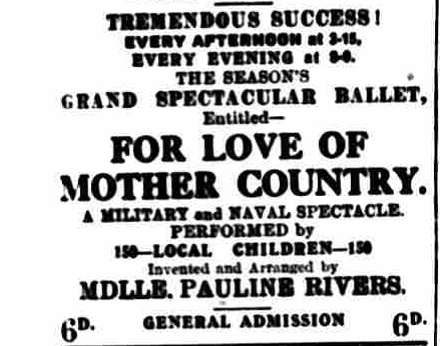
Described as a ‘brilliant patriotic revue’, and ‘a wartime spectacle fully in keeping with the spirit of the critical times in which we live’. Again it is a ballet which eclipses all the others as is the skill of Pauline Rivers. Against a background of castle battlements and a sea view with a destroyer named ‘The Allies’, the children enter in the uniforms of many of the homeland regiments, and singing the songs of those nations and then the allies of the Commonwealth and beyond, in particular the great sentiment towards the Belgians, many of who had been housed in the town, all flock to the standard to defend the mother country. There are many costumes and traditional dances and songs of the allied nations. Little Emmie is dressed as an officer with a wooden sword and paper hat and sings the words in explaining why her mammy had been crying, ‘Co’s my daddy is a prisoner o’er the foam, So I’m going to be real Tommy Atkins, And bring my daddy home,’ touching sentiment that could only come from a young person’s voice as is the chorus from ‘Somebody’s Boy’ sung by her; ‘

There are soldiers and sailors and nurses in a hospital; soon there would be a large, military hospital in the town and the convalescents would evident in their, usually ill-fitting, blue uniforms and the children in blue and white danced the hornpipe. The finale is first a march past of soldiers, sailors and nurses and the Twelve Sunshines enter playing the drums in a military rhythm while a girl called Doris sings, ‘Playing the Big Drum’. Little Emmie dances the ‘Allies Dance’ on her toes from beginning to end to great applause. She is dressed in a costume made up from the flags of the allies. A battleship then comes in to view with the words ‘Success to our Allies’ shining upon it, after which an electrical curtain rises and the Angel of Peace, which no doubt so many would have wished to be real and effective and would bring the boys home, but could only ever dream it to be, as a female, waved her blessings as if it could be true for those who wanted to believe. The Britannia in dazzling light, rises to the heights and the flags of the allies are flashed before all and in the end the British bulldog appears and grips the Union Jack which can never be brought down. Now up aloft, Britannia surveys the scene as all is peace. This final tableau is a ‘wonderful achievement in magnificent electrical effects’. Across the town in the Empress ballroom of the Winter Gardens, a similar production of 100 children is performed by the renowned John Tiller but this performance of military flavour does not reach the height of critical acclaim that the production of Pauline Rivers and the Tower staff have achieved. The ballet has its finale on the 2nd October and the packed audience contained many serving soldiers in uniform. Again Pauline was given a reception that surpassed any given her before, and the gifts to her and the dancers were plentiful and exquisite as described in the newspaper.
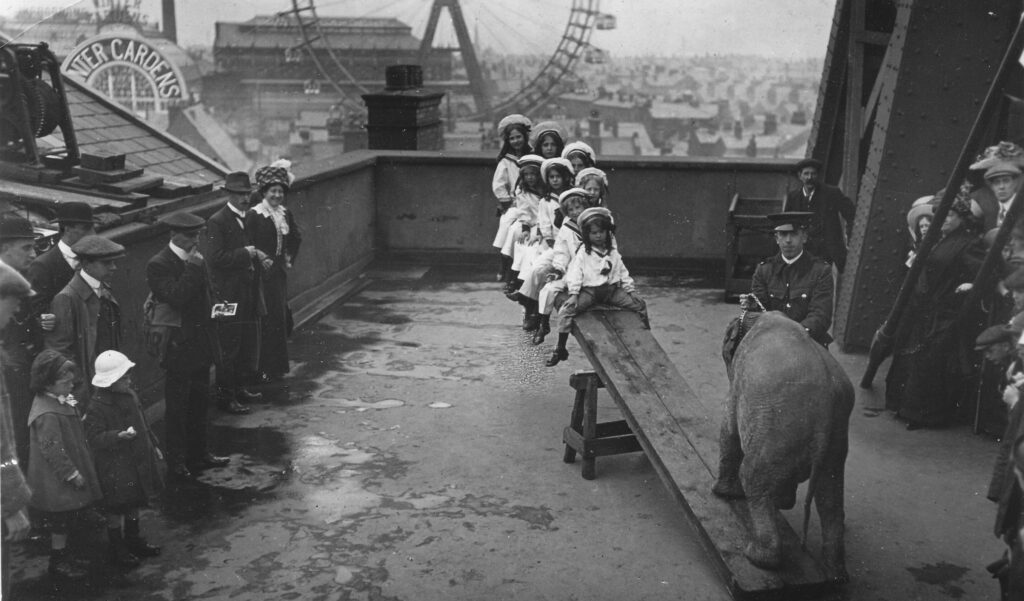
The troupe as ‘Madame Pauline Rivers Allied Revue Girls’ which includes her original troupe of military drummers from the Blackpool season, then moves on to the Hulme Hippodrome and Preston and then in Aladdin in Bath, Worcester, Cardiff and Coventry.
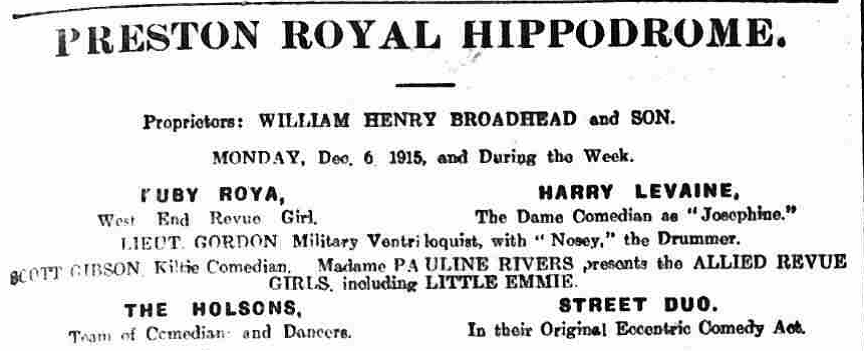
Into the January of 1916 and in a full page advert in the Stage for Star Songs which would claim, ‘Pantomime without Star Songs is like Plum Pudding without Plums, Pauline is credited with singing one of its numbers entitled, ‘That Dream Lullaby’. And in July of the year Horatio Nicholls in association with Bert Feldman and Co and Lawrence Wright Music Publishing, sincerely thanks the proprietors and artistes at Blackpool for their ‘consistent featuring of his numbers’ in the various venues of the town. Lawrence Wright and Horatio Nicholls being one and the same person and associated with Bert Feldman after a fire had severely damaged his London premises and much of his material had been lost. Regarding the Tower praise in particular, for ‘Mdlle Pauline Rivers for her inclusion of my songs in her great spectacular revue – “England’s Emblem” –including “I’ll Dream of You” sung by Little Emmie’ and ‘There’s a Little Baby up in the Moon’. Here Mr Joseph Woof Gaggs, the musical director at the Tower and of much of Pauline’s ballet music within her productions, gets a mention for playing, along with his band, one of his waltzes for the ballroom dancers. Joseph Woof Gaggs, a Manchester man, succeeded his father as conductor of the band at the Tower after his father had been the Tower Ballroom orchestra’s first conductor from the opening the Tower in 1894.
Before the summer season programme begins, the Allied Revue Girls starring Little Emmie, the clever comedienne and toe dancer’ in which Pauline’s troupe of military drummers achieve much success on their tour.
For the 1916 season the production is called ‘England’s Emblem’ subtitled ‘Roses’, a floral ballet with all the delights of a bright summer. The revue ‘is a feast of gorgeous colour and floral beauty, designed with great artistic power and performed with remarkable grace and skill.’
In reality it had been a horrible summer and had been subject to a late, wet start which added to the low sprits of those feared of and weary of the war dragging on, locked in destructive stalemate and when conscription began to put all the available men into the military. ‘From now onward,’ the Blackpool Herald reports on the ballet, ‘for the next three or four months, when the world frowns and tries to make us mortals miserable, we all betake ourselves to the Tower and refresh ourselves in summer’s own garden.’ There were those who would berate entertainment while men were dying in the trenches and both men and women suffering, and would call it unpatriotic. However others saw it as a distraction from the horrors, a fantasy that could lose the fear and dread in believing in an unreality even if only for a short length of time. Blackpool itself was advertised thus, being far away from the Zeppelins, a refuge from the horrors. It was largely a military town too, the headquarters of the RAMC, people who in the midst of battle entered the raging battlefield without guns to rescue their comrades or bring their corpses back, and were trained in the town for just that purpose.
Of the 150 local children who take part and have mainly been taken from the schools, they are led by the regular contingents, the Allied Revue Girls, Tower Girls, Tiny Tots and the Twelve Amethysts. The ballet is a dance of butterflies and an array of the different kinds of bright flowers. Little Emmie who now refers to Pauline as ‘mother’ is dressed in khaki and sings the new Lawrence Wright song, ‘I’ll think of You’. The military is not ignored for the whole of the time and Little Emmie in a later scene had a dress that unfolds to reveal the flags of the Allies and then turns into an English rose as soldiers and sailors parade. During rehearsals Pauline thought that this dance to the band’s tune needed some words and on her way home after the rehearsals she composed some words to go along with the music. She had met up with the Liverpool Scottish regiment and they were under orders to leave for the front imminently, and it must have made an impression upon her.
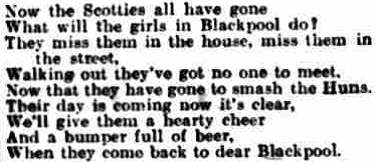
The last night of the performance was on Saturday 29th of October. Appreciating the performance, the audience cheered time and again right up to the hearty national anthem at the end. The finale consists of a large butterfly in a brilliance of electrical light and colour rising to the ceiling and the natural audience participation in the songs, ‘Pack All My Troubles’, ‘It’s Going to be a Night That Night’, ‘Some Hearts will Be Joyful’, and many others in which the packed audience joined in. Pauline was presented with flowers from Bert Feldman and the two principal dancers Little Ivy Hill (Little Ivy) and Little Emmie and several other named girls in the performance and even the dressing room staff. Little Emmie’s bouquet to Pauline was inscribed, ‘With all best luck and a big success, to my darling Mother, from your loving little girl, Emmie.’ Or alternatively in another report, ‘To my dear mother, with fondest love and kisses from your loving little daughter, Emmie.’ Whatever family Little Emmie had she had become separated from them and this perhaps was the reason for her becoming unofficially adopted by Pauline. Pauline reciprocated the gestures by returning gifts to the girls and all the children received at least a box of chocolates from the management. The costumes, mostly to Pauline’s design had been created by her sister Lottie a regular on the show along with regular costume designer, Samuel May.
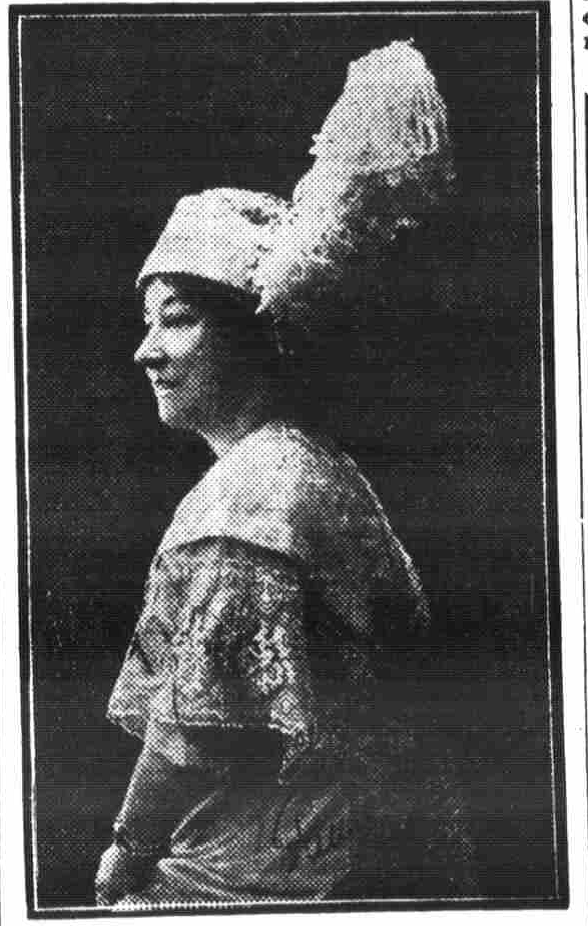
Pauline, always on the look-out for talent it seems, engaged a young girl called Connie Nicholson, the daughter of the head of the Winter Gardens salon. She had been a hit at the Palace in the Chief Constable’s poor children’s clothing fund appeal revue. She will join the troupe on tour in Bath.
Into 1917, and after the pantomime season, the Allied Revue Girls are in variety at the Wakefield Playhouse and onto the Coliseum at Oldham. By June the rehearsals for the summer show are in full swing and Pauline is once more credited with promoting Lawrence Wright songs, in particular, ‘The Kiss That Made You Mine’ and Little Emmie singing, ‘There’s a Ship That’s Bound for Blighty’ which was also sung by the Ideals at the North Pier.
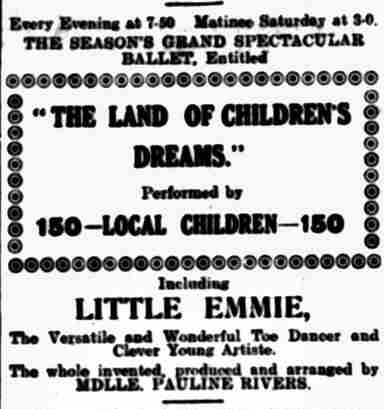
After the 1917 season where there doesn’t seem to a review of the production, Pauline and her troupe move into pantomime in Aladdin and are first at the Royalty Theatre in Chester. It is the year that the Americans enter the war and the first contingents of personnel are the medics whose first port of call was Blackpool to train with the RAMC, though those soldiers who had experienced the ravages of the war did not at first get on with the fresh faced Americans who in the innocence of their commitment were thus unaware of the destructive nature of modern warfare.
In 1918, the Twelve Little Amethysts are first recorded in February in Aladdin at Warrington. The end of the war might not be very far away but the murmurs of peace negotiations are greeted with sceptical minds. Here, Little Emmie is not mentioned in the lead, but instead it is Baby Hilda and Wee Maria. Songs include, ‘Oh! Oh! Oh! It’s a Lovely War’, a title reprised in film much later on, as war weariness has long since set in and, in the fairy ballet, ‘Cheerio Sailor Boy’, and, ‘There’s a Little Baby Up in the Moon’, these songs and dances ‘never lack applause.’ By the end of March the tour continues and the Allied Revue Girls are booked for the Smethwick Empire, a variety performance that is expected to be enhanced by Little Emmie, ‘a rising young star comedienne and dancer’. In April the Allied Revue Girls with Little Emmie prominent are at the Empire in Mansfield in a patriotic routine of songs and dances which include the regular and original ‘Troupe of Military Drummers.’ Then on to the Queen’s Park Hippodrome in Harpurhey, Manchester which features ‘that great favourite, Little Emmie ‘one of the daintiest and cleverest comediennes and dancers the variety stage possesses’ and Madame Rivers has introduced new effects, and the whole construction of her entertainment provides considerable enjoyment to those who see it.’ (The Guardian, Saturday April 27th 1918.) And at the end of the month and into May, the same troupe is booked for the Preston Hippodrome again where it is pleased to announce that, ‘Pauline Rivers is paying a return visit with the Allied Revue Girls, (including Little Emmie), that collection of talented young femininity from the Fylde District which, trained in the Blackpool school, is a delight to follow.’(Preston Herald 27th April 1918).
In June the Military Drummer Girls were seconded to the Tower carnival performance of splendid variety for the RAMC and Mayor’s funds for prisoners of war, an event which collected over £1,000 (£43,284.51 in 2022) in total.
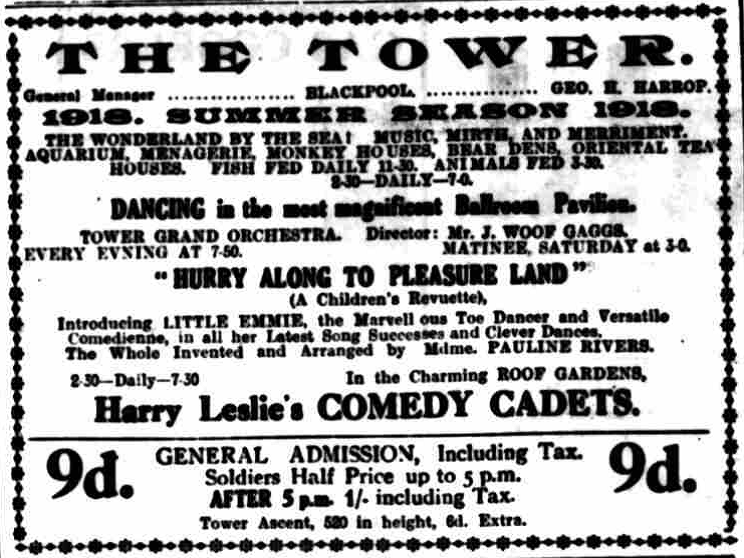
The production of the season was given the title, ‘Hurry Along to Pleasureland.’ The show continued in its patriotism towards the war and played to the American content with a chorus song, ‘Hi ji, ri yi, rah, rah’ described as an imitation of the college yells of the varsity boys and then a Ragtime dance. And there is reference to the native American Indian in the song, ‘Lone Star’ sung by the captivating presence of Little Emmie.
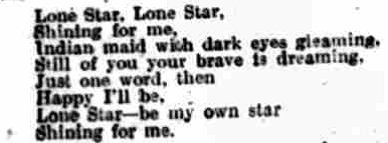
There are young girls as Red Cross nurses attending to wounded Tommies, and singing the ‘Blighty Song’ and then the popular ‘Me and My Gal’ a song which would be sung in protest in the Tower when the war between nations was over but the conflict between the rich and privileged and the poor and undervalued continued in society. The tank Julian which had been positioned in Talbot Square in the town to attract war Funds was also represented, and the Allied Revue Girls were dressed in costume to represent money. The finale consisted of a brilliantly illuminated aeroplane descending from above and when it lighted upon the ground, Little Emmie stepped out of it and danced a dainty toe dance around it. The aeroplane then ascends with two flying officers within. This is followed by the ragtime, performed by Little Emmie and the Allied Revue Girls, ‘When the Sun Goes Down in Dixie’. A grand march past consisting of the popular tunes of the day and featuring, ‘The Aviator,’ the aeroplane being now a successful introduction into modern warfare, followed.
There were many costumes all conceived and created by Pauline and Lottie Rivers and made by Samuel May of London. Indeed by 1926 we have this advert in the Hendon and Finchley Times of June 7th 1929 Possibly Lottie Rivers or Pauline’s name for Lottie’s business.

While there were many Charlie Chaplins, and little girls running around in nighties, and there were also black faced imitations of Afro Americans, unquestioned at the time but representing the self-imposed polar opposition of the two races in social mixing.
In October the fete at the Tower for funding for the British and Italian Red Cross Society included, among a variety of entertainment and opened by opera singer Clara Butt, and music augmented by the Band of the Royal Italian Carabinieri, was the revuette of Pauline’s, ‘Hurry Along to Pleasureland’. With hopes and whispers of an end to the war in the air, the Red Cross work would not finish when the war would have ended but funding would still be essential to an estimated amount of £2,600,000 (£112,539,718.14in 2022) for the following six months.
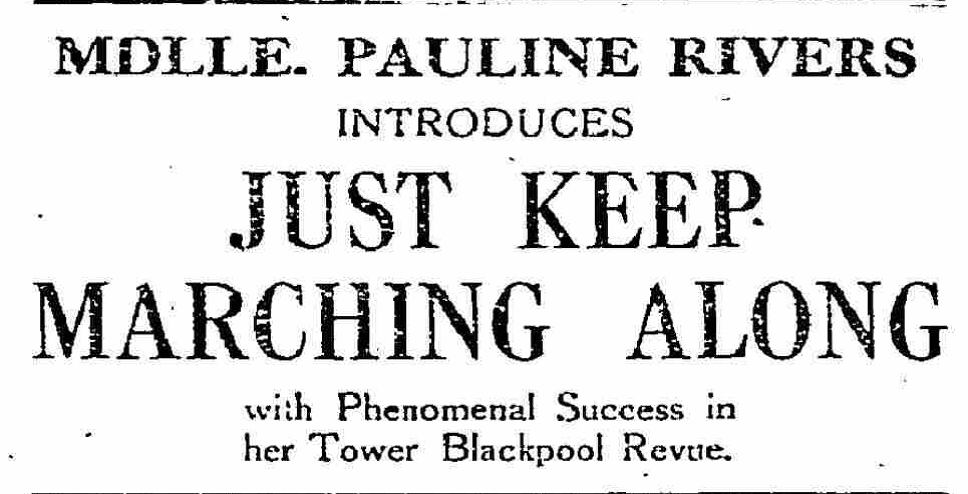
The revue ended on 26th October and an addition was the presentation of four wounded soldiers dressed in the hospital blue uniform of the large military hospital situated in the town and who stepped forward to present Little Emmie with yellow and white chrysanthemums as a token of appreciation of those at the hospital for the entertainment that both she and Mme Pauline Rivers had provided for them during their recuperation. And the usual applaud and floral gifts were presented to Pauline Rivers by the management. After the end of the summer season and by November, the war ended in a ceasefire which was dearly hoped, by everyone, that it would indicate the end of the war entirely when a peace treaty might be signed, but it would not be to the middle of the next year before this would happen.
For the pantomime season Little Emmie and the Twelve Sunshines, or called Twelve Amethysts elsewhere, are in Aladdin on Boxing Day at the Royalty theatre at Chester and then in Sinbad for a short spell in Cheltenham in 1919 where, to the tune of Auld Lang Syne, Pauline received a large bottle of whisky at the finale at the end of January before moving on to the Tivoli in Hull.
The production at Blackpool is entitled, ‘The Rose of Happiness’ which opened on Saturday the 19th June the day that the Versailles Peace treaty was signed to end the war. Within this performance Lawrence Wright is pleased to announce in a newspaper advert that the songs from his company, ‘I Wanted Love’ and ‘Take Me Back’ are so popular that they are sung nightly by the audiences along with the performers.
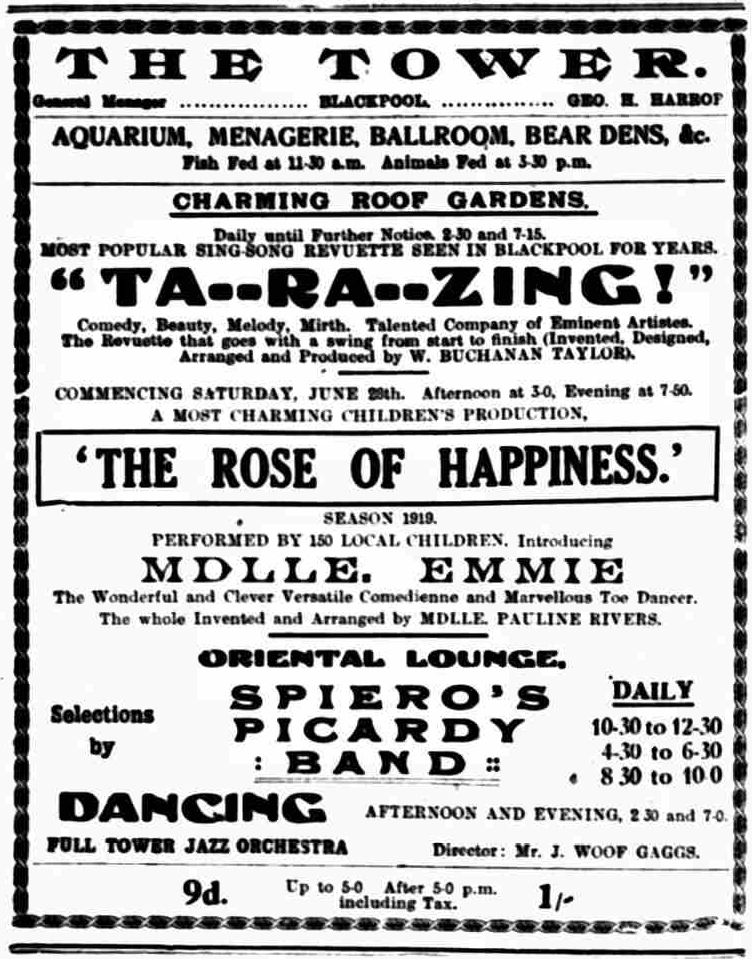
This year’s fantasy production began with pierrots and pierrettes, a circus clown and Little Emmie singing ‘My Californian Girl’ which, as usual for Emmie, was well received by the packed audience. A teddy bears’ picnic and a cats’ bridge and then several goldfish jumping out of their bowls followed. The Sunshines and Amethysts appear with specialist dances and songs as the scene changes to roses of red and white as Little Emmie sings ‘Rose of Surrey’. Then there is a carnival of dance and song which brings in modernity to the traditional fairy fantasy as Little Emmie as a jazz conductor to the Allied Revue Girls sings ‘Everybody’s Jazzing Now’, with a suspected reflection of the now (2022) outdated patronisation of the racial differences. By the finale, the Versailles Peace treaty had been signed and the weary world could rejoice for that fact, if not for the continuing inequality in society, as the eventual peace ball at the Tower would be hijacked by protesters. The finale once more includes the electric curtain lifting with a full chorus singing, ‘Let the Great Big World Keep Turning’ and an illuminated aeroplane ascends and to the front a woman dressed in fashionable white approaches ‘bearing the laurels of peace’ and with the joyous bells of the peace ringing and the production finishing off with the song, ‘Going Up.’
The final performance was the 25th October and at the end of the show to the tune and the words once more of ‘Auld Lang Syne’ Pauline, at the curtain, received her many gifts to continuing applause, and all the children received a box of chocolates as gifts were exchanged between many of the participants and from the Tower management. To Pauline from Little Emmie was a bunch of roses inscribed, ‘To my dear mother, wishing you a very happy evening, with best love from your bundle of love, Emmie.’ Little Hilda who partnered Emmie in the song ‘Panama’ received a special bouquet of flowers along with Emmie. Pauline’s dressing room was once more filled with gifts of silver plated ornaments and table ware and flowers and lacework. What is interesting is that a gift of a silver plated model of the Victory aeroplane as an egg cup stand which was inscribed, ‘from your little rose of happiness’ must have been quite treasured and it is a wonder what happens to theses personal things, whether once they have lost their significance and provenance in the passage of time they get forgotten and even maybe thrown out. In all it had been the best season to date perhaps emphasised in the euphoria of the ending of the war.
From the ballet season at the Tower they would tour with the Allied Revue Girls from November 10th, to towns which would include Barrow, Edinburgh, Darlington, Newport, Bootle, Wigan, Chesterfield, Northampton as predicted by Pauline to a Blackpool Herald reporter.
Into the 1920’s and the world spilled itself out of the horrors of war and a new social era began. The pantomime season is underway and Pauline’s troupe of singers and dancers is to be found at the Royalty theatre in Chester in January in the Fairies ballet when the ‘combination of colours produce a beautiful effect’ as the usual interlude within the main story. Cinderella, the pantomime, is a two week show which finishes on the 10th of January when Pauline’s dancers move to the Grand Theatre in Blackpool in ‘Dick Whittington’. On home soil for many of the troupe there is the comfort of a home bed rather than the congestion and the weariness of travel, though this is nevertheless associated, in youth, with the independence and excitement of being away from home. Here at the Grand Theatre with the pantomime production, the Eastern ballet stands out as ‘a gorgeous and ambitious effort beautifully realised’ and ‘without doubt the most striking features of the production are the big ballets and the excellent grouping and arrangement of colours,’ in the opinion of the Fleetwood Chronicle reporting, and in which several of the main characters, some being local children, all trained by Pauline Rivers, are given a mention.
By April, Pauline’s troupe of Allied Revue girls are twice nightly on the variety stage at the Smethwick Empire.
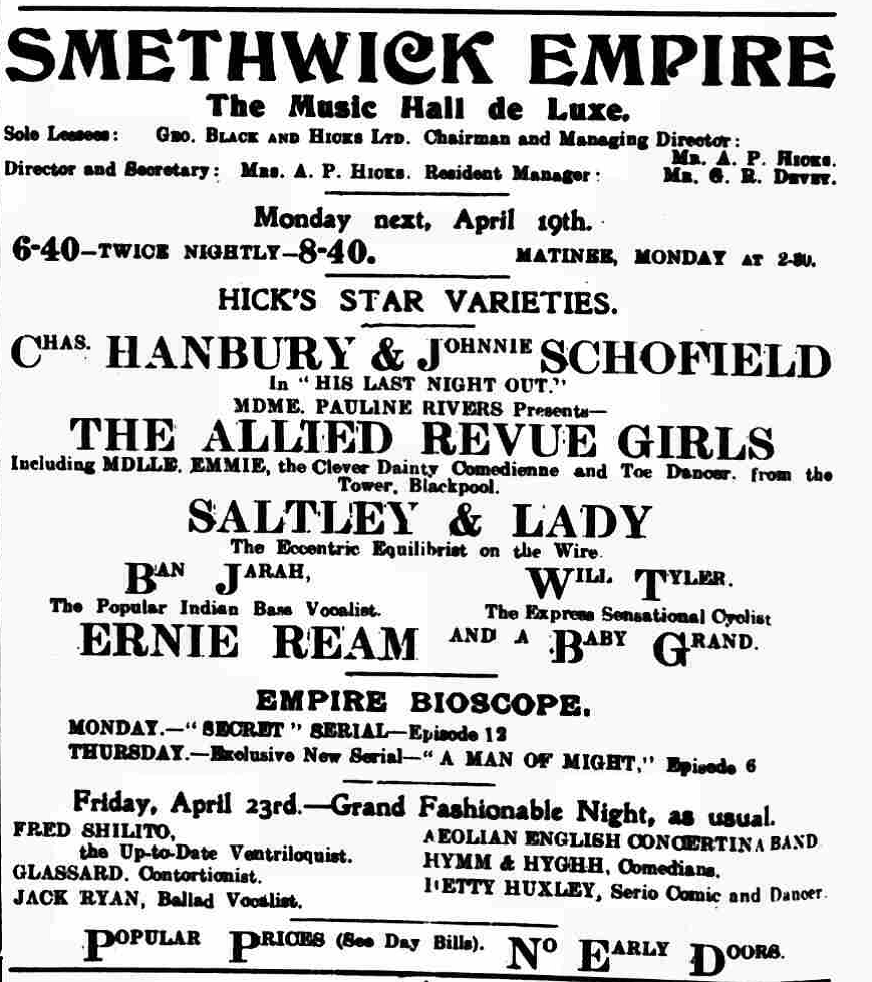
In the first week in May the Allied Revue Girls are at the Palace in Plymouth and then travel all the way back up to Liverpool to the Olympia where, for all the weariness of travelling and heaving of suitcases over that distance, are only given the credit of putting on ‘an acceptable show.’
Songs for the shows are generally supplied by the leading songwriters and publishers of the day, Bert Feldman and Co., Francis and Day, and the Lawrence Wright Music Co. and in the ballet at the Tower for the year 1920 entitled, ‘East, West, Home’s Best’ the songs featured were from Lawrence Wright (as one of his personae, the other being Horatio Nicholls) and sung by Little Emmie, and entitled, ‘Every Day You’re Away Means A Teardrop’ or by Flo Dalland and entitled, ‘They’ll Never Know Me In Old Dahomey, and another song not mentioned in the advert, but described in the newspaper as, ‘Where Does The Rhinososorus?’
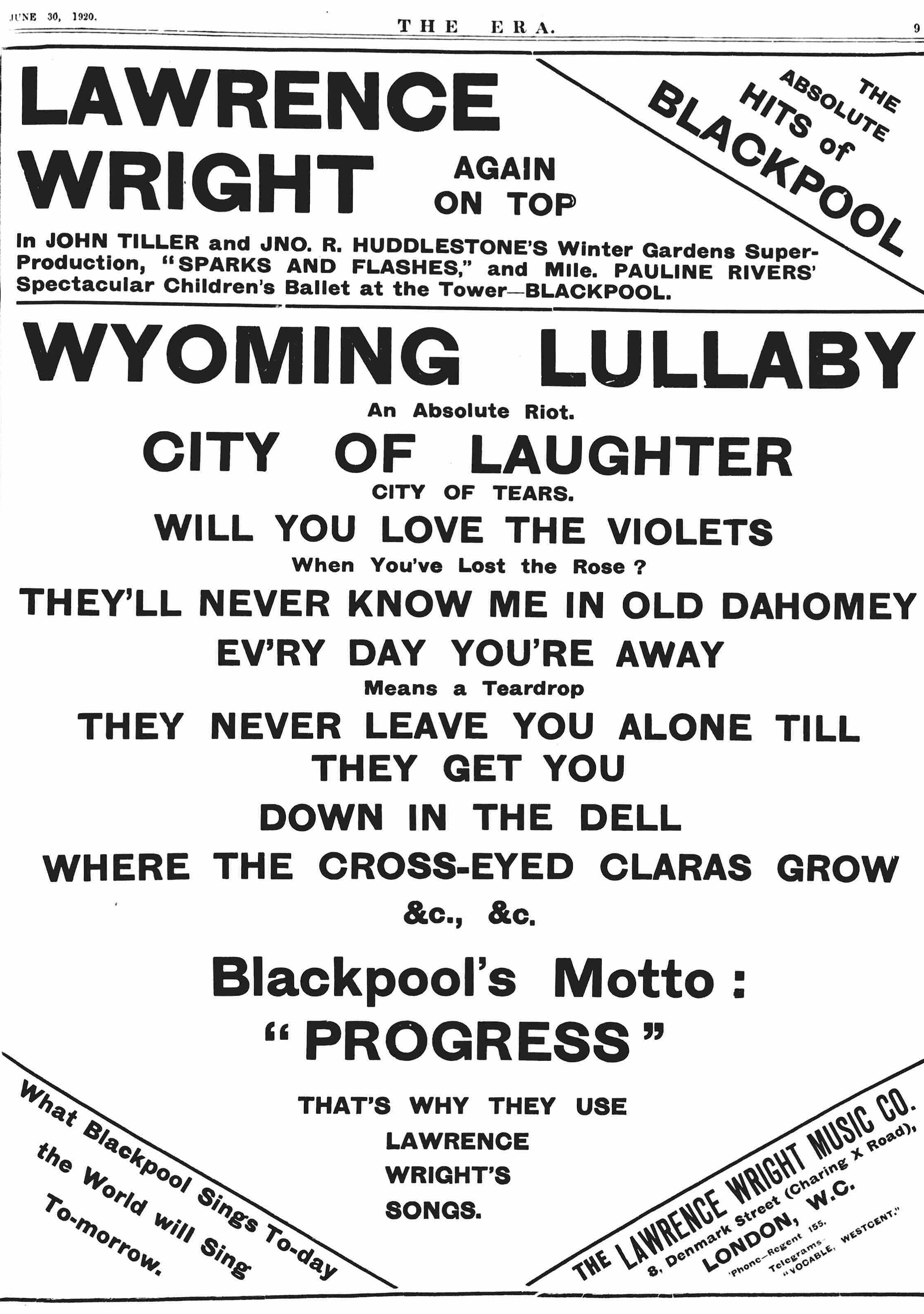
Away from the ballets and pantomimes, Madame Pauline Rivers, as a celebrity, was called upon to judge the dance competitions at the Tower ballroom and the one on this occasion in September, was called the ‘Wyoming’ as the Wyoming Waltz appears to be a popular tune of the day. Prizes were awarded for the first three places but a dancing couple from Derby were under the impression that a fourth place prize should have been awarded too, and voiced their query in their local paper, but to no avail it seems. The same Wyoming Waltz competition was held at Morecambe Tower Ballroom (a building eventually demolished by 1960) and in which Pauline Rivers was a judge and for the busy ballet director, there was no report of controversy connected to this dance on this occasion.
After the Tower Ballet season, by November the select few dancers included in the Allied Revue Girls moved on to the Empire Theatre in Longton, Staffordshire and the advert describes their presence as the ‘latest song successes and beautiful costumes’ and where the military drumming is a feature of the performances;
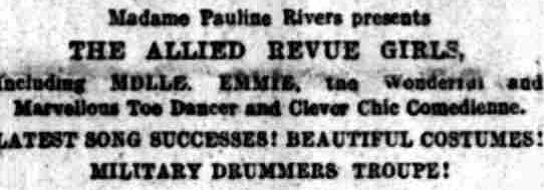
In the following year of 1921, the troupe is first at the Theatre Royal in Pauline’s home town of Bath in Aladdin as ‘Pauline Rivers’ Twelve Sunshine, Juvenile Singers and Dancers’. Here ‘Little Emmie’s wonderfully graceful toe-dancing is watched with pleasure, and to Pauline Rivers must be accorded praise for the skilful way she has not only trained this clever little lady, but also her 12 Sunbeams and the corps de ballet.’ The feature for the year’s pantos is the Ballet of Fairies where Little Emmie regularly scores that success.
The troupe then move on down to the regular venue of Reading and the County Theatre there. This time the panto is Sinbad, and, as these pantomimes are arranged months in advance as an advert in June predicts the cast for the show. In Cheltenham and Gloucester, Cinderella the panto moves on to Newport and now in Dick Whittington where Madame Pauline’s troupe are described as the ‘twelve peridots – clever juvenile singers and dancers’ in their speciality performances and, in early February, they are at the Dudley Opera House in Cinderella described as Pauline Rivers’ Twelve Tower Girls. The next show in February meant travelling all the way up to Liverpool for shows at the Bootle Metropole where the speciality performances of Little Emmie and the Twelve Sunshines included ‘clever dancing and pleasing singing’ and then across country to the north east to South Shields, another gruelling journey no doubt, then back in April to the Pavilion at Liverpool. Still in April the show moves on to the Hippodrome at Preston where, ‘Madame Pauline Rivers “Allied Revue Girls” give a most enjoyable entertainment, in which all the latest popular crazes are used to advantage, Little Emmie, leader of the troupe, showing great versatility ad promise.’ So Pauline is always shown to be adventurous and forward thinking in her dancing, and not afraid to introduce modern elements into the traditions of dancing. From here the relatively shorter distance over to the Hippodrome in Hulme is the next venue.
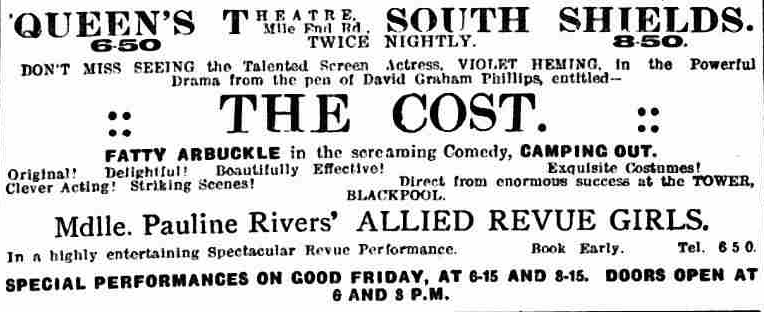
The Tower ballet for the summer season was entitled, ‘Fads and Fancies’, though no information via newspaper reports on the nature of the ballet has been viewed yet. The songs from the ballet advertised though, were the Lawrence Wright numbers, ‘Omaha’ and ‘Silver Star’ sung by Little Emmie, ‘Going Back to Dixie’ and ‘Playthings’. Little Emmie also sings a Herman Darewski song, ‘Feather Your Nest’. The song ‘Silver Star’ was also used as the promotional title of the dance competitions held at various resorts throughout the north of the country and sponsored by the Daily Sketch whose proprietors were guests, in their own kind of wayzgoose, at the ‘Silver Star’ staff outing of the Lawrence Wright Music Co at Blackpool in July. The char-a-banc trip went out to Kendal, where the town centre was decorated with Silver Star posters and where crowds were wearing the Silver Star badges, which must have been part of the promotion. There were stops at many of the rural towns of Lancashire en route and a return via Morecambe Winter Gardens where the songs were forever popular. It was a singing, drinking, eating tour in which many of the current entertainers and managers of the Blackpool venues were present, including Pauline and Little Emmie.
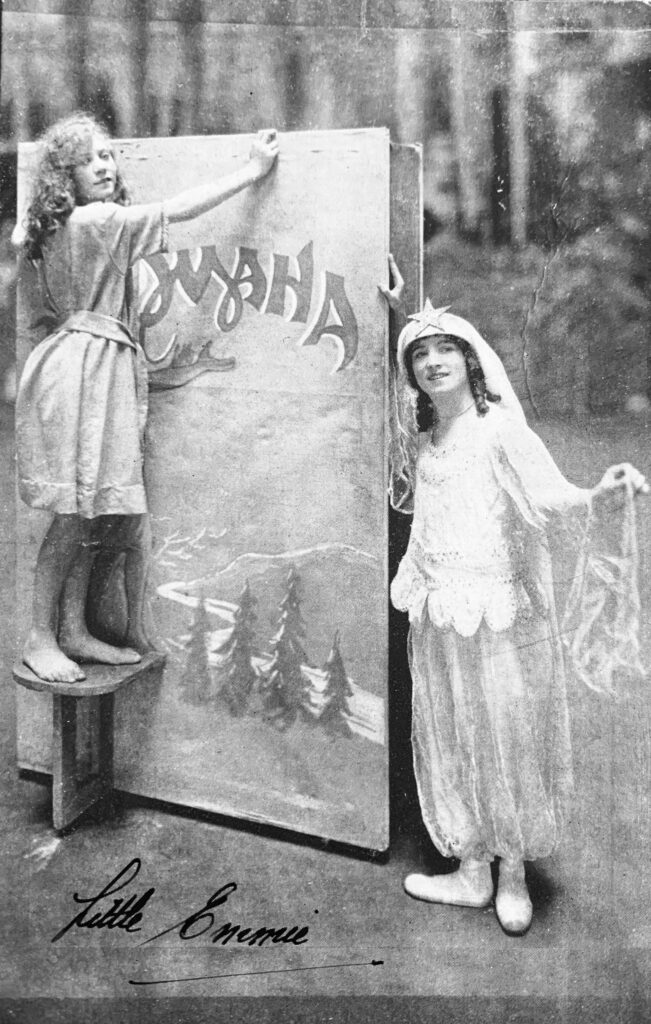
When the summer season was over it was pantomime and revue time again, and during the year Madame Rivers would have had to organise the venues, the travel arrangements and the accommodation for the performers.
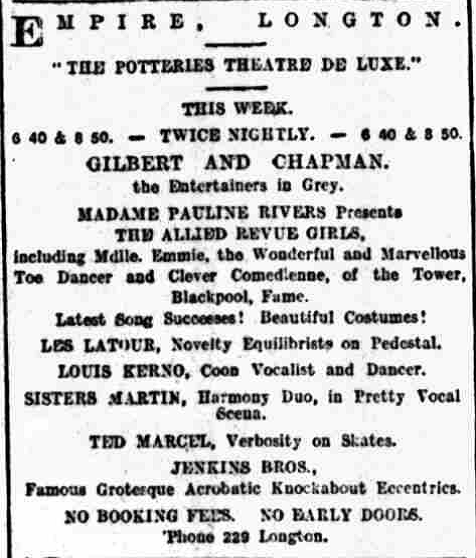
At the end of this year the troupe of the Twelve Little Amethysts was advertised as being on tour in Sinbad at Wrexham, Longton, Grimsby, Leamington Spa and Coventry, a tour arranged by Donald Keir for November. After that the Twelve Sunshines performed in Aladdin at Leicester where Little Emmie as the premiere danseuse and the youngsters, ‘were the most appreciated of the pantomime’. After that the next stop was Bath and a change of pantomime to ‘Dick Whittington’ though performances would no doubt follow the same routine for all the pantomimes. Into the new year in January the troupe is once more at the Opera House in Leicester a regular venue, once more playing in Robinson Crusoe.
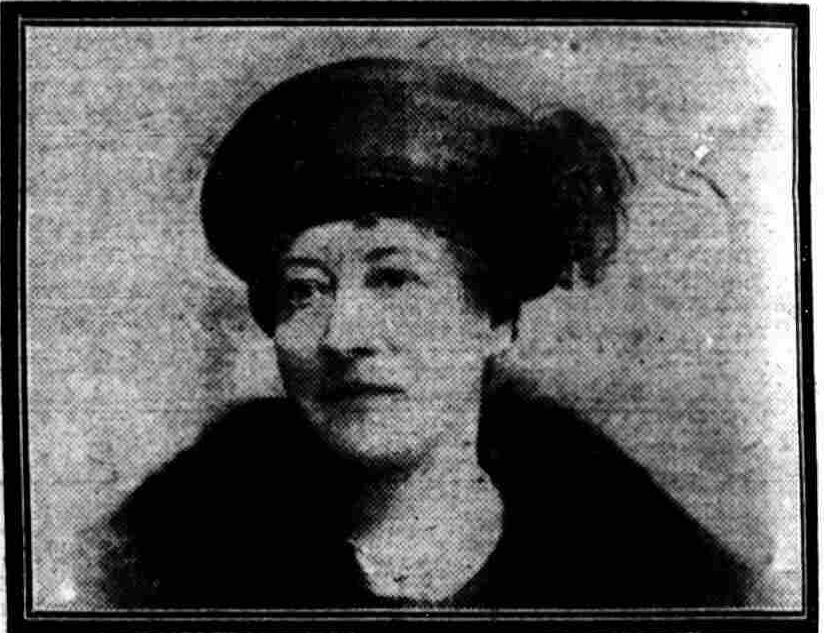
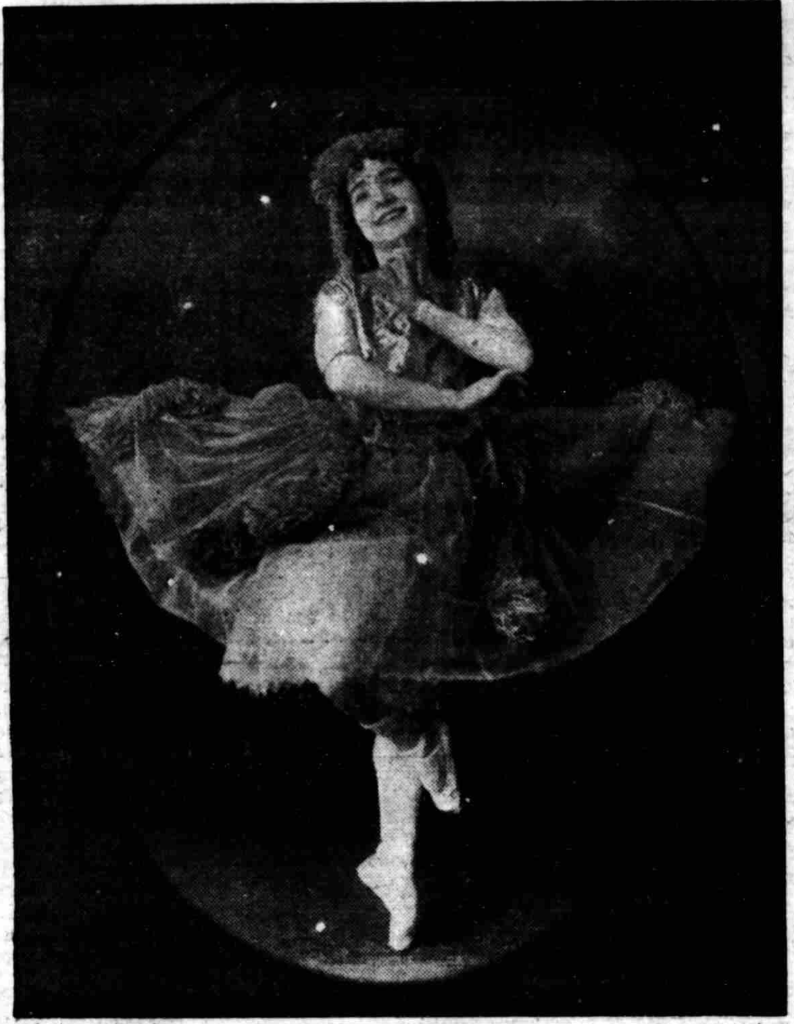
From Leicester the troupe moved to Reading and the County Theatre. Now it was Cinderella which featured the dancing as the ‘Home of Butterflies’ scene in which the Twelve girls, now described as the Tower girls, were warmly applauded. Then it was Dick Whittington and his Cat at Bath and later in the month, in Sinbad at the Metropole in Liverpool where the dance troupe is now the Little Amethysts and then the Twelve Little Amethysts as they are at the Grand Theatre in Halifax.
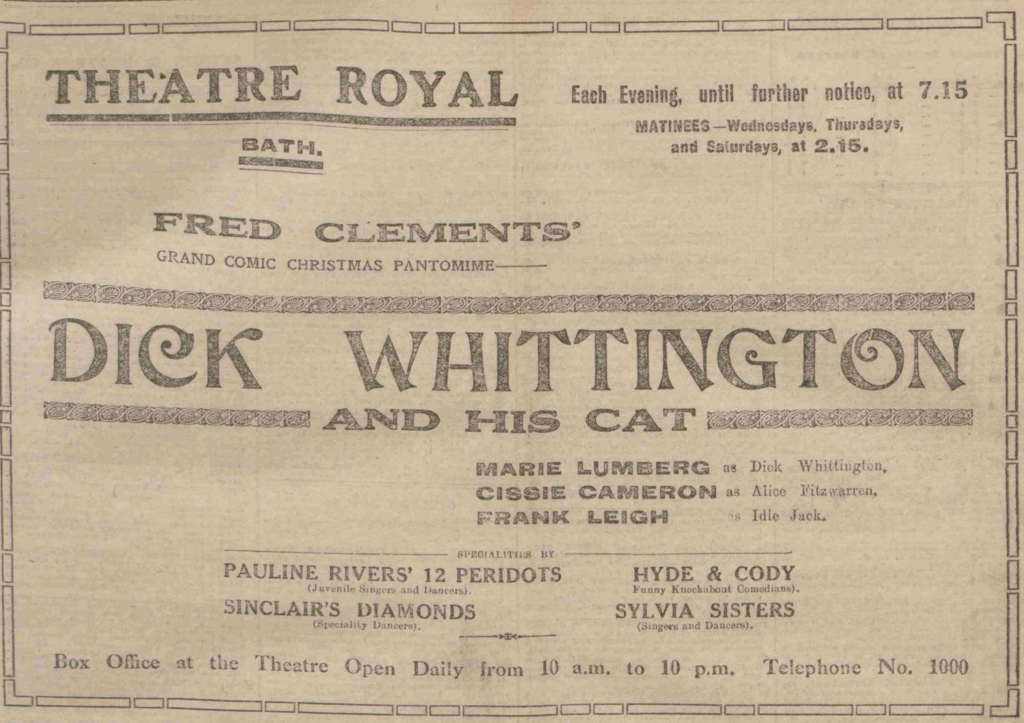
And into February they move on to Nottinghamshire.
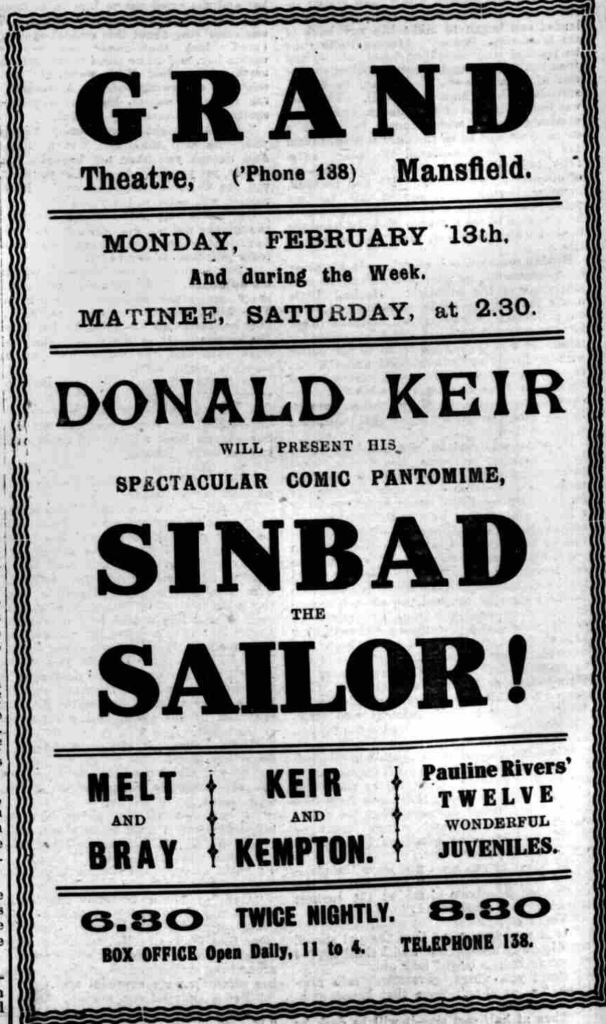
Back to home comforts on home territory in Blackpool before June, the Tower ballet this year was entitled, ‘My Lady’s Work Basket’ a title continuing to reflect the attitudes of the day and perhaps the status of the female and the ‘Lady.’ Here ‘in the gorgeous and beautifully appointed ballroom pavilion, one of the finest in the world, there are dance sessions nightly to the music of the Tower Grand Orchestra under the able conductorship of Mr J Woof Gaggs.’ The songs of the regular composers were given a good airing at the various venues in the town again and those of the Lawrence Music Co., in the ballet at the Tower and sung competently by Little Emmie, included in particular, ‘Hello, Old What’s a-Name’, but also ‘Golden Dreamboat’, ‘Rainbow’ and ‘Sally’.
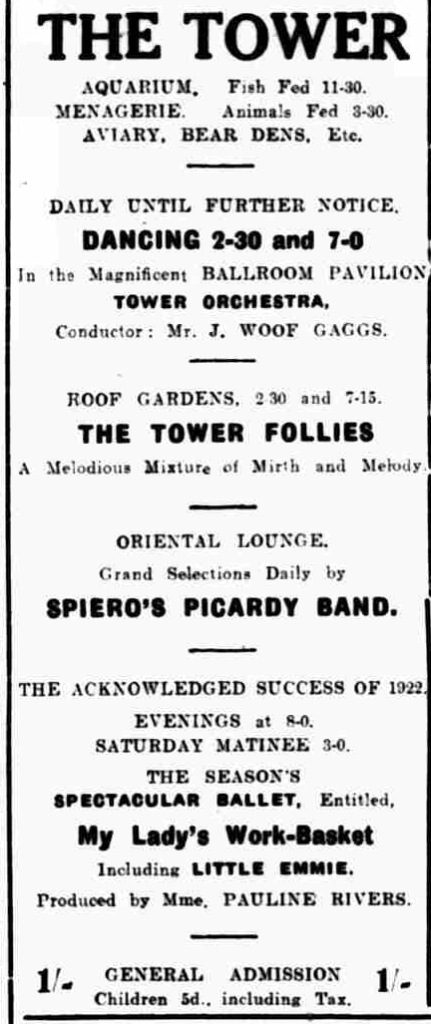
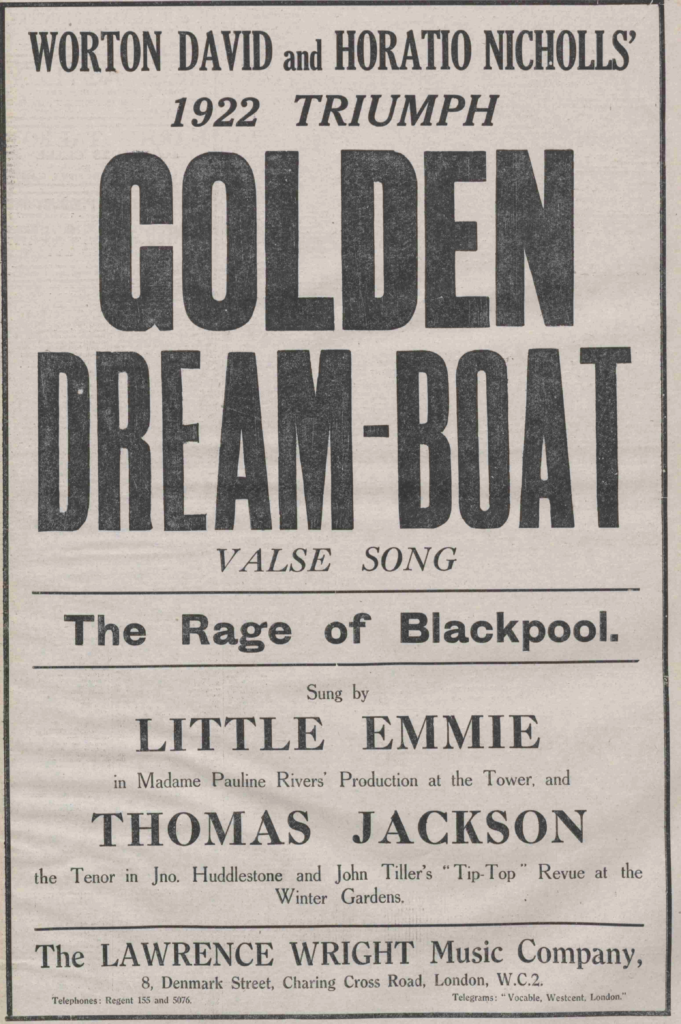
It seems also, in this season, that the Twelve Allied Revue girls are featured in another ballet extravaganza in the circus ring produced by George Lockhart, the ringmaster, and entitled ‘Love on a Farm’. Here the dancing of Pauline’s direction is not afraid to keep up with the times and indulge in a foxtrot ‘toddle’ along with the new song and dance craze of the same title, ‘Roaming’.
When the Blackpool season is over in early October, the new pantomime season sees the revue troupe in Sinbad at the Coventry Opera House as ‘ ‘‘The Little Amethysts’’ (‘from the Blackpool Tower’) are another great attraction. They perform some most delightful and effective dancing and add materially to the conspicuous success of the pantomime. Other specialities are submitted with cleverness by Pauline Rivers.’ Little Emmie sings, ‘Granny, You’re the Mammy’s Mammy’ and as a duet with the principal girl, Rosie Fitzgerald, ‘Just a Little Love Song’. At the turn of the year, the troupe then move onto Walsall by early February at her Majesty’s Theatre in the same Donald Keir production. The Twelve Allied Revue girls are then in variety at the Hippodrome at Bury and the Royal Hippodrome at Preston in March, the Metropole at Manchester in April, the Pavilion in Liverpool.
The ballet for the summer season of 1923 at Blackpool was entitled, ‘The Birthday Party’, its relevance being that it was the 21st anniversary of the first ballet at the Tower produced by Pauline.
The year 1923 was the year of the first Blackpool Carnival with its Promenade street party of over 200 decorated vehicles, grotesque figures, a battle of flowers and the ‘king and queen’ of the carnival arriving from Manchester by aeroplane on the beach. A full colour display and a crowded promenade to watch the procession, it was an elected duty of Pauline Rivers among a select few to act as prize giving judges to the best tableau. ‘The magnificent display of flowers, the beautiful and artistic blending of colours, and the skilful working out of designs will never be forgotten by those who saw it.’ It was in the skill in design that Pauline would have been regarded as an exceptionally capable judge.
The ballet at the Tower featured music by Bert Feldman which was printed in a full page spread in the Stage under the description, ‘Feldmanism’.
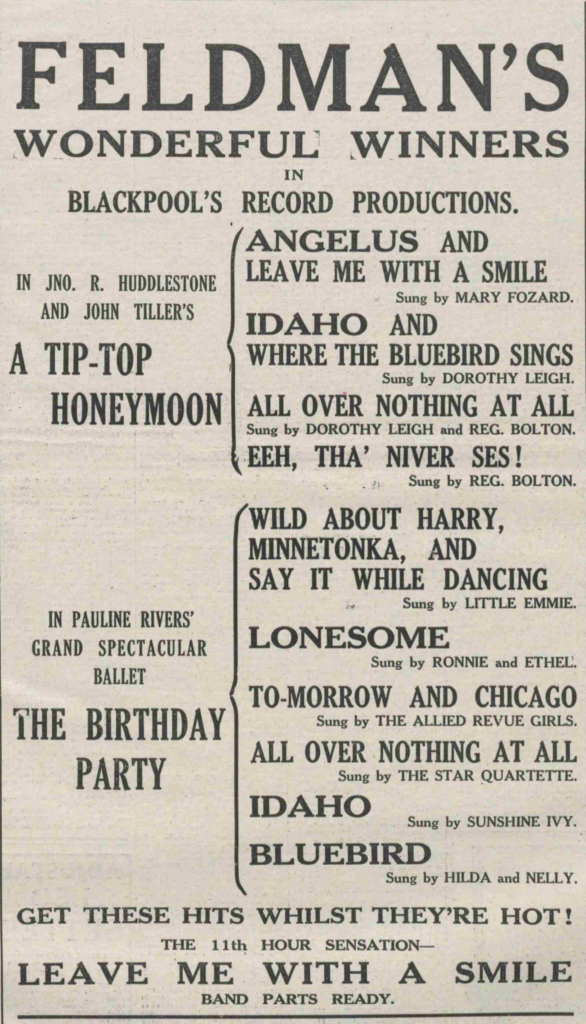
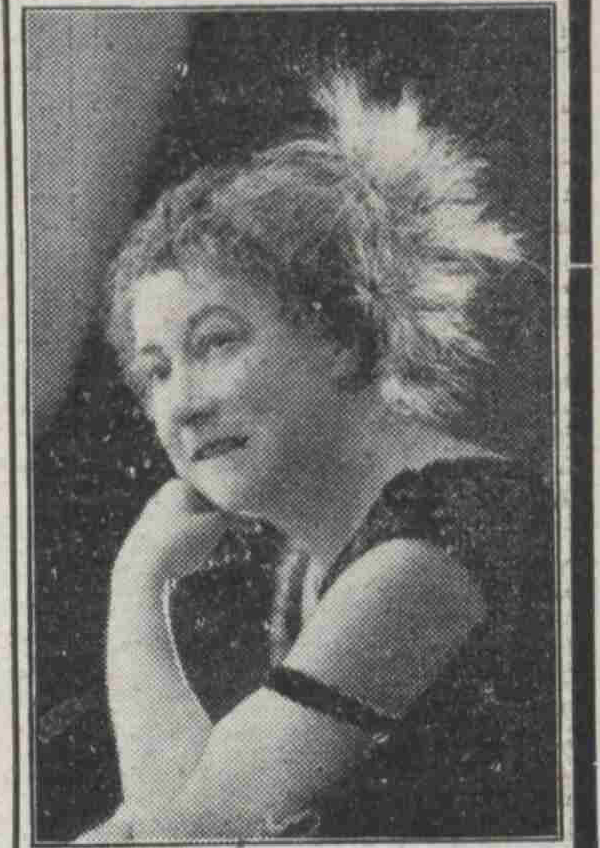
When the panto season for the year had begun after the summer ballet season has ended, the Twelve Amethysts are seen in Aladdin at the Royalty Theatre in Chester where they are ’loudly applauded for their efforts in a drum and toe dancing scene.’ In February the pantomime moves to the Rhyl Pavilion and then over to the Pavilion in Liverpool in March.
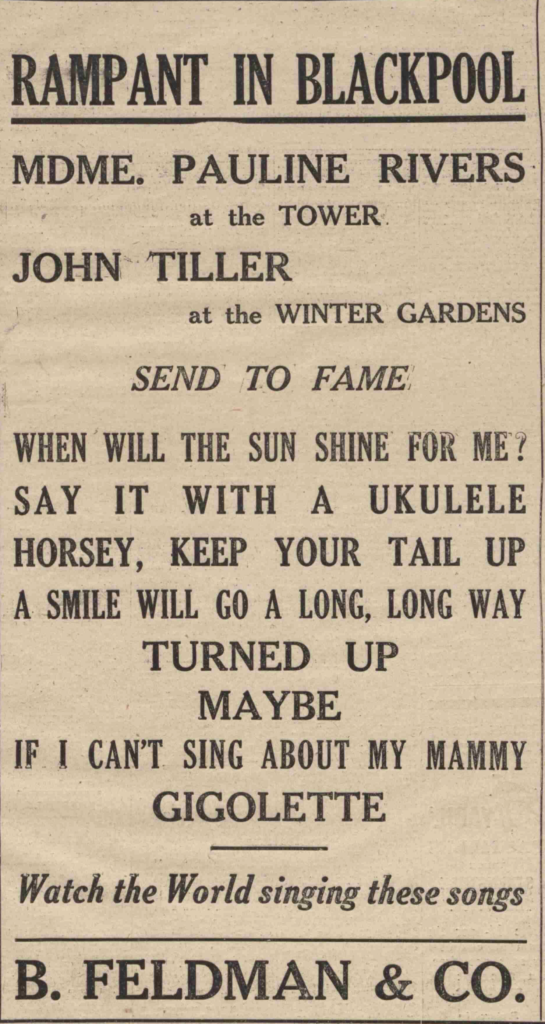
The Tower ballet for the season of 1924 is entitled ‘All the Fun of the Fair.’ An evening performance and the usual Saturday matinee, it meets with the usual success for the 150 local children who take part and who have been trained by Pauline Rivers. The star performer continues to be Little Emmie as premiere danseuse.
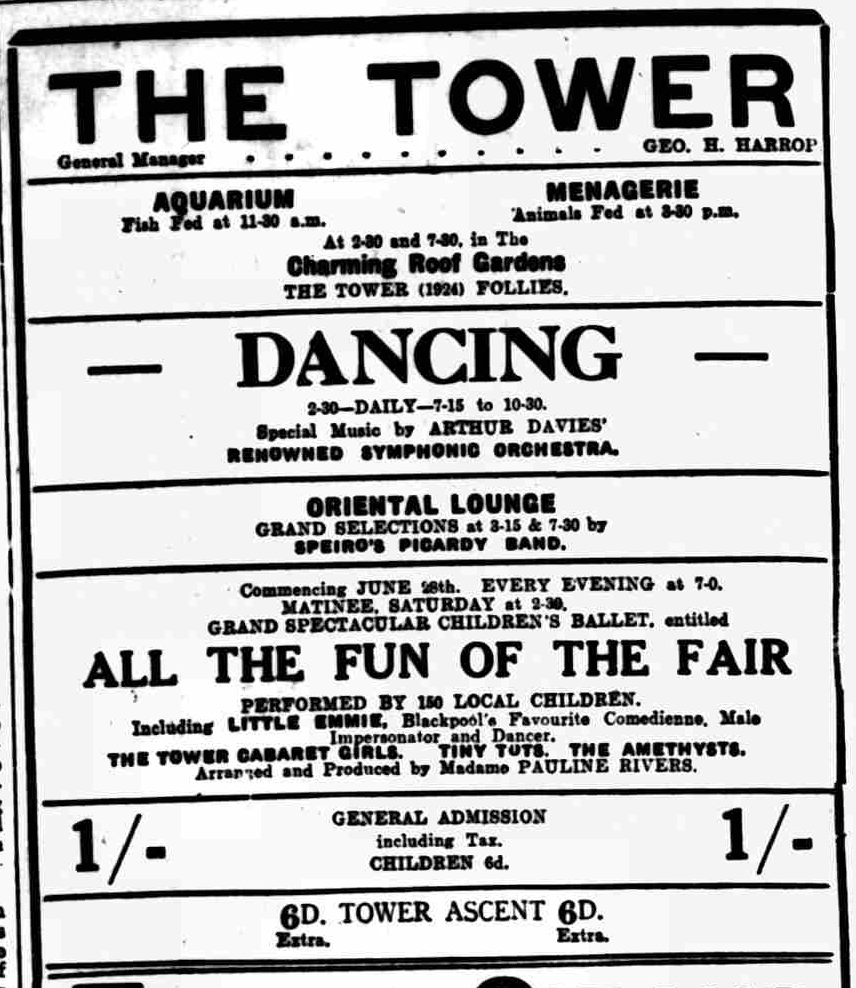
‘The Children’s ballet, “All the Fun of the Fair”, produced at the Tower, Blackpool, by Madame Pauline Rivers, is described as “absolutely it”, a contemporary buzz phrase. The description is certainly appropriate. ‘From the moment that Alfred Davies’ fine orchestra opens the proceedings with chorus strain of the famous carnival song until the song, “Gigolette” in the finale, there is not a moment that is not highly interesting.’ There are plenty of songs during the performance. ‘Say it with a Ukulele’ has an especially large ukulele as a prop as well many a small one and in ‘Horsey, Keep Your Tail Up,’ there are two horses which are presumably two-person horses in costume. Other songs include, ‘Maybe’, ‘If I Can’t Sing About Mammy’, ‘A Smile Will Go A Long, Long Way’, ‘When Will the Sun Shine for Me?’, and ‘Spearmint’. These are all ‘delightfully produced by the Tower’s favourite producer, Madame Rivers. Little Emmie as usual, plays a conspicuous part throughout, and scores a great personal as well as a musical success.’
In the pantomime season the troupe is at the Royal County Theatre in Reading and then from Boxing Day for two weeks at the Opera House in Northants. At Northants the pantomime is described as, ‘The ballet arranged by Mdlle Pauline Rivers, is a strong feature.’
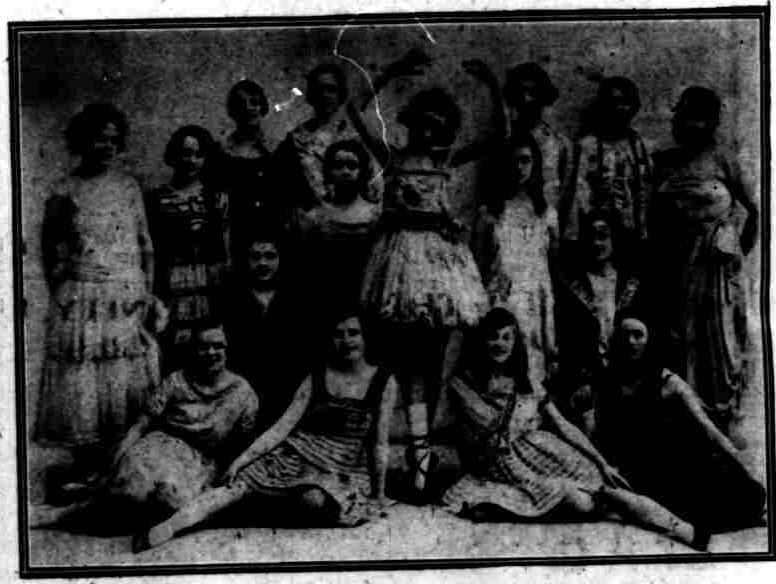
This pantomime runs into the following year of 1925 and the troupe continue a busy schedule appearing in Luton where the same picture and caption appears in the ‘Beds and Herts Pictorial and Tuesday Telegraph’. These Twelve Amethysts are at the Grand theatre in Derby in January, moving on to the Nuneaton Hippodrome where the troupe is described separately as both the Twelve Amethysts and the Juveniles. Within the pantomime are several Lawrence Wright songs claimed as the ‘outstanding success of the panto.’
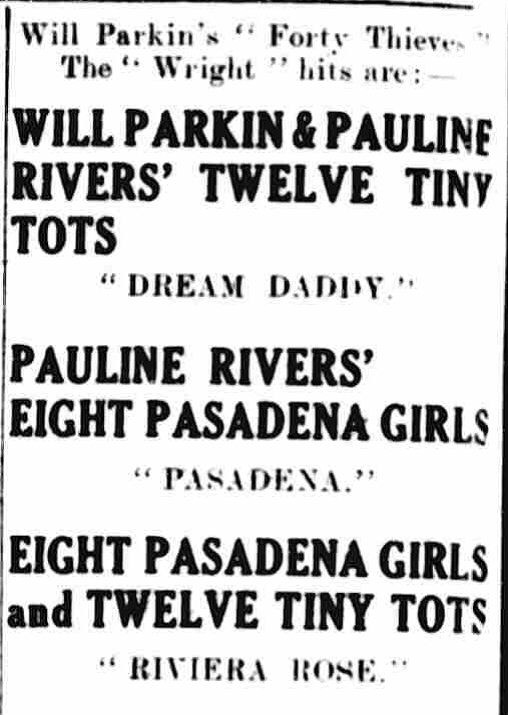
There is not much more information on the progress of the pantomime engagements in this part of the year and it is not until April that Pauline Rivers’ Pasadena Girls are in a light hearted variety revue entitled ‘Loose Leaves’ at the Hippodrome in Norwich.
In Blackpool, the season’s ballet with the 150 children is entitled, ‘Pansies’ and includes many Wright songs which are also included at the Winter Gardens with that other famous and more mature of age troupe the John Tiller dancers. Here in this year, the Fleetwood Chronicle proudly proclaims, ‘The Tower, Blackpool’s wonderland, still retains its magnetic influence over all classes of visitors.’
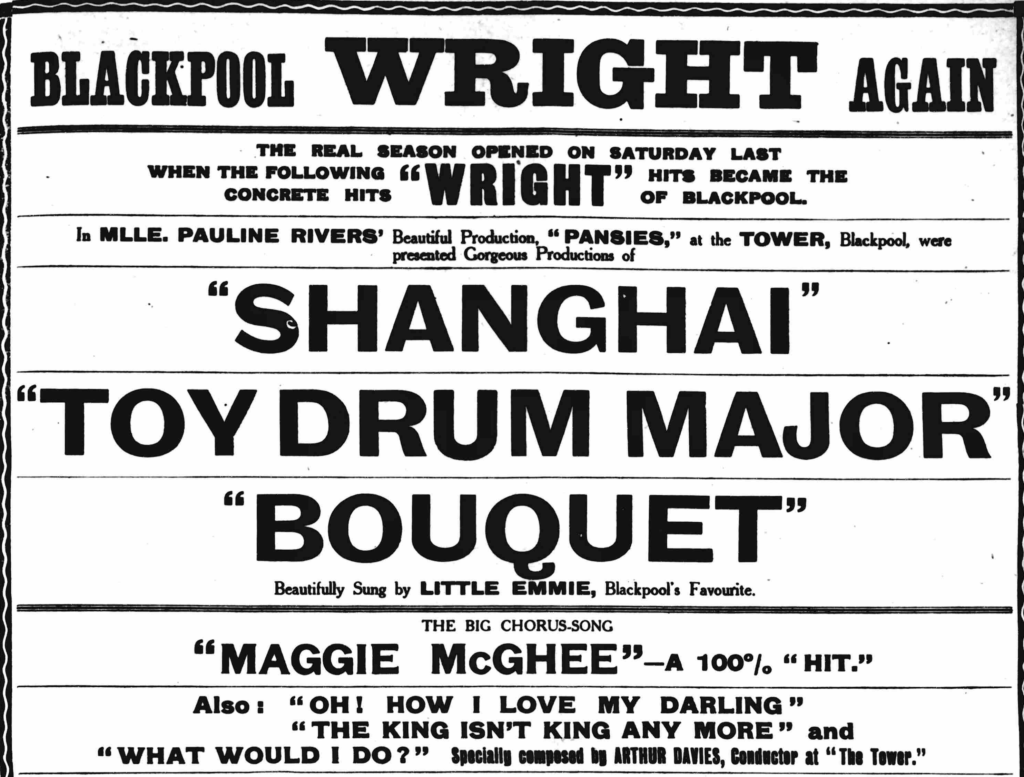
And Feldmanism also gets its publicity to promote its songs in the Stage of July 2nd
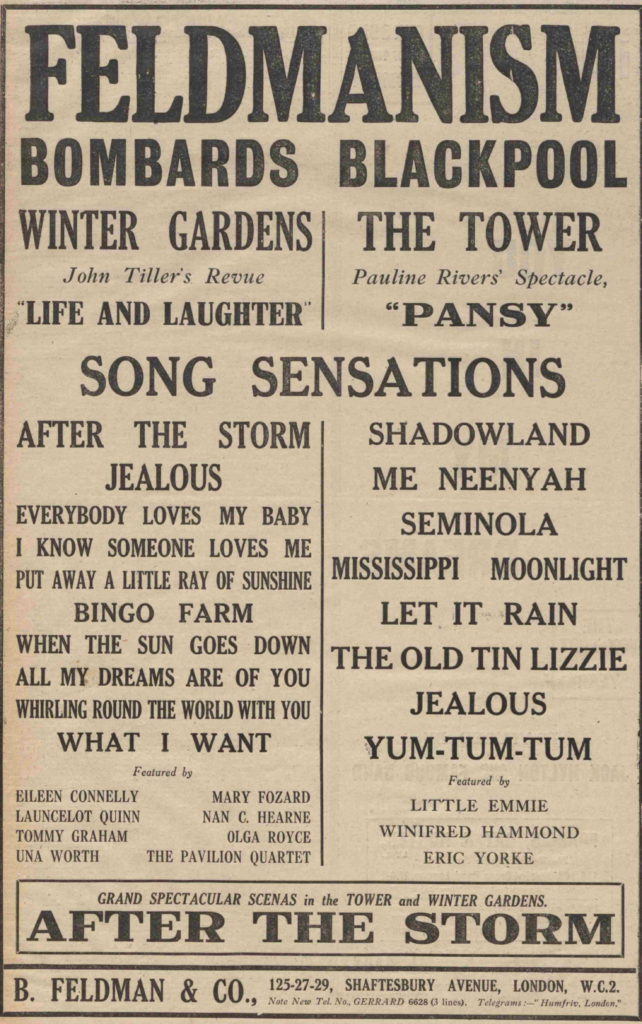
The Era presents a description of the ballet in the full page spread of the revue, ‘After the Storm’, a song which had got all of Blackpool singing, featuring Florrie Forde, the ‘world’s greatest chorus singer’ which features on Blackpool’s Central Pier. The ‘Storm’ as a scena also has a place in the Tower ballroom and the Era of 25th July reports, ‘Pansies at the Tower, Blackpool is a show which every visitor to the famous holiday resort wisely makes a point of seeing. This beautiful Pauline Rivers’ spectacle has aroused the imagination of everyone – and no wonder with such an array of first class musical talent.’
Little Emmie – Blackpool’s favourite, is scoring an enormous hit with four leading Feldman winners in ‘Jealous’, ‘Shadowland’, ‘Me Neenyah’, and ‘The Old Tin Lizzie’, while charming Hilda Kelly is loudly applauded for her rendering of ‘Seminola’.
A special quartette of charming girls feature ‘Yum-Tum-Tum’ and the troupe combine in those ear-haunting favourites, ‘Let It Rain’ and ‘Mississippi Moonlight.’ Mdme Pauline Rivers’ Ballet is quite a separate and distinct feature form the ‘Storm’ scena which also takes place in the Tower ballroom.’
And there is always time for extra-curricular activities, and this year it includes the unusual story of a hospital dog called Bonzo. It seems that a dog with a bad leg had somehow entered the hospital at Blackpool at an earlier date and a compassionate nurse had looked after it. From then it had made its home in the boiler house and scavenged for its own meals if not provided by sympathetic locals. One day however it allegedly took a fancy to the half a chicken that was the house surgeons’ dinner. It was a matter of coincidence, or not, that a policeman arrived at the hospital at that precise time and found that the dog had no licence and the secretary for the hospital, Mr Cunliffe was held responsible for the offence and appeared in court accordingly. As a technical offence the court had to deal with it, though because the dog had been allowed into the hospital, it was suggested that it was the matron’s responsibility. The court perhaps wisely suspended the case and gave Mr Cunliffe seven days to acquire a licence. And so the race was on to get a licence for Bonzo and his plight touched the sentiment of many. A letter from Little Mary at the hospital wrote ‘Dear Chief Constable – please don’t send Bonzo away, because if you do we won’t see him run after his tail again, and we like to see him run after his chuck and jump on our bed in the morning.’ Perhaps the curative properties of animals versus the need for hospital hygiene in conflict in this instance. However the annual garden party at the hospital to provide funds for the pre-NHS Victoria hospital situated on Whitegate Lane, the same main thoroughfare on which Little Emmie’s putative grandparents had lived, was attended by enough people for Madame Pauline Rivers and Mr S Davis of the Blackpool Tower assisted by the 40 Tower Ballet girls including Little Emmie to sell enough flowers to ‘make Bonzo’s ‘life in the future a dream of delight.’
After the summer season at Blackpool the pantomime and the long distance travel resumes and the troupe is in Aladdin at the Grand Theatre in Swansea and the County Theatre in Reading over the Christmas period and into the new year, in Mother Goose.
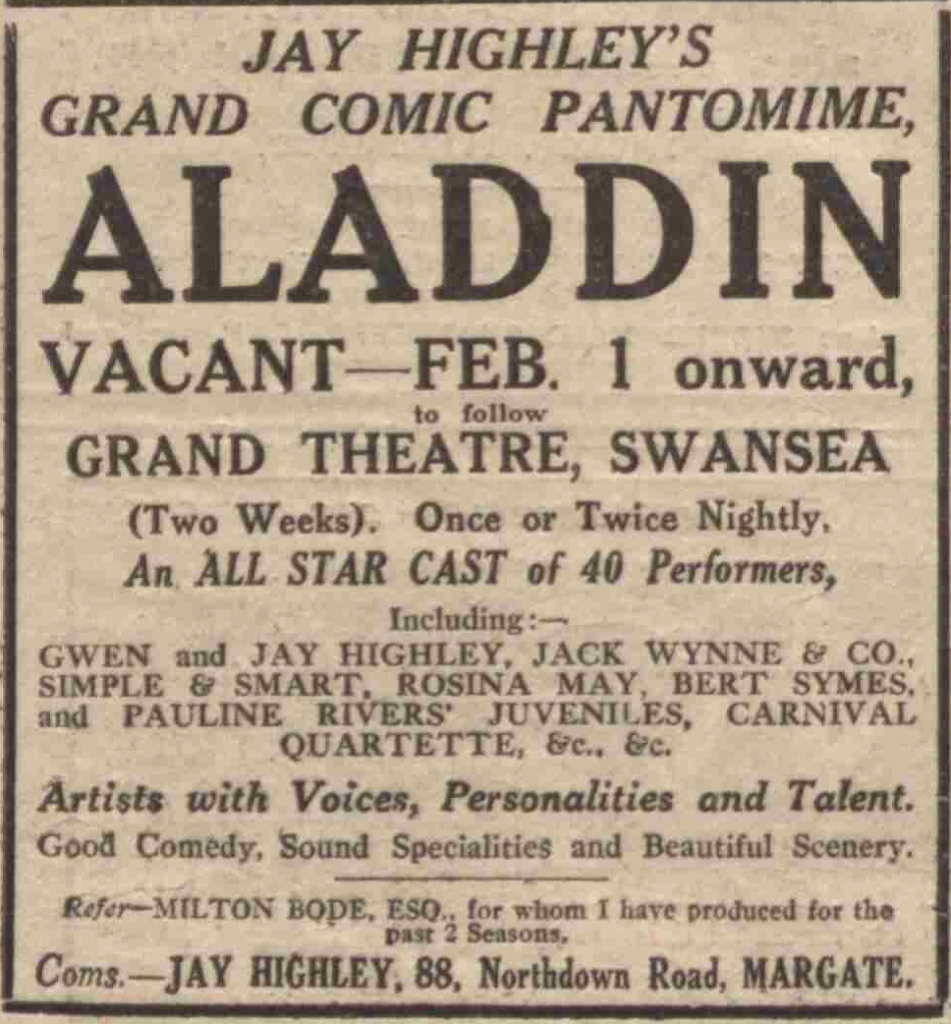
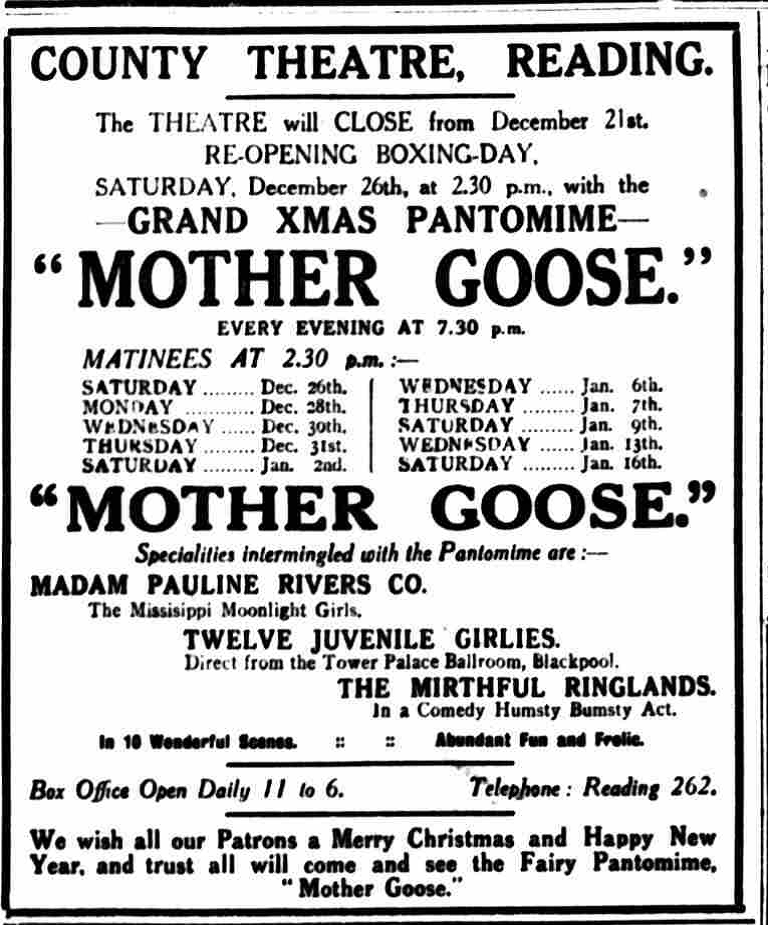
T
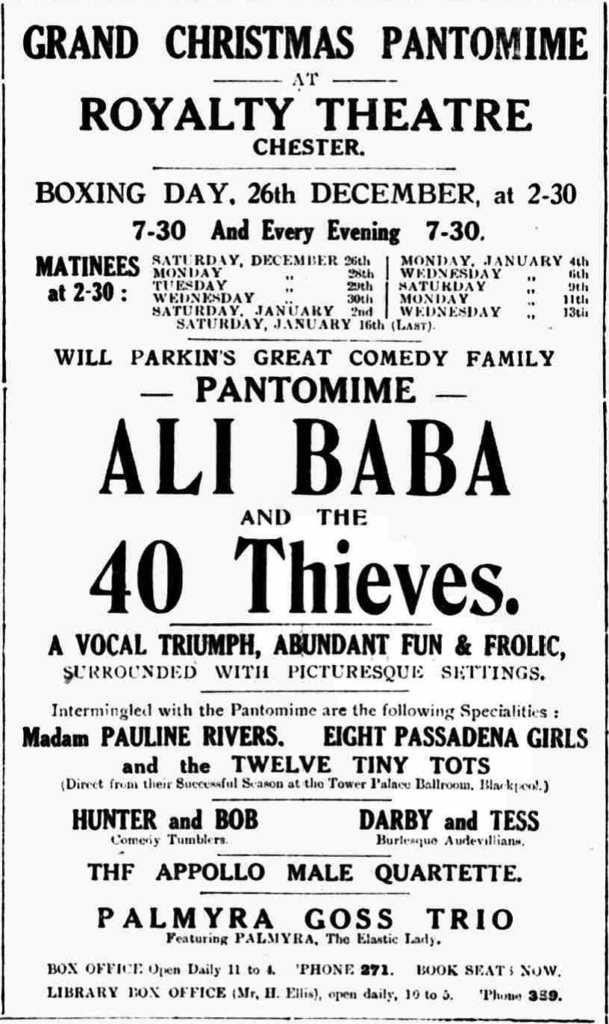
There is conflict in the dates given in the two posters as the troupes couldn’t be in two places at once, and no direct reports of the pantomime yet viewed to determine which of the pantomimes the troupe performed within, but perhaps they weren’t at the venues for the complete range of the dates stated in the advert. There is a report on the songs sung by Little Emmie, in Mother Goose at Reading, which include, ‘Sally’s Come Back’, ‘Bouquet’ and ‘Sunny Havana’, among those as represented as the most popular. Ali Baba is performed in Derby at the Grand Theatre at the end of January as the Pasadena Girls and the Twelve Tiny Tots, ‘contribute a pleasing display of toe and acrobatic dancing’ after the dates of both Chester and Reading had concluded. At the end of January, the troupe as the Twelve Amethysts are at the Hippodrome, Nuneaton where Marie Sinfield is included in the cast of the Twelve Amethysts in Aladdin which continues to the Grand Theatre, Swansea.
The summer season ballet, ‘a spectacle of brilliant colour is entitled, ‘Memories Past and Present’ and proves as popular as ever and includes Little Emmie once more as the premiere danseuse. The five Feldman songs sung by Emmie during the course of the ballet are ‘Have You Forgotten Yvonne?’, ‘Dinah’, ‘Brown Eyes’, ‘In the Gloaming of Wyoming’, and ‘Valentine’ with others, which include ‘Memories Past and Present.’ Those Feldman songs featured by an unidentified ‘Annie’ and the Tiny Tots are, ‘Meet Me at Twilight’, ‘Rose of St Mary’s’ and ‘Hello, Summer’, ‘Smile a Little Bit’, ‘Behind the Clouds’ and ‘Let Me Call You Sweetheart’ so there was always plenty of song to go with the dancing, the musical director at this time being Arthur Davies.
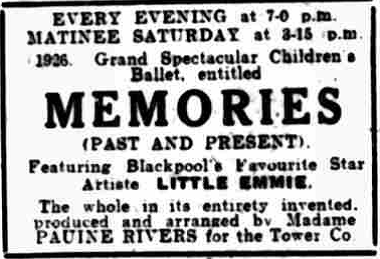
The finale of the ballet is on Saturday 29th October. It would seem that in the last week of the show there was a raffle on behalf of Denville Hall, an actors’ remedial establishment, still in existence today (2023) at Northwood in Middlesex which realised £6 4s (approx. £314.00; 2023) with the prize of a doll.
When the panto season is underway towards the end of the year, the troupe is in Chester once more in Mother Goose where the star of the show is Little Emmie (‘Emmy’) along with Pauline Rivers’ entire children’s ballet in a contract which ran ‘into four figures’ for the tour production. They make their way down once again to Reading in Cinderella where they are billed as, ‘Pauline Rivers’ Girlies from the Tower, Blackpool’ a somewhat patronising, and even insulting, title which would not be acceptable to today’s sentiment in vocabulary. In the brief review, while the Twelve Girlies are still mentioned, a more acceptable title is given to, ‘Pauline Rivers’ Eight Palace Girls’ in the same production. Another review for Chester mentions the Mississippi Moonlight Girls along with the Girlies. Little Emmie is featured in singing the ‘Doll Dance’ from the Keith Prowse stable while that other song of that stable ‘Charmaine’ the song with a ‘billion friends’ was the hit of the season having been sung by Gracie Fields to great effect at the Palace, Blackpool.
Into 1927 and the troupe are at first advertised as being at Chester at the Royalty Theatre in Mother Goose and then in Reading at the County Theatre in Dick Whittington and then, as the Eight Palace Girls and the Twelve Rivers’ Girlies, are at the Scala at Long Eaton in the same pantomime, and after the panto season they continue into the summer season in Blackpool.
The ballet for this year is called, ‘Treasures and Pleasures of 1927’ and of the many songs featured, some of the big budget songs of Bert Feldman who is proud to have them in the Blackpool show are ‘featured prominently by Pauline Rivers’. The songs included are, ‘Under the Clover Moon’ and ‘Since I found You’, sung by Little Emmie. Variously sung by the regular girls, the Goodnight Girls, the Dutch Girls, Doris, Marie, Ruby, Edna and the Tower Pauline Rivers Girls, the Tower Revellers, and the Bluebird Girls are ‘Hello, Swanee, Hello!’, ‘Ting-a-Ling’, ‘Nesting Time’, ‘Singing in the Rain’ and the ‘Blue Danube’. Two of the hits of this year sung by the troupe are singled out as ‘Reaching for the Moon’ and ‘Cheer Up – Keep Smiling’.
The revue begins on the Saturday of the last day of June. The opening reference is shamelessly a ‘villainous Turk’ and Little Emmie in this character wears a ‘ferocious’ moustache. A harem is featured and the girls wear red and green silk satins. While the dance and song is all about the innocence and the assumed and interpreted beauty of the female it is also about its dominance by the male, all relevant, if increasingly unacceptable, to the time period especially for those more prominent actresses who could earn as much and more than the Prime Minister. The only boy in the company demonstrates a clog dance and there is a version of, ‘Ilkley Moor bar t’at’. The spectacle of the finale consisted of a rising moon and, when it had reached a height, the face of the man in the moon disappears and Little Emmie pops out of it.
In December in the panto season the troupe are at the Hulme Hippodrome in the ‘Forty Thieves’ and down at Reading in Cinderella. Here the troupe is advertised as ‘Pauline Rivers’ Cinderella Girls and Juveniles’. Regarding the songs within the ballets and pantomimes, the Era of December 21st reports, ‘Mdlle Pauline Rivers, the ballet directress, is a keen “Wright” supporter and most of the numbers for “Little Emmie” and her troupes are from the “Wright” catalogue. These include, “The Little White House (In Honeymoon Lane)”, “I Can’t Believe That You’re In Love With Me”, “Nevada” and it includes an etc so these must have been the most notable of the day.
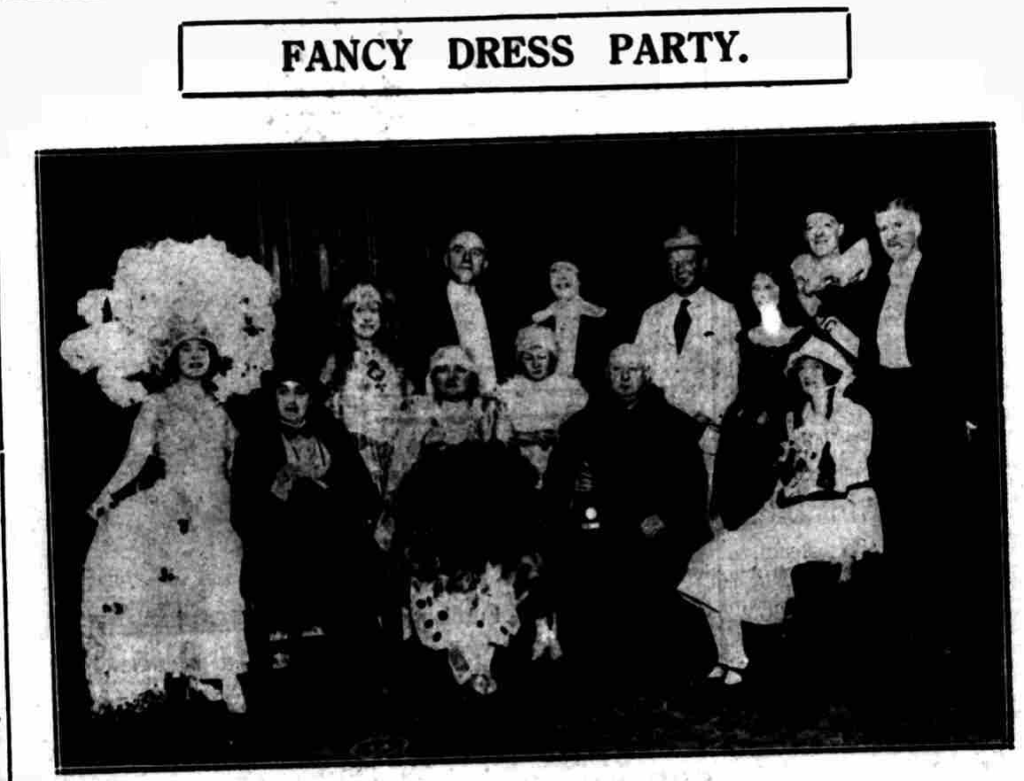
The pantomimes continue into the next year with the troupe in Mother Goose at Margate as the Mississippi Moonlight Girls and, ‘a dozen juveniles known as the Twelve Girlies’. These are dancers who ‘perform their numbers in excellent style.’ Starting on Boxing Day it finished its two week run in early January. There is also a report of the troupe being in Reading at the same time so once again where, ‘Madame Pauline Rivers is responsible for the terpsichorean features, her troupe of Cinderella Girls and Juveniles being exceedingly well trained,’ at Reading, the dates are a little confusing. At Todmorden in February for six nights form the 13th and a Saturday matinee the troupe is now in Mother Goose and Little Emmie is billed here as playing Jill, the daughter of Mother Goose and the cast in the specialities are the ‘Madame Pauline Rivers Company, The Mississippi Moonlight Girls and the Twelve Girlies (Juveniles) direct from the Tower Ballroom, Blackpool. ’Little Emmie is praised for her role in this performance as that, ‘popular Lancashire favourite’ contrives to add an inspiring and beautiful effect in a lighter and happier vein.’ And for the Twelve Girlies and the Mississippi Girls, ‘the popularity of this smart and dainty combination, together with Little Emmie are too well known to need further comment.’ (District News 17/2/1928).
In March they move into revue and the short distance to the Manchester Metropole, the King’s Palace in Preston and the Morecambe Winter Gardens, and in March the touring continues to Liverpool at the Pavilion where there are here 16 Allied Revue Girls as well as Little Emmie. April sees the troupe at the Manchester Kings and Manchester Junction.
Then the ballet season gets under way, no doubt after necessary rehearsals throughout May, and this year, ‘Madame Pauline Rivers’ annual ballet, “Tower Typical Tokens” delights both young and old. The setting is brilliant and the 100 members of the ballet are charmingly dressed. As in previous years, Little Emmie heads the bill.’ (The Era July 25th 1928).
The Lawrence Wright songs included in the ballet are reported as, ‘Can’t You Hear Me Say I Love You’, ‘Just Like Darby and Joan, ‘Ice Cream’, as well as three production numbers, ‘Pansies’, ‘Toy Town’, ‘Artillery’ and ‘Firefly’. ‘The production numbers in particular, staged with beautiful scenic and lighting effects are received with rapturous applause.’ (The Stage June 28 1928).
In the Fleetwood Chronicle of 29th June we have this report, ‘Twenty Five scenes of blazing colours all rioting together in harmony, sweet singing of haunting melodies by captivating child artists, sensuous music from a hidden orchestra, and the magic of 150 pairs of twinkling feet dancing with charming grace, are some of the features of Madame Pauline Rivers’ 26th children’s ballet, “Tower Typical Tokens” which had an auspicious opening at the Tower on Saturday.’ There is a large cat in the ballet ‘cleverly performed’ by Winnie Godwin, and a waitress scene along with the song, ‘Back to Old Nebraska’ and a military scena with the cavalry of Hussars. Modernism is represented by the ‘Charlestoning’ to the tune of ‘When the Swallows Fly Home’ and Little Emmie as a firefly with her graceful toe dancing.’ It was certainly a wonderful performance. The costumes and millinery are exquisite creations of the dressmakers and milliners’ art, the scenic properties and electrical effects provide dazzling touches and the music by Bertini and his invisible band materially contributes to the excellence of the ballet.’ So there was praise all round to all those who had a part in the production and the performance.
For the pantomime season this year the troupe are at the Nottingham Palace Theatre in Dick Whittington before Christmas where they are the Eight Palace Girls. They are then at the Pavilion, Rhyl where Little Emmie is once more the principal girl, the ‘Lancashire star from the Tower Ballroom Blackpool’, as Jill and in which Pauline Rivers’ troupes ‘grace the stage.’
1928 was the year that the somewhat unique Actors’ Chapel at St Stephens on the Cliffs was consecrated, and both Pauline Rivers and Little Emmie were two of the original subscribers to the fund for its construction. Being dedicated entirely to the acting profession and still in existence today (2023) at the church it was the only chapel of its kind in the world. The full story is contained in the link at the end of this account.
Into 1929, the troupe can be seen at the palace in the Burnley district in Dick Whittington and the tour takes in the Pavilion at Rhyl where they are described as the Mississippi Moonlight Girls. At Nottingham at the end of the month at the Palace Theatre, Trent Bridge, the Era of January 2nd describes, ‘The final ingredient in this excellent entertainment is provided by Madame Pauline Rivers’ Eight Palace Girls in collaboration with twelve “Girlies” (or Twelve River Girlies as described elsewhere). There is a youthful vivacity and charm about this chorus that one so often misses in the more elaborate “West End” productions.’ A compliment indeed you would think from the industry publication. At the end of January the troupe is at the Scala in Long Eaton, so not so far to travel to the next venue and here Little Emmie reprises her role as Jill in Mother Goose while the troupe provide the chorus. Here, ‘Little Emmie, the well–known Lancashire star from the Palace Tower Ballroom, Blackpool, upholds her reputation as ‘Jill’ and she gives a vivacious performance. She scored successes with her vocal number ‘Romano’ and her burlesque with Tom Grah.’ And ‘Madame Pauline River’s company of Mississippi Moonlight Girls and the Twelve Girlies are responsible for charming dances and ensembles.’ (The Stapleford News Feb 2nd.)
Into February and the show, complimented for its ‘most gorgeous costumes and staging’ (a Will Parkin production) is at the Hippodrome as advertised in the Todmorden Advertiser.
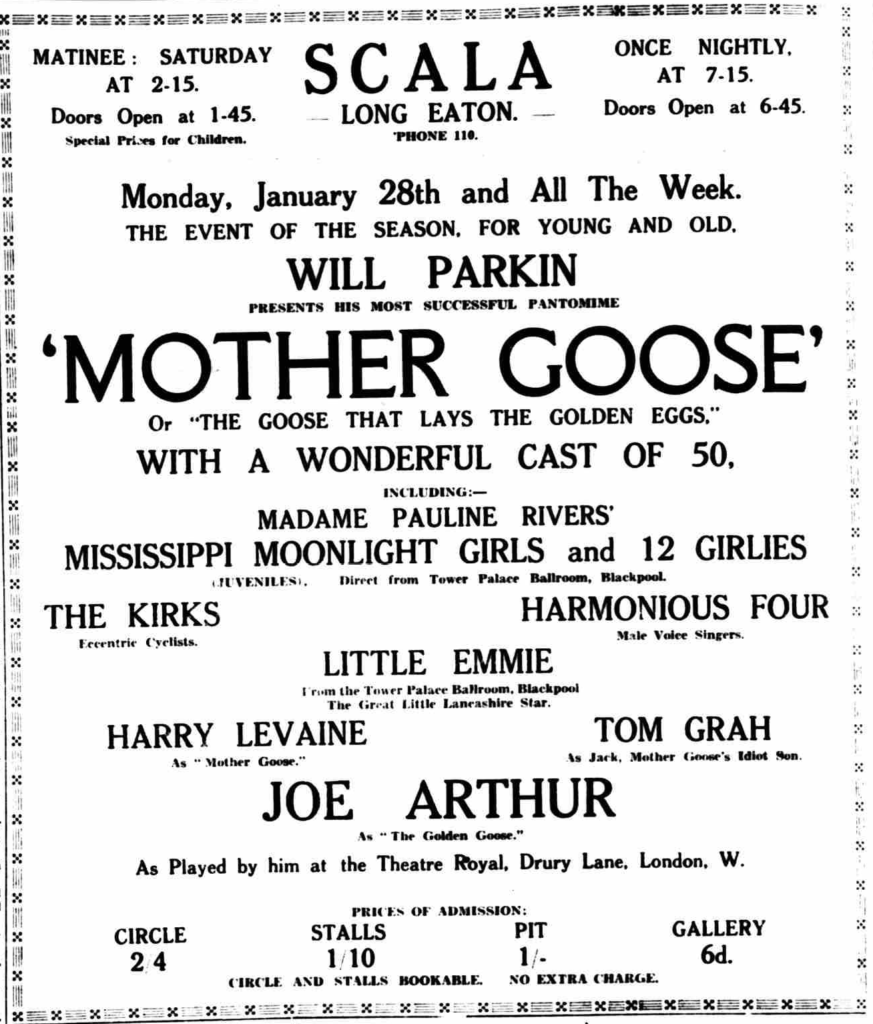
The ballet at the Tower doesn’t receive the same amount of publicity as previous years even though it has been an established event for well over twenty years. A single report viewed in the Fleetwood Chronicle, and subsequent adverts for the Tower in the same paper don’t give it a name, but it appears to be a repeat performance of the 1927 show. Even so, ‘The irresistible charm of child dancers wearing colourful frocks to enhance their pretty faces and graceful limbs, has never been so pronounced as this year.’ A large audience gave the children a rousing send off on Saturday 29th June and this ballet had an eastern theme with Little Emmie as a ‘villainous Turk’ surrounded by harem girls in ‘green and silk satin’. A more demure scene in Lilac Time is the Dance of the Paper Dolls. There are plenty of songs and the finale recreates the Man in the Moon which rises high and then his face disappears as Little Emmie emerges. There is a single boy dancer in the group this year named only as Reg and gives a fine performance of clog dancing. so much of the repeat performance it wold seem. There is a reference in the Nottingham Journal of September 9th which exultates pleasures of Blackpool for the Nottingham Liberals ‘Wonderful Day Out, of the children’s ballet which it entitles, perhaps erroneously, as ‘Happyland’. Whether this is the name of the ballet or just a reference s not known at this moment.
The pantomime season for the year’s end includes Ali Baba and his Forty Thieves at the Pavilion in Liverpool where, ‘Pauline Rivers’ Tower Girls will carry out the bulk of the chorus work,’ over the Christmas period (excluding Christmas Day) and then to the Hippodrome at Preston in Mother Goose, as ‘Madame Rivers’ Moonlight Girls’, where Little Emmie is once more in the principal part.
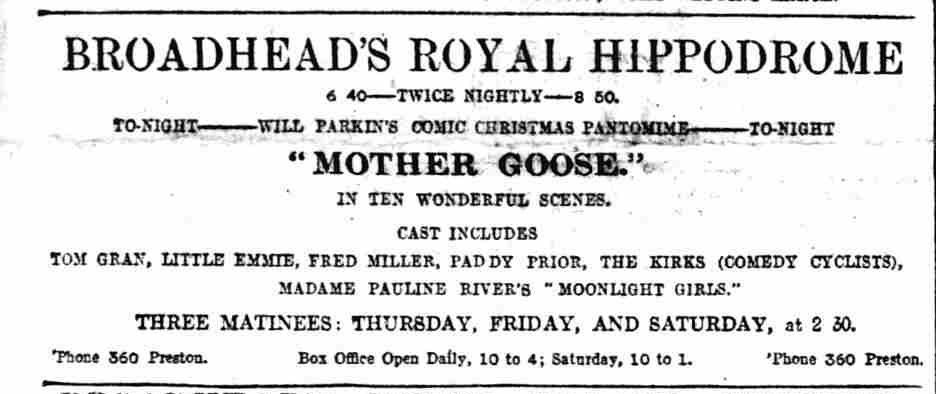

The ballet for the summer season is not mentioned by name again but was nevertheless given a rousing send off on Saturday the 28th June. Only by the poster advertising the Lawrence Wright music and song contributions is it named as, ‘Happy Days Are Here Again.’ Led by Little Emmie along with the Mississippi Girls, the ballet had an international flavour, displaying the national dress of many nations and the younger children are described as ‘clever tumblers and contortionists’. The feature of the ballet appears to be Madame Rivers’ Eight Cuban Maids in the Cuban Love Song scena within the international flavour of the performance. As usual the season’s favourite songs are sung and Little Emmie is Amy Johnson after the aviatrice’s recent triumph and of course known for her Blackpool connections, and an aeroplane ‘gives the picture a realistic touch’ and at the time when the Lawrence Wright Song ‘Amy’ was all the rage. All in all, ‘Madame Rivers has never given a finer ballet’ and as usual, Little Emmie ‘was overwhelmed with bouquets and baskets of flowers and fruit.’ (Fleetwood Chronicle 4th July 1930).
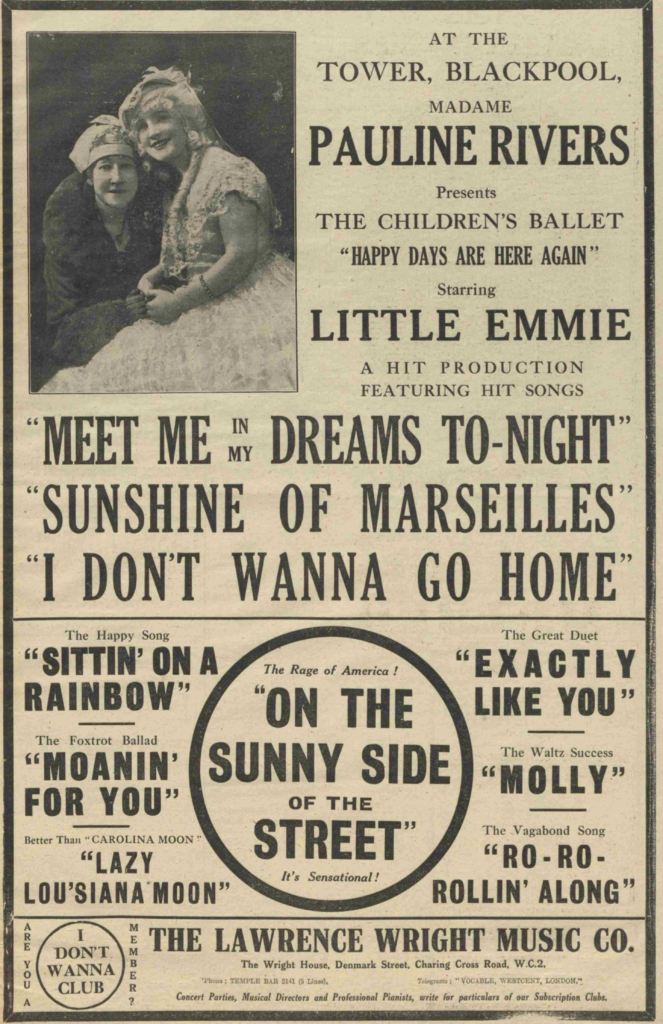
I couldn’t locate the pantomimes for the beginning of the 1930 season but in January of the following year of 1931 the troupe is in Mother Goose as, ‘Madame Pauline Rivers’ Twelve Girlies And the Mississippi Moonlight Girls, direct from the Tower Palace Ballroom Blackpool’ and on familiar ground at the Pavilion Theatre Rhyl. And in Devon at the Pavilion Torquay in the same pantomime, Little Emmie once more plays the part of Jill, the daughter of Mother Goose and Nelllie Sinfield (who gives a performance ‘worthy of the applause of the audience’) has a role as the Spirit of Wisdom. ‘The part of Jill, her daughter, is enacted by Little Emmie, a winsome little lady with an attractive soprano voice. She sings several songs throughout the performance, and never fails to draw the plaudits of the audience for her delightful simplicity.’ (Torquay Times January 9th 1931.)
The songs of Lawrence Wright (now as Horatio Nicholls ) that are featured and reported as popular in the performances are, ‘Gipsy Melody’, ‘Meet Me In My Dreams Tonight’, sung by Little Emmie and the ‘King’s Horses’ as performed by the twelve children in their role as the ever popular military drummers.
1931 was the year of the death of Alderman Broadhead, twice mayor of Blackpool and founder of he Broadhead circuit of theatres in which Pauline and her troupe of revue and pantomime girls and some boys had performed. Pauline and Little Emmie represented the children’s ballet among the many theatrical and civic mourners at a funeral he wanted to be as quiet and unassuming as possible.
Advertised in a full page spread in the The Stage of September 3rd featuring the song of Keith Prowse and captioned ‘Blackpool’s stupendous success, a rage in one week,’ is the song entitled, ‘When the Moon Comes Over the Mountains’ and the advert below for the ballet:-
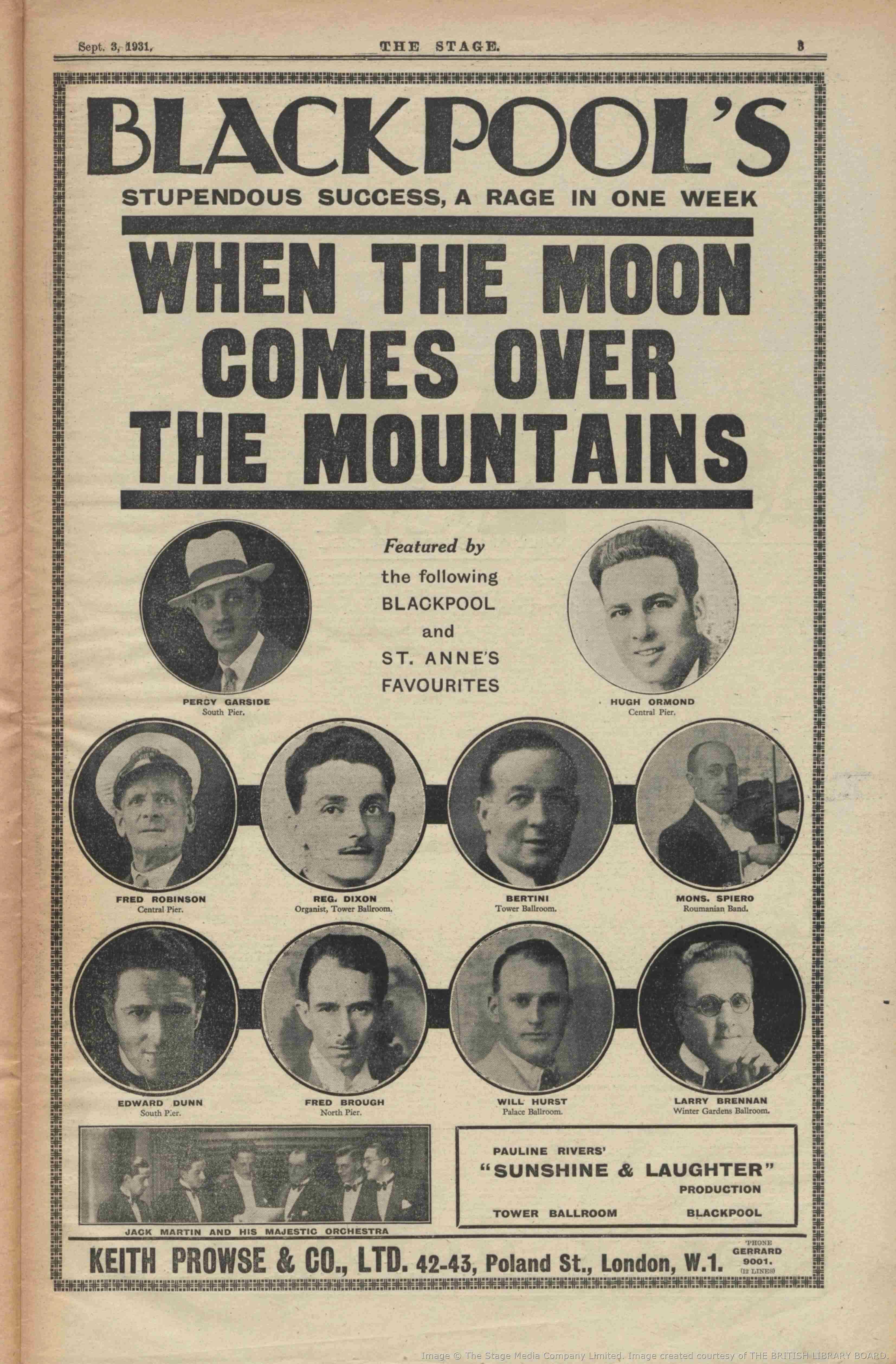
At the beginning of June, Pauline’s Eight Eastern Belles are at the Empress Ballroom in the Winter Gardens in a ‘romantic song’ scena. Here there is the Nile Quartet which appears to be formed from the Pauline Rivers contingent. It seems that this runs concurrently with the ballet during the season. On 27th June they are round the corner at the Tower Ballroom to perform the annual ballet which this year is entitled, ‘Sunshine and Laughter.’ Of the 150 children represented, Little Emmie features, supported by other named children dressed in ‘artistic beach suits’ and named as Ivy, Nellie, Ruby, Adele and ‘tiny mite Mary’ and others, each who feature their own song along with ‘Lancashire’s smallest clog dancer’, Richard. The introductory song by the whole company of young people is ‘Bathing in the Sunshine’ and the grand finale in a rousing military scene, ‘The Guards Are On Parade’ and Horatio Nicholls (Lawrence Wright) was there to see his songs sung and performed. Included in the scene is represented the concept of race as perceived at the time, in a plantation song, ‘River Stay Away From My Door (which, in its title, perhaps didn’t refer to the ballet maitresse herself, you would imagine.)
The pantomime season then continues and its back to Mother Goose which, by January is at the Pavilion in Liverpool. Little Emmie, now billed as the ‘Lancashire comedienne’ is Jill once more. Jack Brennan and Tom Grah reprise their roles as the Mother Goose and Jack respectively and the Mississippi Girls and ‘Topsy Turvy Children’ from the Tower, Blackpool will give their specialties.’ Not just dancing but also a little bit of acrobatics, too. The pantomime takes in also Manchester’s Hulme Hippodrome.
Once more to run concurrently at both the Winter Gardens and the Tower Ballroom on the Bert Feldman circuit it would seem as there is less information given in this year, and the cinemas were diverting audiences from the live stage by now, the ballet, for this year, the thirtieth revue, is entitled ‘Summertime’. This has a German theme in which Pauline Rivers’ ‘Eight Frauleins’ take part. The Lawrence Wright songs, as printed, included in the ballet are, ‘Auf ‘‘Wiedersehen, My Dear’, ‘Day by Day,’ ‘Land of Love and Laughter’, ‘Tom Thumb’s Drum’, ‘My Bluebird’s Back Again’, and ‘Tell Me With a Love Song’.
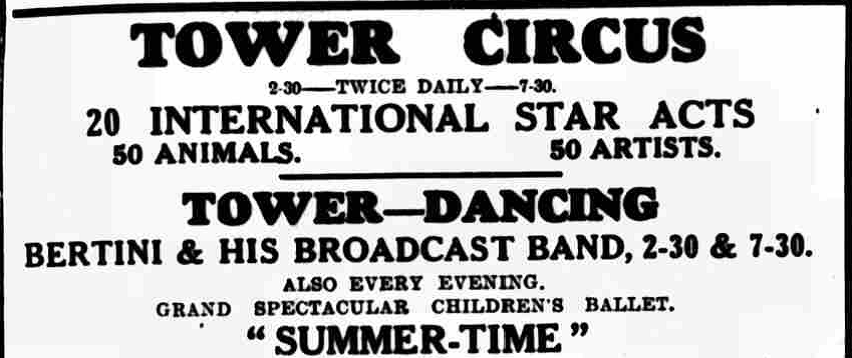
And so for a briefly reviewed 1932, the year moves in pantomime to 1933 and Mother Goose with Little Emmie at the Hippodrome in Leeds in January.
It seems that Pauline had been ill around this time, though for how long isn’t known, or how much it affected her activities, but at the fashion show held in February at the Blind Home on Hornby Road, the correspondent was glad to see her back after her illness. The show in aid of funding for the home, was entitled a ‘Spring Mannequin Parade’ and was presented by Miss Readitt of Church Street and there were 80 models to show off many a latest fashion or design. Pauline had presented a large box of chocolates which was raffled by Little Emmie and which achieved £2 8s.(approx £138.00; 2023). There was a recital and song and the music was provided by Mrs Woof Gaggs’ orchestra. Her husband, former Tower orchestra leader, Joseph Woof Gaggs had died in 1929. His name is perhaps a memorable name, but consisted of the natural patronymic of Gaggs and the traditional inclusion of the matronymic of Woof within the name. Bertram Gutsel, whose name was changed to Bertini because it sounded more classical, and less German in the lasting scepticism between the nations at the time, had been offered the band leadership in 1927 as he was conducting in Blackpool at the time.
The matron of the home, Mrs Fowler for this Sunbeam Home for the blind, enjoyed having her favourite verses, created in poker work adorning the walls of the home and one of them, which the correspondent of the ladies column in the Blackpool Times of this year, was keen to point out, reads;
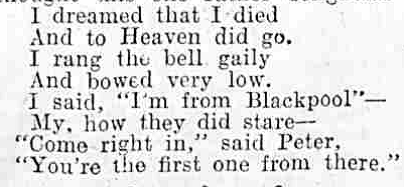
Another funding session for the blind home was carried out in May at Arnciffe on Sixth Avenue South Shore run by two bachelors and for which the female correspondent reflecting the status of the women of the day would be jealous of the fact that two bachelors, Mr Anderson and Mr Kirk could keep their home as tidy as any woman could do.
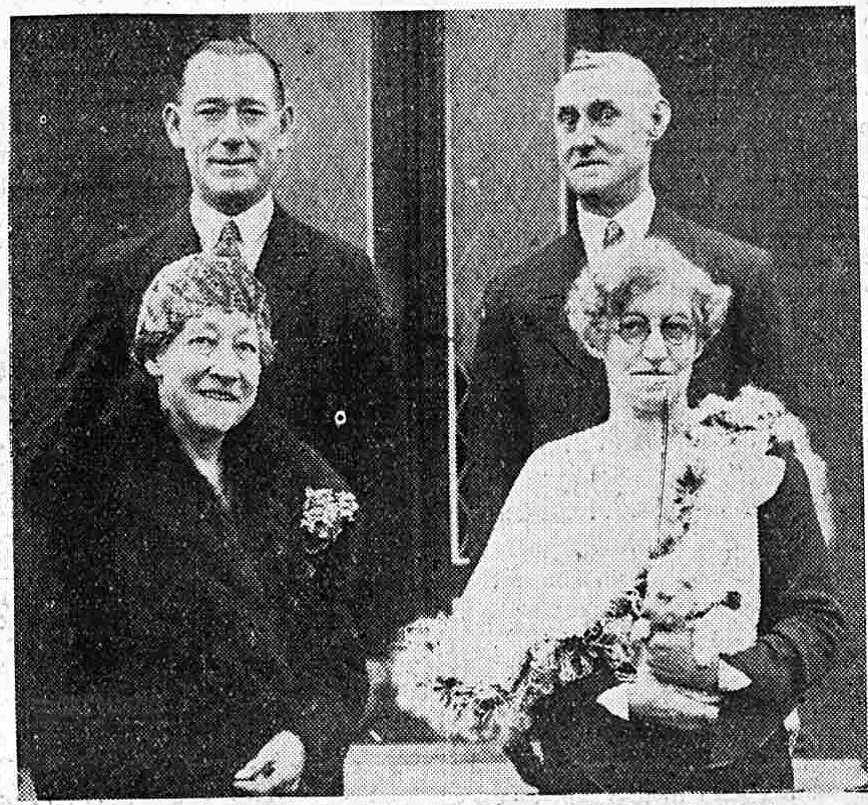
And then in September she was at Poulton at ‘Norwood’ the home of Mr and Mrs Henthorne at another charity, garden party event for the Poulton and District Nursing Association and the Blackpool and Fylde Society for the Blind. Here she had been persuaded to act as fortune teller which may or may not have been her forte but she was brave enough to try and respected enough to be accepted.
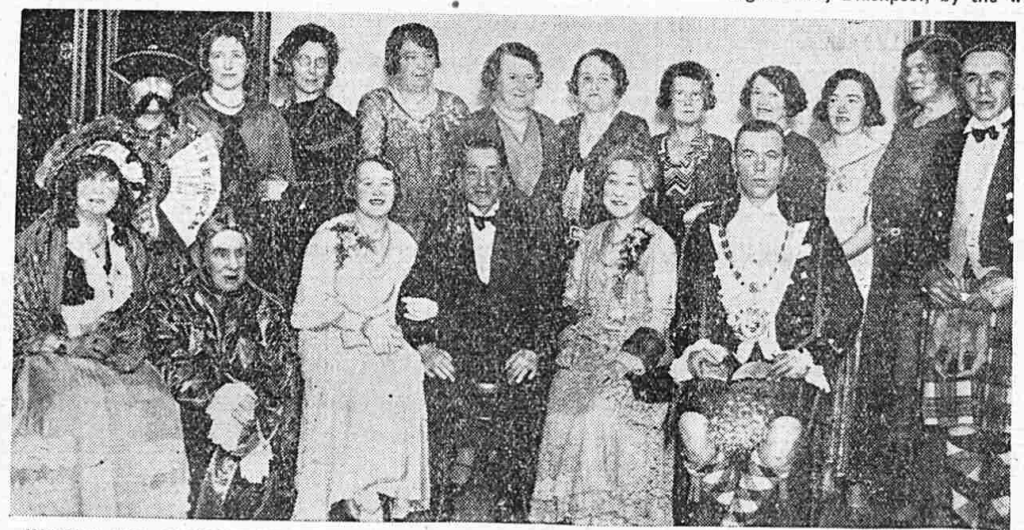
This event was the Caledonian Association fancy dress ball which took place at the Queens Hydro Hotel on the 3rd of March. Pauline here is described as being dressed in ‘beige lace’.
The year of 1933 witnessed the 13th annual dance festival in the town and the names of John Tiller, Pauline Rivers, dance instructress Ethel Halliwell and an endorsement of the Blackpool fresh air by celebrated ballet dancer Madame Tamara Karsavina were brought to bring notice to the town.
There is also a children’s pantomime at the Empire Ballroom as the two venues of the Winter Gardens and the the Tower are no longer separate companies and have amalgamated, a union made easier as the shareholders of the Tower had already owned a considerable majority of the shares. The event also took place at the Tower where in March, it realised £480.00 (£27,709.64; 2023) to be distributed to various charities including the town’s Victoria hospital among several children’s charities including the NSPCC.
At the end of June the ballet opens for the 1933 summer season and is entitled the ‘Sunshine Ballet’. It is emphasised that the all the costumes, 700 in all, are made on the premises. As Pauline’s sister is occasionally with her and the fact that she was a sewing machinist while in London carrying on her father’s occupation, she is occasionally credited with the construction of the costumes. For the first time the name of Annette Schultz is mentioned. Annette was a dance instructress who would eventually take over the ballet on Pauline’s death in a few years hence. A scena in the Empress Ballroom features Pauline Rivers’ Eight Mountain Girls and the Feldman song, ‘I Like Mountain Music’ which continues throughout the season. A sneak peek behind the scenes was provided by the female correspondent in the ladies’ columns of the Blackpool Times when she was walking down Park Road one day in June and coming across the Parochial Hall and looking in found eighty of the ballet children singing along with Pauline, practising as the picture below might reveal.
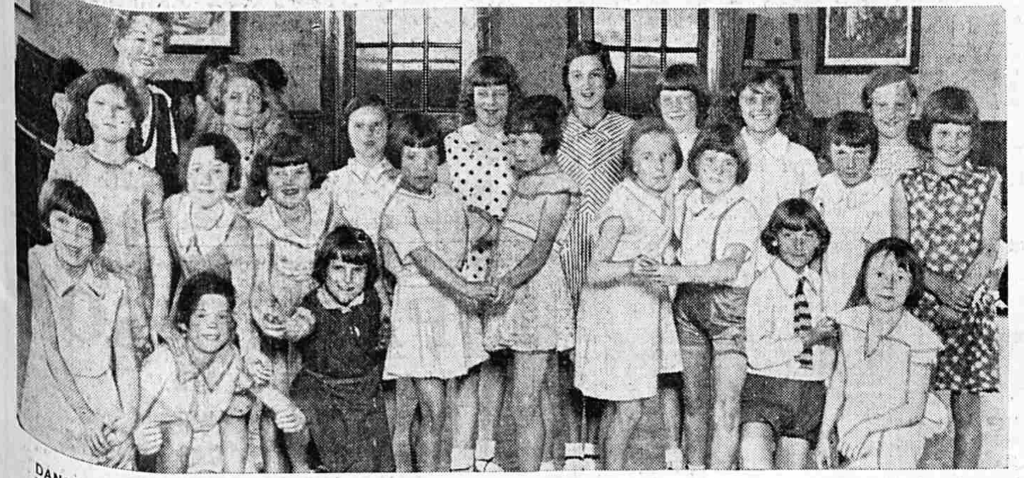
Captioned; ‘Dancing’s Fun! Say these Blackpool girls who are rehearsing in readiness for the production on 24th June of the Tower Ballroom Annual Children’s ballet’. At the back is Madame Pauline Rivers, who has trained the children for 30 years.
In the scena at the end of the ballet Madame Pauline is seen as, ‘the genius’ for ‘not only inventing the dances, but for inventing effects and designing costumes. More than that … ‘she can make anything with her clever fingers guided by her quick brain.’ A compliment that would ring true perhaps in her character but she was of course assisted by others which included her sister, as well as Little Emmie, and then the various specialist skills of the Tower staff. In this scena entitled, ‘When the Wild Roses Bloom’ the ‘dainty little girls, whose toe dancing and “wild rose” costumes are so much admired, wear frocks of pink and green, and wild rose head dresses designed and made by Madame Rivers and Emmie.’
The same correspondent writing in August reflects on Pauline’s need to go before the magistrates for every child for which she needed a licence to comply with the employment of children. At first, Pauline was very nervous but, as time went on, the magistrates got to know her as her reputation preceded her, and her application for any child was granted without question.
In September, Madam Pauline and Emmie, the inseparable pair, were guests at Tommie’s entertainments on the beach at Cleveley’s. Tommie, as Tom Grah was well known to them both as the comedic actor in the pantomimes in which Emmie featured. The occasion was a benefit for actress Gladys Grah, the wife, as it would seem, of Tom. Pauline’s contribution was a basket of fruit and Emmie’s was a special turn.
From now on the ballet’s don’t get the publicity that they had in the past and as the year turns into 1934, it is Annette Schultz who is mentioned more often as the ballet maitresse and is co-producer along with Pauline. This year it is the ‘Sunshine Ballet’ and Feldman songs included at the Winter gardens in a gypsy themed scena include, ‘Beside My Caravan’, ‘Build A Little Home and, ‘The Sweetheart Song’ accompanied by Madame Pauline River’s ‘Eighty Gypsy Maids’.
For the pantomime season that followed it seems like that, as promoter from his Cleveleys base, , which had suffered serious damage from a recent summer storm, Tom Grah is seeking venues for the pantomime Red Riding Hood with Little Emmie, himself as Jack and the cast of the Tower ballet.
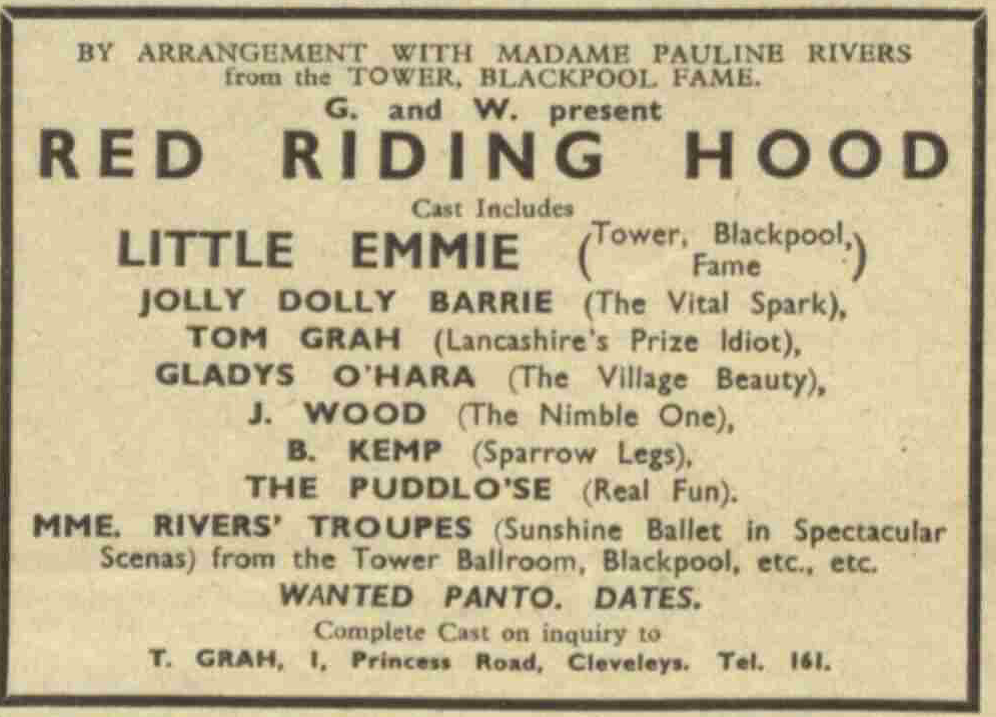
The Tower Ballet, that ‘spectacular revue’ for the following year of 1935 was entitled ‘Silver Bells’. Though there is no review seen for the performance, Pauline had chosen the songs ‘Pop Goes Your Heart’ and ‘Congratulate Me’ to feature. Extra curricular activities include being a judge in a Miss Fleetwood competition on the pier in the town. Here she witnessed the dancing of Ivy Chisholm and Bobbie Graham which impressed her. The Miss Fleetwood chosen was 17 year old Margaret Cutforth. The only reference to a pantomime this year is Goldilocks and the Three Bears at the Halifax Palace and Hippodrome in which the Pauline Rivers troupe was involved without any further comment.
In 1936 without any report of the pantomimes to read, the only reference to Pauline is when she engages the two Fleetwood youngsters, Ivy Chisholm and Bobbie Graham who had impressed her earlier, to perform in the Hospital Charity Concert at the Tower on March 18th. There was a similar charity event for the new Blackpool Hospital being built on a new site. The garden party on behalf of the Thornton Cleveleys District Nursing Association, held at the ICI Social Club grounds, was opened by George Formby, a blue plaque for who now adorns his former residence opposite the dunes to the south of St Annes a few miles along the coast. On a glorious sunny day, a troupe from the Tower Ballet performed dancing interludes within the proceedings.
It is in this year that we learn of the sentimental story of little Violette, a ‘crippled’ girl who went to Pauline hoping to be able to learn to dance. Her legs were short and bent but Pauline was able to teach her within her limitations and take exercise to strengthen and straighten her legs. So, after immersing herself seriously in the instruction, she was able to play the leading part as Donald Duck upon the stage by studying the walk and movement of ducks like many an actress would study her subject. By doing so she was able to accomplish a dream otherwise denied her by circumstance, and perform on the stage to triumphantly receive the applause of the audience, most of whom might have been unaware of her limitations.
While there is no report seen of the children’s ballet at the Tower, the pantomime season at the end of the year includes the Pauline Rivers Children in Goldilocks and the Three Bears at the Palace Theatre in Nelson. A reference to the pantomime season is found in the Clitheroe Advertiser in October of this year when a local child, Dora Smith has not only graduated form a local dance school to Madame Pauline’s Tower ballet, but has been selected to tour with the troupe during the coming season. This is seen as a great honour and indeed a triumph as only a few out of the hundred plus children can be picked for a tour. I guess this would constitute an intense rivalry and even jealousies to some of the participants in the natural course of human behaviour. For Dora it was exceptional for she was a first year girl, an honour rarely bestowed on a sophomore.
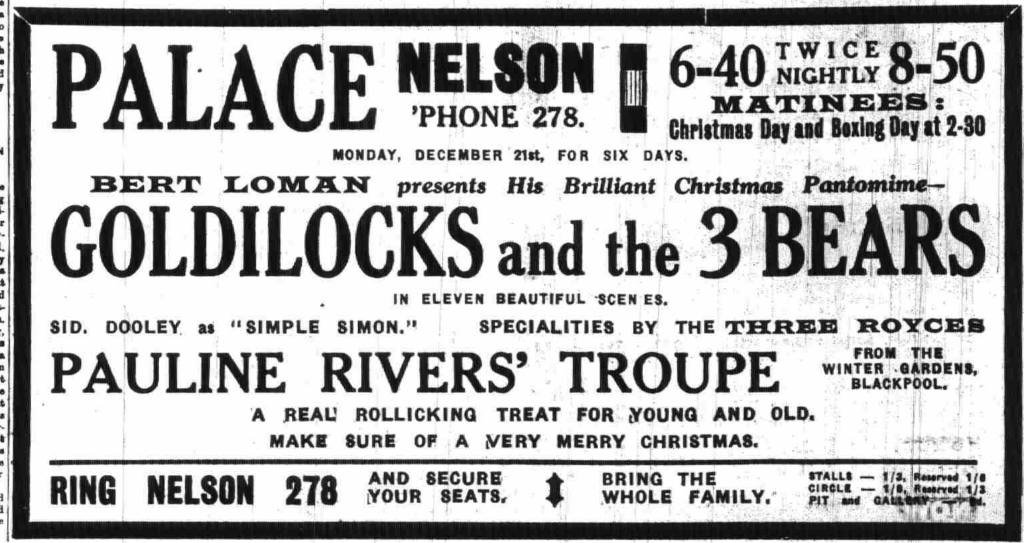
The pantomime season continues as usual into the next year of 1937 and Goldilocks can be seen at the Royalty Theatre Chester. In this production there is a fairy ballet and ‘another clever item in this scena is the dance by two realistic “dolls” and a clever “toy soldier” number, by members of the Pauline Rivers Troupe’ and which forms an ‘appropriate finale’.
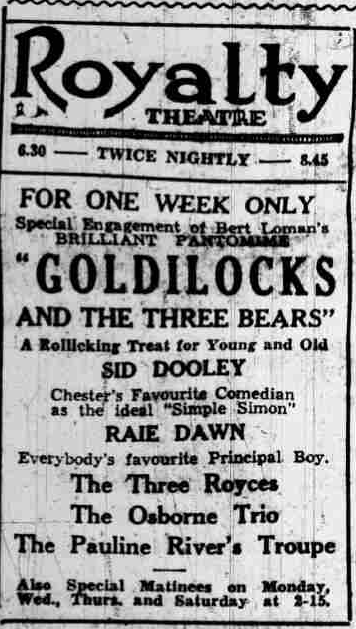
The Tower Ballet for this season is called, ‘Happy and Glorious’ and the event had a Saturday night start in May. Well produced and featuring a ‘tiny circus’, with animals, a clown and performing horses, in dress of course, and the featured dancing of the Blackpool dance festival prize winner, Brenda Mace, it was also a patriotic affair, being the year of the coronation of King George and perhaps with the uncertainties of the European political situation in the backs of many a mind, a deliberate national identity of red white and blue was evident along with the flags and uniforms of army and navy worn ‘with the requisite swagger by young Blackpool’ (Era 21 May 1937) and even a little Princess Elizabeth within a ‘huge illuminated crown’. At the end of the show, bouquets were presented to Pauline and Little Emmie. In July when when Scotland provided many a holidaymaker to Blackpool during the country’s annual holidays, quite a number of them attended the ballet and formed part of the 6,000 in the audience, and while a little girl was singing ‘Pennies From Heaven’, such was the sentiment attached to the song that the people north of the border began throwing down pennies from the balconies. Despite Madame Pauline’s protests, and while the little girl ignored them and, like a true professional, carried on with her singing, when these pennies were collected at the end, they amounted to 500 in all. It was the time when the northerly part of Blackpool at Cleveleys was becoming a popular place to visit in its own right, and where in the ballroom of the new Queens Palais de Danse in July, Brenda Mace was given permission to sing and dance by Pauline in a Friday night cabaret.
After the ballet, the years’ ending pantomime is ‘Goldilocks and the Three Bears’ in which ‘Pauline Rivers’ Dolls in Toyland’ are included at the Gaiety Theatre in Manchester, but no further report in any detail. Though the pantomime season ran its course it would be the last one that Pauline would be involved in before her death later on on the year.
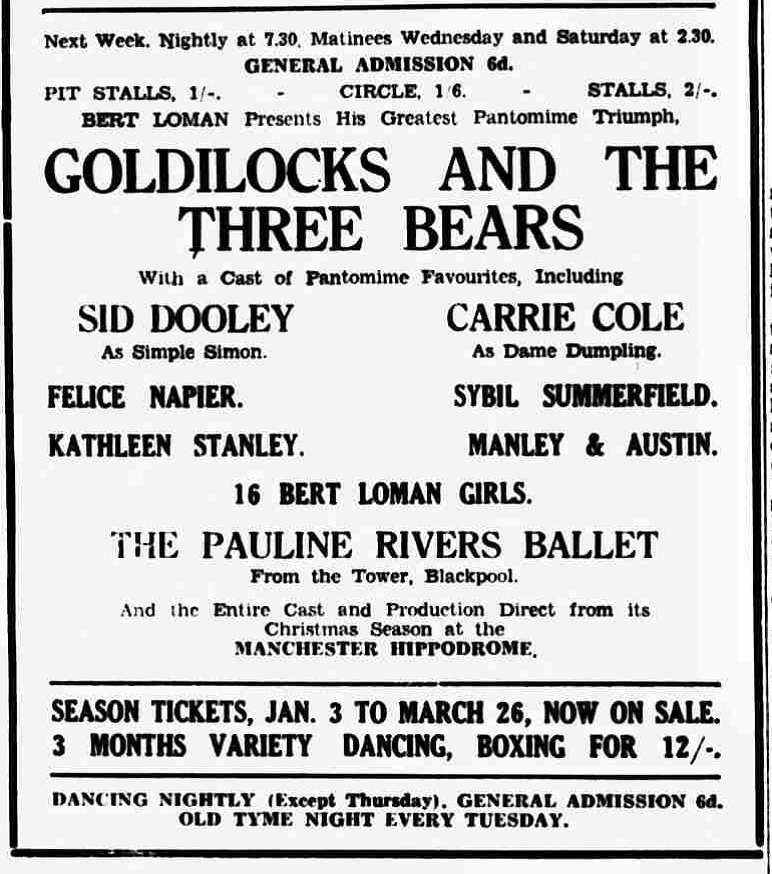
The pantomimes took in the Winter Gardens Morecambe (the advert above) with a single diverging performance at the Lancaster ‘mental’ hospital (Lancaster Moor psychiatric hospital) to entertain 500 patients and where little Violette as one of the bears is perhaps still performing and given a mention if the name refers to the same little Violette. The cast then move on to the Tivoli in Hull with the same Dolls in Toyland and with Pauline Rivers’, ‘magnificent ballet from the Tower, Blackpool.’
This is the last notification of Pauline Rivers’ Ballet found in the newspapers.
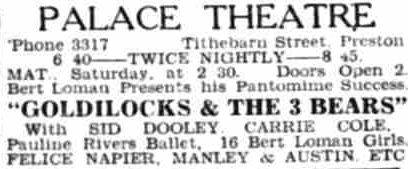
In the November of 1938, Pauline fell ill at her home at No 12 Shaftesbury Avenue in Blackpool’s North Shore, a home she shared with Little Emmie and round the corner from the from both the Actors’ Chapel at at Stephen’s Church and and the flamboyant Lawrence Wright in his ‘Castle’ on the sea front. She had been ill for about two years with rheumatism and heart trouble. On November 5th she had lost her balance and had fallen in the bedroom. Helped back into bed, she appeared to recover but the following day the doctor advised her to go to hospital as it appeared she may have broken her leg as it was badly bruised, but this proved not to be the case. She gradually became worse in the hospital, developing pneumonia and died there on the 16th. Death was due to hypostatic pneumonia as established at the inquest. Little Emmie who shared the address and had retired from the stage recently gave evidence at the inquest. Lawrence Wright, whose songs Pauline had helped to popularise, would also fall out of bed ad break his leg in his home around the corner from Pauline when it was the time for his own natural demise in a relatively long time hence.
Her funeral took place at St Stephens on the Cliffs and it was the Reverend and friend, Frank Freshwater, the actors’ chaplain who conducted the service which was attended by many members of the acting profession and her Sunshine Girl troupes. Her interment took place at Blackpool’s Layton cemetery attended by the Mayor and Mayoress.
Funds for a memorial plaque, collected by donation and organised by Canon Freshwater, had reached £50 (£27,709.64; 2022) by the reported date. A dance to provide funds had recently been organised by four original members of the first ballet in 1902. These are named as Elsie Dabbs, Mrs K B Brookes, Mrs Phoebe Jones and Miss A Archer, though the first three at least might have been addressed by their married names and they performed the original Cake Walk. She had trained the children in the ballet to do the cakewalk to the tune of ‘Whistling Rufus’. Members of the 1937 ballet, Pauline’s last, performed more modern numbers. To commemorate a memorable number, Vera Pearce sang ‘Pennies From Heaven’ with her cloak upon the floor but there is no report of pennies being thrown towards her.
In a touching tribute to Pauline, one of her new pupils, Joan Pinder, had only just graduated from her ballet school in Blackpool and Pauline thought she was ready to tour but died before Joan was able to fulfil her lifelong wish. She did so by leaving home and a grieving mother who had to lose an only child because it was what the highly respected Madame Rivers arranged for her. Joan appeared in pantomime in Goldilocks and the Three Bears in Bristol.
Postscript
Many members of the ballet both before and after Pauline’s death, had moved on to become well known stars of stage and screen. She is attributed to have trained and instructed over 50,000 children during her time.
Two of Tower Circus clown Doodles’ daughters, Kathy and Betty MacAllister, had appeared in the ballet and had also won dance competitions in the town and now were fulfilling their own careers. And there was ‘little’ Bobbie Butcher now (1943) in the Fleet Air Arm in the USA and had been a tap dancer in Pauline’s ballet before joining up at age 18. He had broadcast a couple of times on the radio from New York.
The wife of Charlie Barlow, band leader at the Tower from about 1958, was a ballerina trained by Pauline Rivers. Charlie, who today we would loosely call a ‘legend’ at the Tower, first played cornet in the Freckleton prize band before switching to saxophone and earning mere pennies in the local clubs before landing a job with the Bertini set up at he Tower.
There are many treasured memories of mothers, grandmothers and by now even great grandmothers etc., being involved in the pantomimes or the ballets on the Blackpool history Facebook pages, and no doubt many other stories to tell.
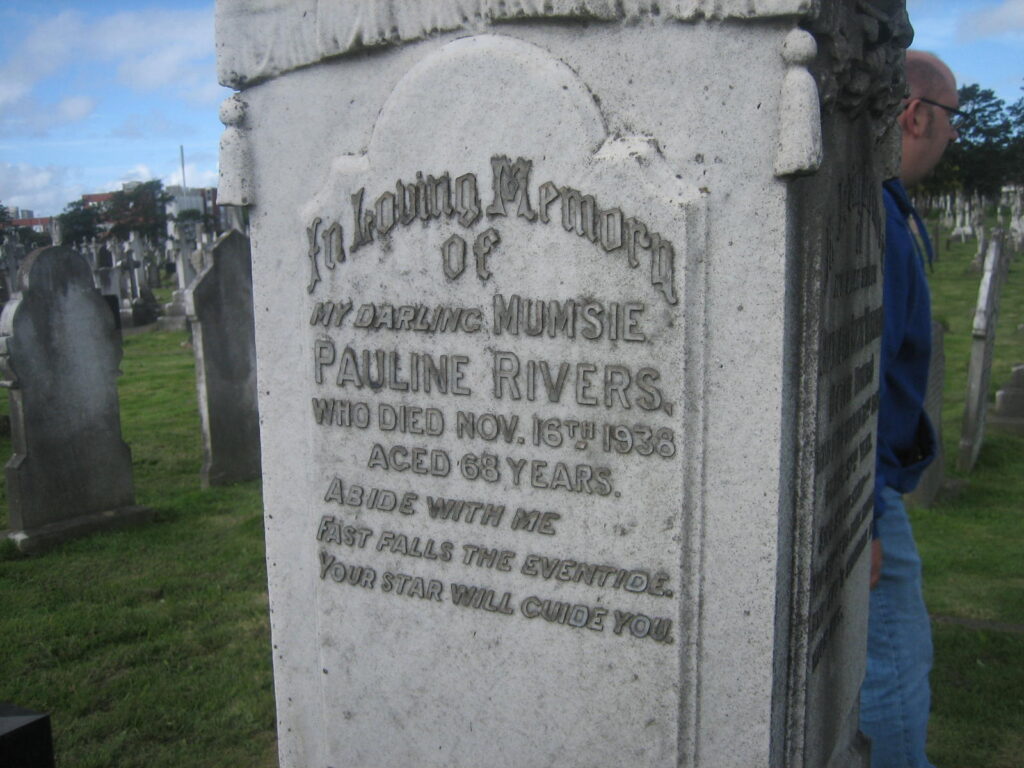
Private photograph directly from the cemetery with permission.
Little Emmie
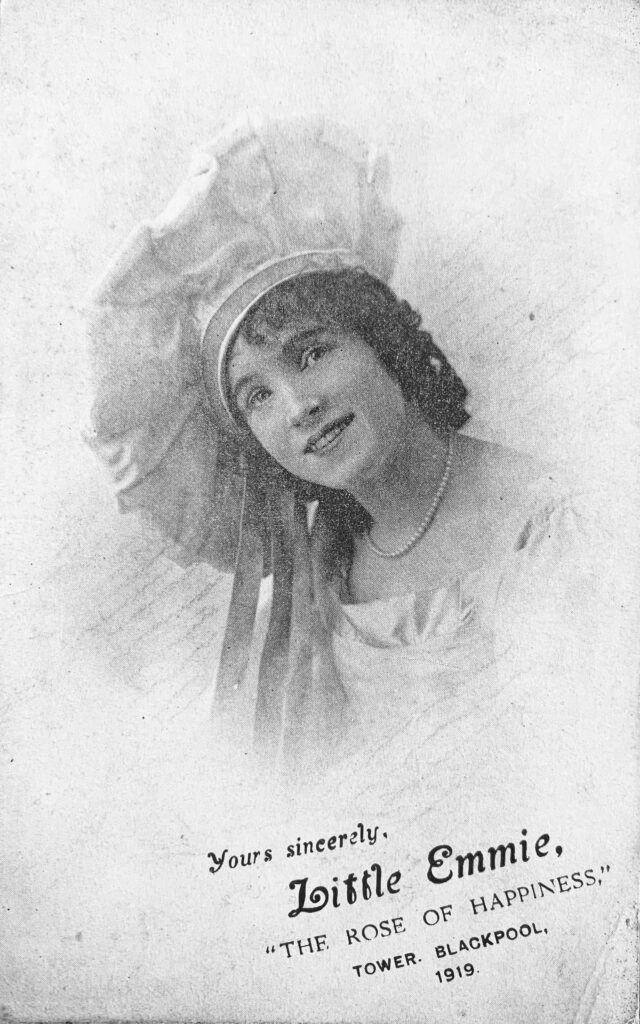
‘In all the recent productions, Little Emmie has been the star, and a more versatile little artist it would be difficult to find – whether as a ballet dancer, singer, or male impersonator. Nothing could have been more charming than this little artiste’s rendering of, ‘I’m Sitting on Top of the World’’. This was the Era 27th October 1926 as Little Emmie’s talents were consistently praised.
Little Emmie, stated as being only 4’ 5” tall, was born in 1896 and lived on to a good old age of 97. At an early age she was, it seems, taken away from a life of poverty and disinterest by Pauline who became her adoptive mother and a lifelong companion, and with whom her talents and personal expression were given the opportunity to flourish. She first took part in the ballets and soon became the leading dancer, entertaining the troops alongside Harry Lauder during WW1.
In Emmie’s obituary in 1994, Robin Duke, arts correspondent of the Blackpool Gazette, describes Little Emmie as coming from an impoverished Mancunian family and the ninth child of that family. There is an Emmie Tweedale born in May 1896 in Manchester who, by 1901 is living at 185 Gorton Street Blackpool where her father Edwin is a hackney carriage driver. She is living with her mother, two sisters and a brother only, though is no evidence found of her being the ninth, even taking the frequent tragedies of infant deaths into account. Whatever her origins, family ties appear to have been severed at a young age and she was introduced to Pauline Rivers and the dancing, it seems at about eight years old, and then on the stage at about ten years old. It is not known how she was introduced to the ballet maitresse but Pauline took her under her wing to become a kind of surrogate mother to her. Despite the alleged high number of siblings, on her death at the grand old age of 97 in 1994, she had no known relatives.
The Tweedale name, as associated with Blackpool at the time, is one which is often in the newspapers mostly for minor criminal offences but there is no evidence to combine the names into the same family or indeed to place Little Emmie within any of them. They were a family, or families, of survivors and the fittest only survive if no time is wasted in compassion or the consideration of others. It is equally a political philosophy in which more privileged and educated folk are able to describe it otherwise. From being drunk and disorderly and fighting, to obstructing the footpaths, to driving a hackney carriage while drunk, to wrangling with money lent and expected back and then the more criminally serious case of a physical assault on Mrs Tweedale, the name is often represented in the newspapers. If the name belongs to one or more family, and if Little Emmie emerged from this or any of the Tweedale names thus represented, it is not surprising that once, for some unknown reason, she is introduced to ballet and her talents made evident, that Pauline Rivers would take her under her wing and lead into a life of natural artistic expression away from the need to accept, with despair, the material necessities of day to day survival and the total and inevitable denial of freedom of expression and thus open up for her both the ability and opportunity to share it with others.
She is touring with the ballet company in pantomime by 1910 as she is recorded in the Express (Mexboro) as performing at the prince of Wales Theatre, Mexboro in Dick Whittington with very good reviews along with regular members of the troupe, the Langley sisters, Nellie and Gertie, and singing, ‘Underneath the Bright Blue Moon’. Here, she is given good reviews for her ballet performance, executing ‘some artistic toe dancing’ (Express above) along with the Pauline Rivers troupe in both the ‘Ballet of Roses’ and the ‘Statue’ ballet, so by now she was quite accomplished with a special, natural, talent and the ability and confidence to express it. By December she is once more on tour with the Pauline Rivers’ troupe at the Royal Hippodrome in Liverpool. At this time Pauline Rivers can write to Feldman’s music publishers, and printed in the Era of Jan 8th 1910 and, while her troupe was performing at the Theatre Royal Hanley, that she is still using, in her scena, ‘In The Merry Winter Time,’ the songs, ‘Sunbonnet Lady’ and, ‘Come Over the Garden Wall. These songs are sung by Gertie and Nellie Langley and Little Emmie so by now Little Emmie is quite achieved in the status of her performances.
In 1911 her address on the census is Manchester along with the Pauline Rivers troupe who has her birthplace as Manchester. By June she is back in Blackpool and involved in the extended and emphatic coronation celebrations which went on all day and late into the night and the following early hours of the morning. Little Emmie was at the Tower with the troupe ‘where there could not have been a merrier carnival than that at the Tower. The crowd was out to coronate and coronate it did with all its heart. As the night sped, the fun waxed more furious, and until close upon two o’clock this morning there was not the slightest cessation of the gaieties.’ (The Blackpool Herald and Fylde Advertiser June 26th 1911.) Here Little Emmie was encored six times for her rendition of ‘My Little Chocolate Soldier’.
During WW1, as the ballets and pantomime performances continued she also played her part in the entertainment of the troops and at one time appeared on the stage with Harry Lauder in that capacity.
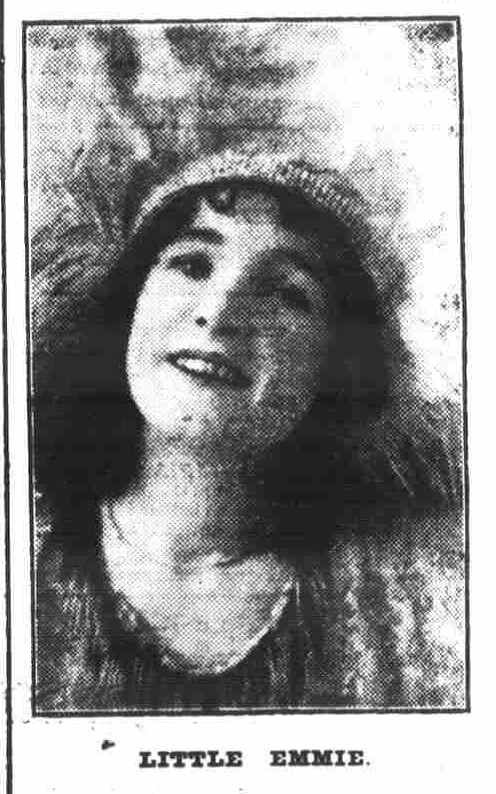
.
She married Fred Lewis Coates, a regular cabaret artist who is in Blackpool at the Trocadero from as early as 1931. She was married on the 28th November at St Stephens on the Cliffs, just around the corner from her home and where Lewis and other theatricals had been staying, and it was the house she had been sharing with Pauline Rivers. Indeed the Lancashire Evening Post refers to her as Emmie Rivers in the presupposition that she was the ballet maitresse’s daughter. The wedding ceremony was celebrated by Canon Freshwater who was described as an old friend of hers and along with Pauline she had contributed to the fund for the construction of the unique Actors’ Chapel in the church. At the time of her wedding, it was deemed necessary to state that she was wearing a ‘royal purple ensemble, with a three-quarter length coat trimmed with squirrel fur and a matching pill box hat.’ She was attended by a Miss Ivy Taylor a co-dancer in the ballets. Lewis Coates was also, in his home village in Essex, a juryman of the Dunmow Flitch.
She retired from the stage shortly before Pauline’s death and when it seems Annette Schultz was taking over the reins of the ballet production as Pauline’s health was declining. In the June of 1947 Emmie attended the wedding of co-dancer Lillian Hill, who had done five seasons at the Tower Ballet and had recently worked at Vickers Armstrong during the war.
Her husband is described as a ‘civil servant’ on her death, so he had evidently left the stage as Emmie too appears to have done. Lewis had pre-deceased Emmie by six years. As a ‘civil servant’ Government Departments were the biggest employers in Blackpool and the surrounding area. On his death Emmie moved house and then to a retirement home where she died in the February of 1994. She is buried alongside her saviour and mentor Pauline in Blackpool’s Layton cemetery where she graciously describes Pauline as ‘Mumsie’ on the epitaph. Emmie had inherited Pauline’s estate of £2739 18s 2d and had erected a fitting, monumental tomb over her grave. (Thanks to the blogspot of kurtofgerolstein for this information.) Pauline’s estate would represent only a little less than £148,760.66 in 2023.
Annette Shultz
Annette was born in Bolton in 1908 and her father, Mr W Shultz was an American dentist who practised in Liverpool where the family lived. It is stated that she was educated in St Anne’s and it is perhaps here, with its geographical rather than its demographic closeness to Blackpool, that she came into contact with dance. A natural talent must have been attributed to her as she had her dance troupes which performed (reportedly) at the Palace and the Tower Circus before she is connected to the Tower ballet in the early 1930’s. She also taught dancing in Liverpool. At the time she entered the Tower she was still young and not much different in age to some of the dancers themselves. Along with Pauline, she can be attributed to have kick started the careers of many a dancing performer in the entertainment industry. By 1935 she appears with her 16 Jubilee Juveniles which include ‘little Brenda’ who is presumably Brenda Mace as she would have been ‘little’ at that time, in Lawrence Wright’s ‘On With the Show’ on Blackpool’s North Pier in its jubilee edition (25 years since the coronation of King George). Her dance school was situated on Church Street, though no exact address of this seen. At the Tower she was well known for her ‘bevy of lovely girls’, Annette’s Circusettes. She had arranged all the dances in Tom Moss’s Pantomime in the 1938/9 season. Tom Moss, a Wigan man and by now a popular producer and comedian had won the solo tenor prize at the annual Blackpool Music Festival in 1919. Brenda Mace was also in the show ‘Dick Whittington’, herself winner of the Blackpool Dancing Festival at Blackpool ‘a few years ago’. Blackpool was the place outside London perhaps where many performers would begin their careers. Annette married Mr Johannes K Haslund-Faester, a Norwegian with a USA connection (Ancestry) , in 1949, Annette died in 1953 at a relatively early age.
THOMAS GRAH
‘Lancashire’s Prize Idiot’ or ‘The Entertaining Fool’
There is a Tom Grah, boxer, but Tom Grah the entertainer, a Wigan man, is first noticed in an advert in the ‘Stage’ of October 1921. A journeyman comedy stage act with a partner, Jack Grear, which contained the regular commitment of time and effort to entertain others a commitment which belongs to much of the acting profession.
The 1929 electoral rolls show Thomas living with his wife, Gladys, in a caravan on Garfield Road which is next to Elms Avenue in Thornton Cleveleys, Blackpool, and which is in the grounds of Ashworth House it seems. There is no Garfield Road on a modern map, only Garfield Street in Fleetwood. Further development of the area would have meant the re-naming or construction of new streets. In 1933, when a storm damaged his marquee, he had been in Cleveleys for thirteen years.
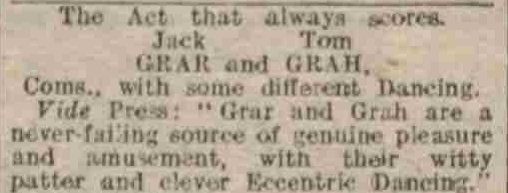
His comedy style and eccentric dancing lead him into pantomime, and it is then that he appears to have split from his stage partner and gone solo. The first recording of him being with the Pauline Rivers’ troupe is in ‘Mother Goose at the Royalty in Chester in the January of 1927. He plays alongside Little Emmie’s graceful dancing as Jill, and his tomfoolery as Idle Jack and his song, ‘I’ve Never Seen a Straight Banana’, along with the nonsensical, Stoodle-oodle-oo.’ ‘brings down the house’. The Mississippi Moonlight Girls and the Twelve Girlies dance in the costumes made to Madame Pauline’s design by Elsie Farrow of Liverpool. The Chronicle (Chester) of 1st January records, ‘One of the most popular members of the cast is Tom Grah who, as “Jack” always finds a way of getting into trouble and then, in trying to extricate himself, he gets deeper into the mire. He provides plenty of fun and brings the house down with his song, “I’ve Never Seen a Straight Banana”’ This is a Lawrence Wright song for which the flamboyant showman writer would offer £1,000 to anyone who could show him a straight banana. At this show the pantomime horse is provided by the Alveto brothers, and the ‘Paulettes’ as Pauline Rivers’ troupe provide ‘a touch of novel comedy’ in their ‘clever acrobatic turn’. In December of 1927, the Isle of Thanet Gazette, while the pantomime is playing at Margate, gives him a good review as, ‘Jack (Mother Goose’s son) played by Tom Grah, keeps the audience greatly amused. Mr Grah is a hard-working comedian with a number of whimsicalities, and he gets any amount of “hands” and a hearty reception at the general muster at the end of the show. He sings a very taking song “Stoodle-oodle-oo” and has a very amusing scene with a valiant “steed” which he addresses as “Call Boy”. The interior of the horse is composed of two comedians, Taylor and Vic.’ Jill played by Little Emmie (she doesn’t say what her other name is), is a very dainty little lady, and dances divinely.’
Before moving into pantomime for the winter season to keep an income coming in, no doubt due to the precarious earning potential of acting, he had established himself in his own right, for the first time in Thornton Cleveleys, by 1920 and in 1927 he is recorded on the electoral rolls as living in a caravan, convenient accommodation for itinerant performers with his now, comedienne wife Gladys. He would make a popular name for himself with his ‘Jolly Tars Concert Party’ entertainment on the beach at Cleveleys and this was well invested and established by 1933 when a violent storm in early August of that year resulted in great destruction of dreams and materials and financial loss. At this time, in a full page spread in the Blackpool Times glorifying the advantages of living on that part of the coast just to the north of Blackpool, there is an article at the bottom of the page describing the terrible storm that had completely wrecked the entertainment area of Tom Grah’s Jolly Tars Concert Party on the sea front. Perhaps ill placed among the promotion of the positive benefits of living there as far as an advert for the place was concerned, it was evidently a tragedy for Tom and his crew
At the time of the storm, he and his team were awoken in the early hours by a number of boy scouts who informed them of them of the danger to their equipment due to the storm. When they arrived at the site they were witness to the marquee, which could house 500 people, lifted bodily into the air and its stout timbers broken into pieces. Chairs were smashed to pieces and the piano buried under a pile of rubble. Where previously stood circuses and sideshows there was just a tangled mess of equipment and the remains of the temporary structures. Along with the boy scouts who Tom Grah praised to the hilt for their assistance, they rescued what equipment they could, though everything was damaged and the dressing room destroyed and deckchairs ‘blown away like paper’.
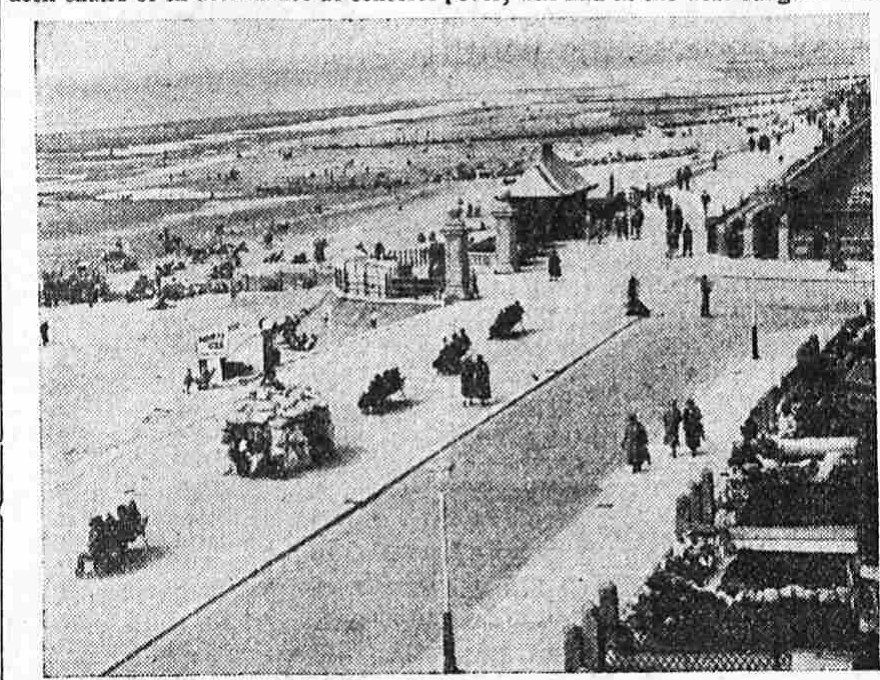
The Promenade at Cleveleys. ‘The promenade is never very far from the building estates’ which were being built in earnest and Cleveleys was advertising itself as a pleasant rural seaside resort. Blackpool Times, Fleetwood Express and St Anne’s Visitor August 4th 1933.It’s not sure how Tom Grah recovered from the financial, and indeed emotional loss, of his livelihood but he had pantomime at least to fall back on and he is also eventually seen as a theatrical agent. He is regularly in pantomime in his stage career from the 1920’s to the 1950’s and, in January of the following year of 1934, he is at the Hippodrome in Burslem playing as Simple Simon in Little Red Riding Hood, and the success of this pantomime is accredited to ‘Tom Grah and his team’. And he ‘finds abundant scope for his talents’ in ‘Babes in the Woods’ in the pantomime season of 1937 playing the page of Baron Hardcake at the Preston Palace. ‘Here he is responsible for a good deal of the humour.’ (Lancashire Daily Post December 21st 1937). Then next, during the war years, he is in Stafford, along with his wife Gladys, when the opening of a second front in the war in Europe is on everybody’s lips, and those people in Stafford who forgo their annual holiday to the seaside towns of North Wales and Blackpool to stay at home, are praised by the mayor for the freeing up of the railways for the vital transportation of troops and essential supplies. Tom Grah, billed here as ‘the Lancashire comedian’, is in town to entertain the children among a host of events held on the English Electric ground.
And in 1944 at Crewe, he and his wife are on stage with popular radio and stage star Kitty Masters no longer is involved in the Jolly Tars as the advert below shows but is out on his own as an actor/comedian. Later in the same year, he advertises the same, ‘Holidays at Home’ in the ‘Stage’ of 11th May.
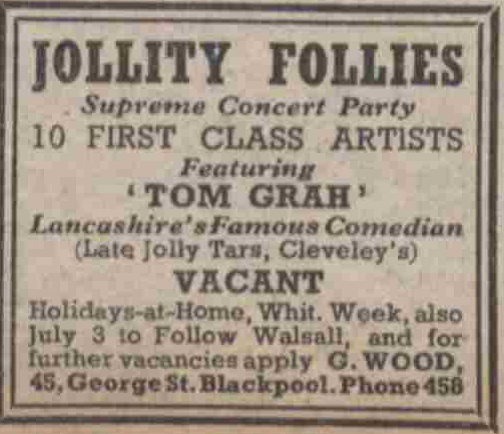
It seems now that he is working as a theatre agent, as the address in Blackpool above is seconded with an address in Cleethorpes, in the local Evening Telegraph, of 51 Market Place, and from where he advertises for a young accordionist and a singer for Jimmy Slater’s Cleethorpes Follies. The following year he is still on the east coast at Skegness with Jimmy Slater’s Mascots.
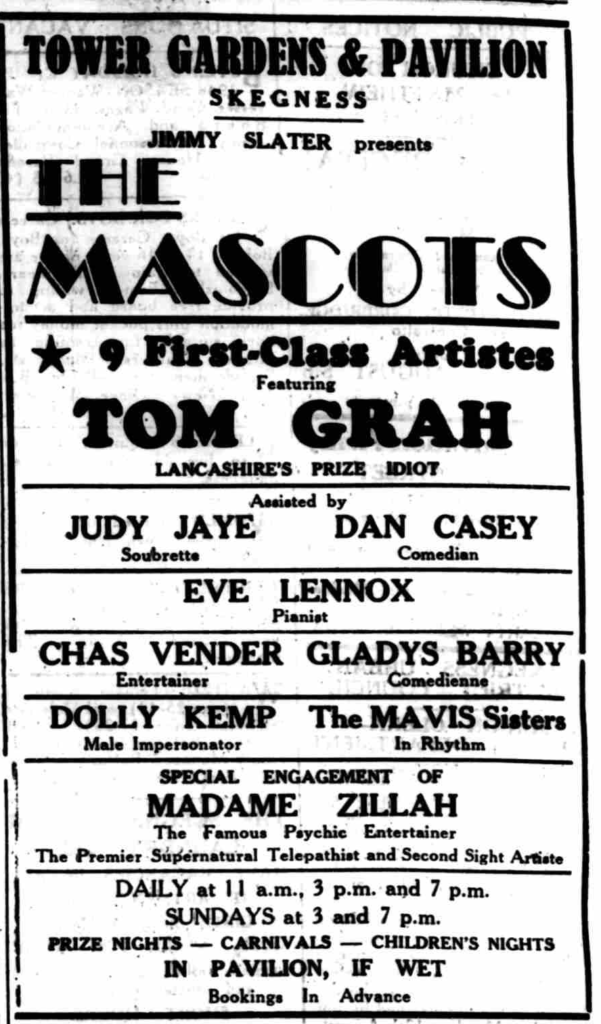
It was an open air concert performed in the Tower Gardens and the Skegness news of August 14th reports, ‘Heading an excellent cast, and producing the show, in addition, is that popular and versatile comedian, Tom Grah, whose quaint humour had been much appreciated by residents and holiday-makers alike. He is ably supported by Gladys Barry, a vivacious comedienne who provides him with a perfect foil.’ Gladys can perhaps be assumed to be his wife with a stage name of Barry.
In this year he is on the stage once more in Cheshire, now with a partner, who is probably his wife Gladys, in a comedic duo. From then until the last date found of 1950, he is resident in Cleethorpes and/or Skegness. The following year as ‘Lancashire’s Prize Idiot’ he is at the Tower Gardens and Pavilion in Skegness with the added advantage of the open air entertainment being able to run for cover if the weather is inclement. The show is once more Jimmy Slater’s, ‘The Mascots’, a variety show of song and dance and comedy in which, ‘Here he is ‘ably supported by Gladys Barry, a vivacious comedienne who provides him with a perfect foil.’ By 1950, still billed as ‘Lancashire’s Prize Idiot’ he advertises his availability from his Blackpool premises of 45 George St. In this advert in the Stage he states that he has been in continuous work and resident in the last three years variously in Chester, Huddersfield, and Warrington.
From that date there is no mention of Tom and the records remain quiet or just not located until this was posted in History of Blackpool facebook group; https://www.facebook.com/754792229665844/photos/gm.2296430950542232/755132536298480/ and https://www.facebook.com/photo/?fbid=652832828 0594535&set=gm.2297806430404684&idorvanity=330530010465679 which connects many people to the Jolly Tars and thanks to those for their contributions.
Elizabeth Larner
Stage and Television Actress
Elizabeth came from the same town of Wigan as Tom Grah, born there in 1932. Her first ambition was to become a vet, but it is reported that Elizabeth, had discovered her singing voice after she had had her tonsils removed. She had gone down to London for an undisclosed reason while still at school then came back up north to her parent’s boarding house in Blackpool where she worked as a waitress after leaving school. Her mother, perhaps aware of her good singing voice, had her trained in elocution and dancing and she joined the Tower Ballet while working as a waitress at her parent’s hotel, later touring with the pantomimes and revues under the guidance of Pauline Rivers and, at this time, probably Annette Shultz too. In the ballet productions she earned 30s a week (£43.30 approx. in 2023) which for a young girl was quite a fortune.
She is first mentioned playing panto and in January of 1951 where she gets a special mention in the Stage review of the show, playing as Will Scarlet in Babes in the Wood with leading man Eddie ‘Monsewer’ Gray in the role of the Wicked Uncle at the Chiswick Empire. Then in the Sunday Pictorial of 7th October 1951 when, as an understudy in Kiss Me Kate, she then ‘gets her first radio chance tomorrow on Variety Bandbox’ (Sunday Pictorial October 7th 1951).
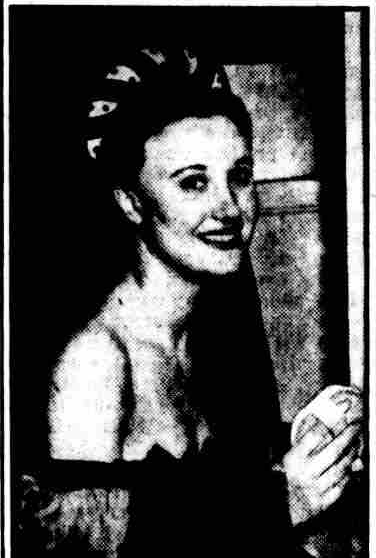
Her first big break came on January 30th 1952, when, at 19 years old and as far back as the third row of the chorus in Kiss Me Kate, she was promoted by circumstance to the lead role in the show. It was at the London Coliseum and the lead at the time, Helena Bliss had lost her voice and her understudy, Helen Jutsen was in hospital with ear trouble and the mighty headache for stage director Tommy Hayes, without a leading lady, was that it was only 30 mins before curtain up. The only thing to do was to ask the chorus girls who were arriving one by one at the theatre for the matinee, but none had the confidence to volunteer until, five minutes late, Elizabeth, known affectionately for some reason, ‘Paddy,’ Larner turned up and agreed. I suppose the rest is history. So from an imagined paroxysm of despair for the theatre manager, a paroxysm of the joy of relief might have ensued.At first she played the matinee without a rehearsal and, such was her success, that she was rushed to the leading lady’s dressing room for the evening performance. From then on she had established her name. Such was her success once more that she received twelve curtain calls and bunches of flowers from a highly relieved management and a five year contract in the role from Jack Hylton, the maker of young girls’ careers, including Shirley Bassey.
So in the role of a kind of Dea ex machina, the gods had recognised her talent that night and had sent her down to the theatre, and together they had rescued the show. She then continued in the role as it toured. This success inspired Jack Hylton to a pitch of self-congratulation when he would be able quote other stars that had been brought out of obscurity, into the spotlight sometimes by his own, astute observation and judgement. Audrey Hepburn was indeed a chorus girl in one of his productions, ‘If only we keep on keeping our eyes open for the stars that are bubbling in the chorus.’ Shirley Bassey, at 19 years old was also a Hylton girl.
From earning 30s (approx. £38.00 in 2023) a week in the Tower Ballet, and £10 (£254.83 in 2023) a week in the chorus of ‘Kiss Me Kate’, Elizabeth was now on £30 (£764.50 2023) a week, but keeps her financial head on her shoulders and is not averse to being proud of shopping at Woolworths for earrings and things. The show, an interpretation of Shakepeare’s ‘Taming of the Shrew’ is given good reviews throughout its provincial tour and the reportr for the Sussex Daily News, while the show was in Brighton in June, can state, ‘All except one of the singing voices can be classified as good. The other, that of Miss Larner in the leading role is beautiful. It has a good range, considerable power, and much delicacy.’ She is now celebrated for her trademark ‘wink’of the eye. Perhap it is a natural feature or perhaps she has copied the famous Cissie Loftus ‘wink’ as perhaps informed by Eddie ‘Monsewer’ Gray with whom she had worked and who was married to a niece of the former Layton Hill student, Cissie.
In the April of 1953 she returns to Blackpool at the Opera House. A particular good review is given in the Sussex Daily News of June 22nd 1953 when the show was at the Brighton Hippodrome. Apart from a reference to the difficulties of offstage affairs between some of the performers, including Elizabeth, which mirrored the content of the play, her own contribution was that, while all the singing voices were good, that of Miss Larner in the leading role, is ‘beautiful’.
In this year she was also playing in ‘Kismet’, while Jack Hylton was bringing Shirley Bassey to the notice of the world of entertainment. In 1957 she is in ITV’s ‘That’s Life’ as a guest singer, with songs from the American musical. ‘The Bells Are Ringing’ which was due to open in London in November.
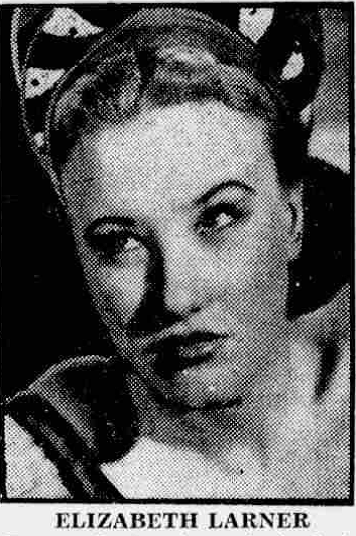
The Sunday Sun July 20th 1952 above and The Sunday Pictorial January 15th 1956 below. Two promotional photos of Elizabeth Larner, a career created by Jack Hylton.
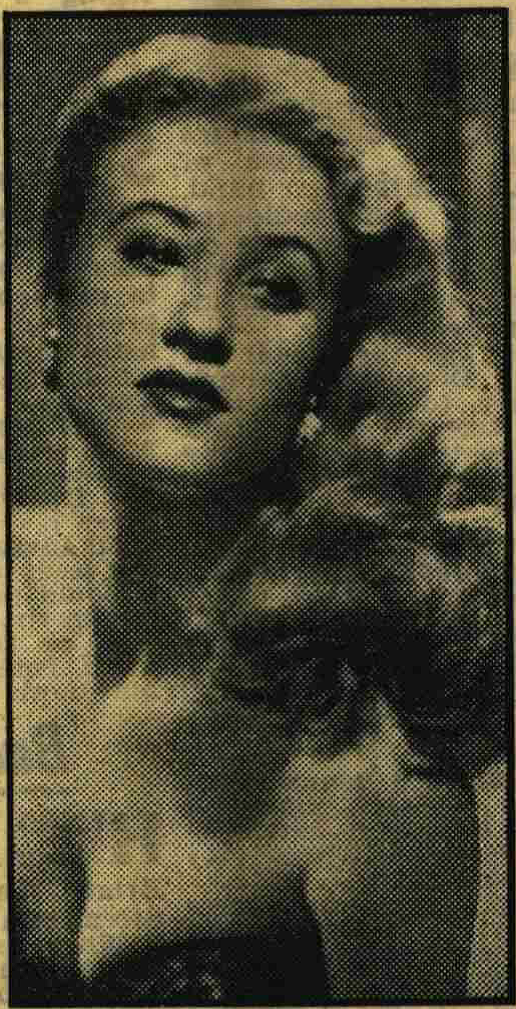

She is a guest singer on Max Wall’s, ‘That’s Life’ on ITV singing, ‘‘Long Before I Knew’ and ‘Love, Wonderful Love’. The former from the American musical, ‘The Bells Are Ringing’’ which it is stated, opens in London later in the week. Elizabeth went on to star in several TV shows including Comedy Playhouse, Song of Norway and Up Pompeii with Frankie Howard. The limited records searched are quiet after that and Elisabeth died, only relatively recently and quietly at a good old age of 90, on March 11th 2022 in Venice, Florida.
Marie Sinfield is one of the girls of the ballet born in Blackpool in 1905 and occasionally the premiere danseuse as ‘an accomplished toe dancer’ at least by her later teens, touring with Pauline’s Juveniles, perhaps standing in for Little Emmie who is not mentioned when Marie is credited. Her sister Nellie is equally credited for her dancing. Their father, Frederick, a Shropshire man, worked in Blackpool at the Tower as an attendant in 1910, and in 1911 is a theatrical stage manager. He and his wife Emma have six daughters and on this census return Marie, as she is familiarly known, is given her birth name of Marion. It seems that the family moves to South Hulme Manchester, perhaps on a temporary basis, as both Marie and younger sister Nellie are at school there in 1918 and their father has a local address, their former school quoted as Christ Church Blackpool. They are first admitted to the school on 25/11/1918 just after the armistice, and leave the school shortly afterwards on the 29th and the reason given briefly as ‘troupe’ a short stay but perhaps to satisfy legalities as under age children as they had legitimate paid work on the stage.
A sister, Gladys whose granddaughter, Marianne, is naturally the great niece of the two sisters, Marie and Nellie, has very generously provided the wonderful pictures of the sisters and their father and are presented here with her kind permission.
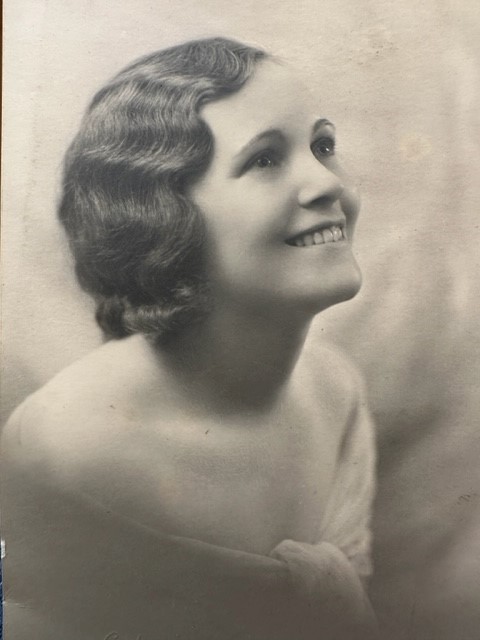
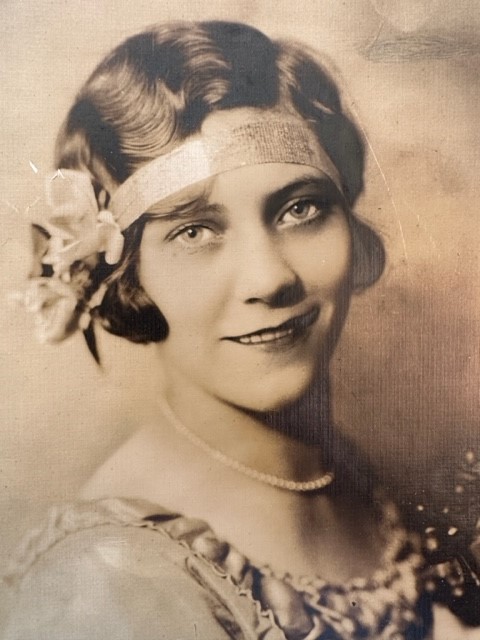
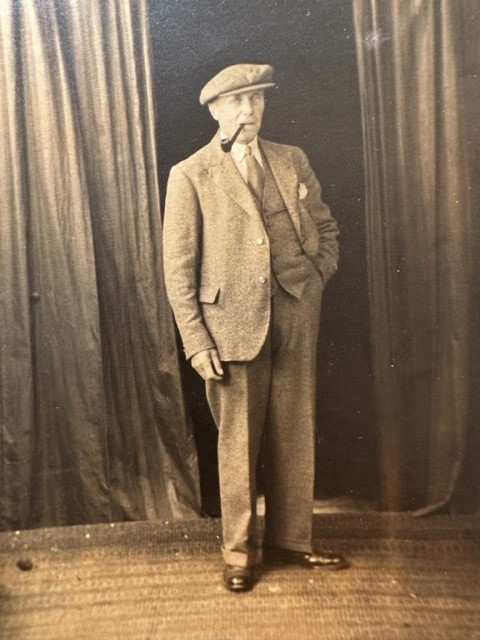
Gladys, of her own five children, had a daughter, Marion who also grew up into Pauline’s Tower ballet. Sadly Marion was destined to have a short life, tragically knocked off her bike on Park Road and killed. Her mother Gladys kept all the letters of condolence, from all those who knew her and including one from Pauline Rivers herself, treasured memories of a daughter cruelly taken away from her before her time. The link to Marianne’s facebook post containing the letter to Gladys, her grandmother, is here; https://m.facebook.com/groups/blackpoolhistory/permalink/1837710669747598/
Viva Lynn was only16 when she died and her birth date on the school records is given as 1895. A former pupil of a Manchester school and Devonshire Road School, Blackpool she was given the reason for leaving the school in Blackpool in 1906 that she had ‘left town’. While in Blackpool she is given addresses in the school records as 26 Grosvenor Street and 14 Caunce St, so she moved addresses several times, presumably to the dictate of family circumstances or occupation. On the later school record of 1906 she is given the name Ivy with the same address of 26 Grosvenor St. with a slightly different birth date (March rather than April) just to confuse things and query the facts. At the time of her death she was one of Pauline Rivers’ troupe of ‘Little Girlie’s Toybook’ at the Tower. She was a popular girl and had earned the name of Little Sunshine. A vivacious girl as the accounts describe her and ‘She was always wanting to do something for others and to brighten up somebody’s life.’

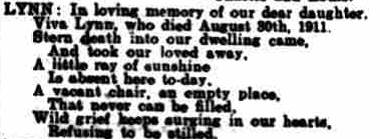
A sad memoriam of a bereaved family on a page which included the deaths of several Blackpool soldiers at the Front. If family life has it tragedies in war, it is also has them in peacetime.
Joseph Woof Gaggs, conductor of the Tower orchestra, in the ‘Ballroom-Pavilion’ from at least 1907. He was a Manchester man and from a family of musicians. His father Michael Oliver Gaggs had conducted the orchestra when the Tower Ballroom had opened in1894 and composed waltz music for the occasion. While Oliver, as he was more popularly known died in 1916, Joseph’s brother, Thomas Harold, who conducted the Manchester Palace orchestra from 1903 had died in 1914.
Joseph Woof Gaggs lived at 238 Palatine Rd in 1913 and in 1914, and at 37 Beech Ave in 1925 (electoral rolls). His name, which is somewhat short and memorable, results from his father’s patronymic of Gaggs and his mother’s, of Woof. There are several online web addresses which bring the Gaggs name of several generations back to life as Joseph’s cousin Arthur continues the musical tradition. Joseph died in Blackpool in the February of 1929. Joseph Gaggs a long serving member of the Halle Orchestra in Manchester and uncle to Joseph Woof Gaggs died in Manchester in 1902.
Sources and Acknowledgements
The vast majority of the story has been derived from (over a thousand) contemporary newspapers of the British Library Newspaper archive accessed via Findmypast. Thanks to Denys Barber of the Friends of Layton Cemetery for the original research and the photos of the gravestones and to kurtgerolstein for the ease of access to Pauline’s early life via the records.
To Robert Leach for the quality photographs which enhance the visual of the script.
To Denys Barber for his previous work on the cemetery at Layton concerning Pauline and Little Emmie.
The Gaggs family
https://www.manxmusic.com/mobile/bio_page_559737.html
kurtofgerolstein
http://kurtofgerolstein.blogspot.com/2020/10/the-history-of-madame-rivers-and-little.html
Lord George Sanger;
https://www.sheffield.ac.uk/nfca/researchandarticles/sanger
Carlotta Grisi and ballet history
https://www.britannica.com/art/ballet
Adeline Genee
The Actors’ Chapel
Bertini
https://fromthevaults-boppinbob.blogspot.com/2022/02/bertini-born-10-february-1887.html
Other Pantomimes in Blackpool which are contemporary with Pauline’s ballets and pantomimes, continue until the 1980’s and recorded in ‘The History of the Blackpool Children’s Pantomime’ by Bill Curtis and and Tony Hagan. I understand the book is out of print. I haven’t seen it and it is not my remit to go much further beyond the life of Pauline Rivers.
https://www.pantoarchive.com/blackpool
The Original Blackpool Children’s Pantomime
https://www.facebook.com/groups/2053194641459205
Elizabeth Larner
https://www.imdb.com/name/nm0488370/
Cyril Critchlow
Cyril Critchlow Collection – May 2017 (blackpool.gov.uk)
Cissie Loftus
https://www.smashwords.com/books/view/1168118
Lawrence Wright
Tower and Winter Gardens merger.
Inflation calculator;-
https://www.bankofengland.co.uk/monetary-policy/inflation/inflation-calculator
Colin Reed June 2023



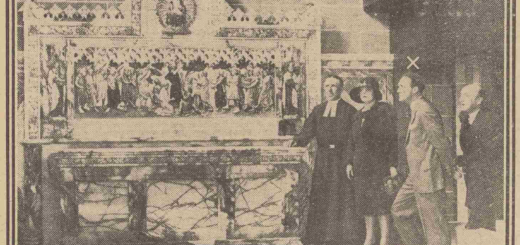
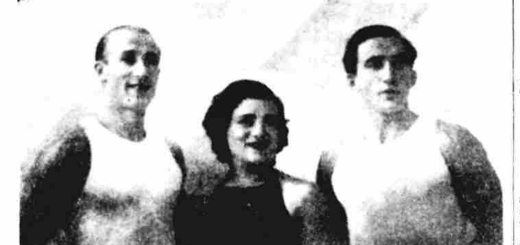
My Mum was in Tower Ballet Sunset Land all those years ago & I followed suit in Children’s Panto with Madame Elsie Williamson & loved it still talk bout it to this dance !
It’s quite a new subject for me, and I focussed on Pauline Rivers, but I think Madame Williamson was at least originally involved in the Winter Gardens pantos? – and I think my mother-in-law, too in those. Great memories for a lot of people!
Very interesting read I was in tower ballet many years later 67/68/69 under miss Joan David and miss Mary Creagan Happy days
Thanks. It does sound like it was great fun for all involved!
I very much enjoyed reading this article, particularly as you mention my great grandfather Frederick Sinfield and his daughters Nellie and Marion (Marie) my great aunts who I remember so fondly from childhood.
I have some photographs of them and a beautiful hand written letter of condolence from Pauline Rivers who wrote to my grandmother, Gladys when my father’s sister, also called Marion and a keen ballet dancer was killed by a bus in 1937. I’d be happy to share them with you.
I’m glad it was an enjoyable read and you were able to make a connection. After all it’s the people that make the story and I’m only a compiler. It would be wonderful to see the photos, and the very sad story of your aunty. Thanks for offering to share them. If I could add them to the story at your discretion, I would be pleased to do so – and credited to you of course if that’s what you would want. In return I could share the little bits of primary source information I used if you don’t already have it. The diddycup email will reach me.
Ver very interesting read for me. My great grandfather was Joseph Woof Gaggs, he didn’t have a son called Arthur though. Possibly his son Tom?
Thanks for comment Joanne and I have reviewed the Gaggs name via the census returns and see that Arthur is Joseph’s nephew. Joseph Woof’s father Oliver had a brother Joseph who had a son Arthur. Hence the slip up. Thanks for the query. All in the cause of accuracy to respect the lives of others. I have changed ‘son’ to ‘nephew’ in the script and am happy to further credit this to you in name if you want me to.
Regards
Colin Reed